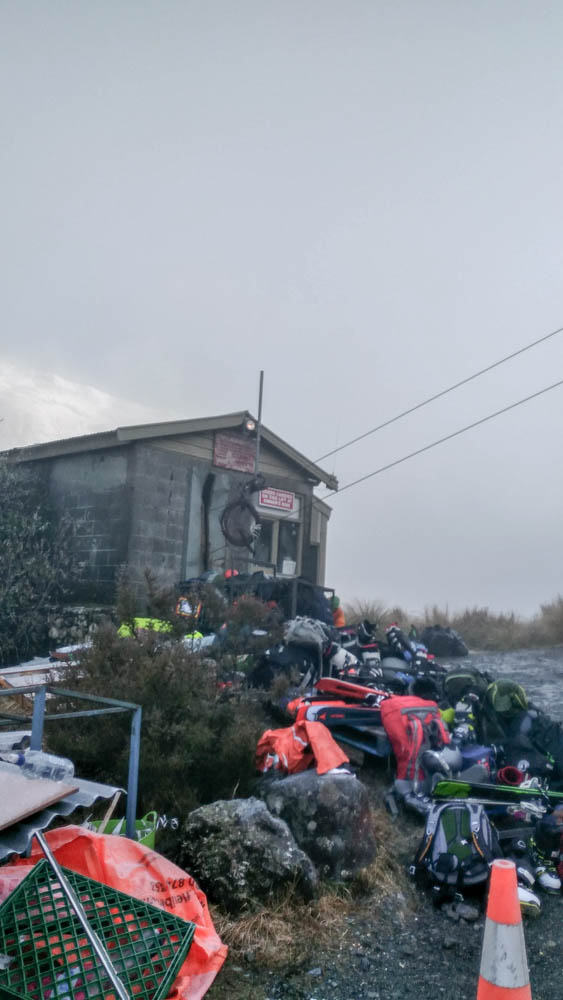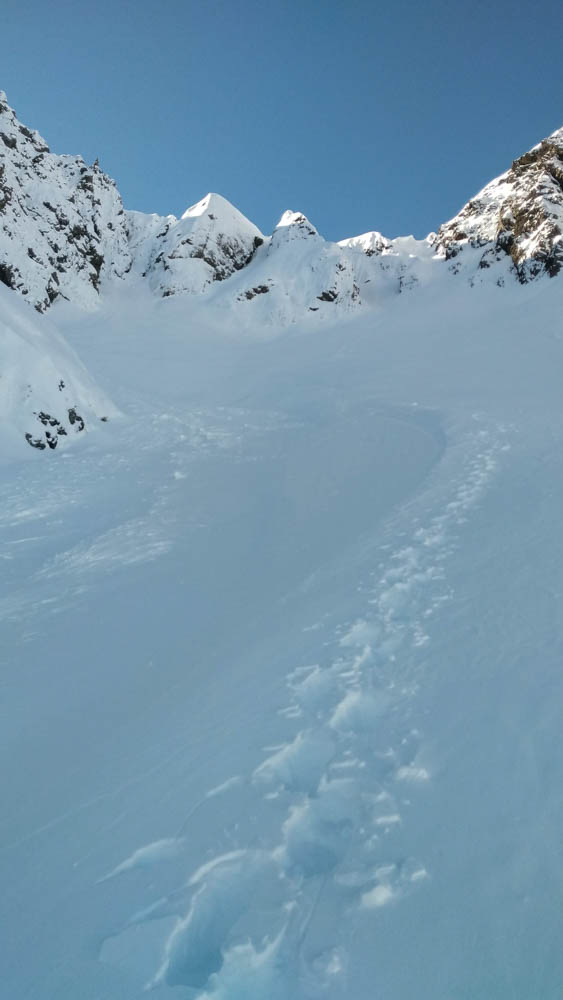A Southern Send-Off
With a tear in my eye, it’s my last post from New Zealand! Good thing I got some powdery turns to help me get over it.
These Snowy Alps
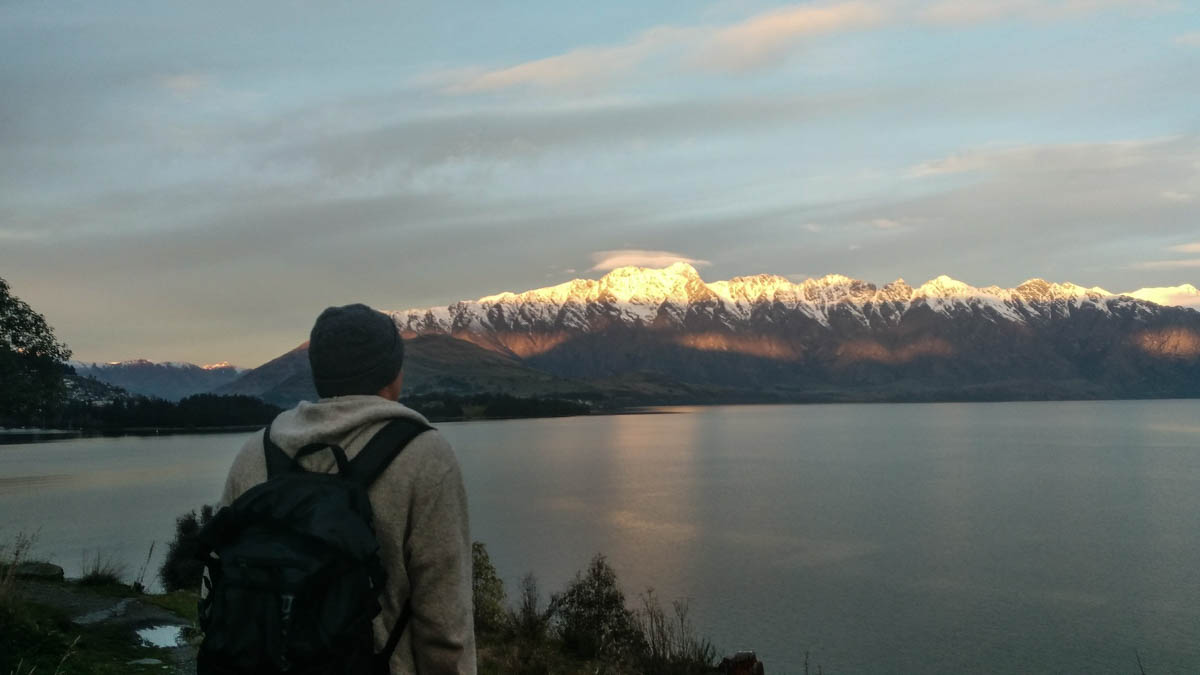
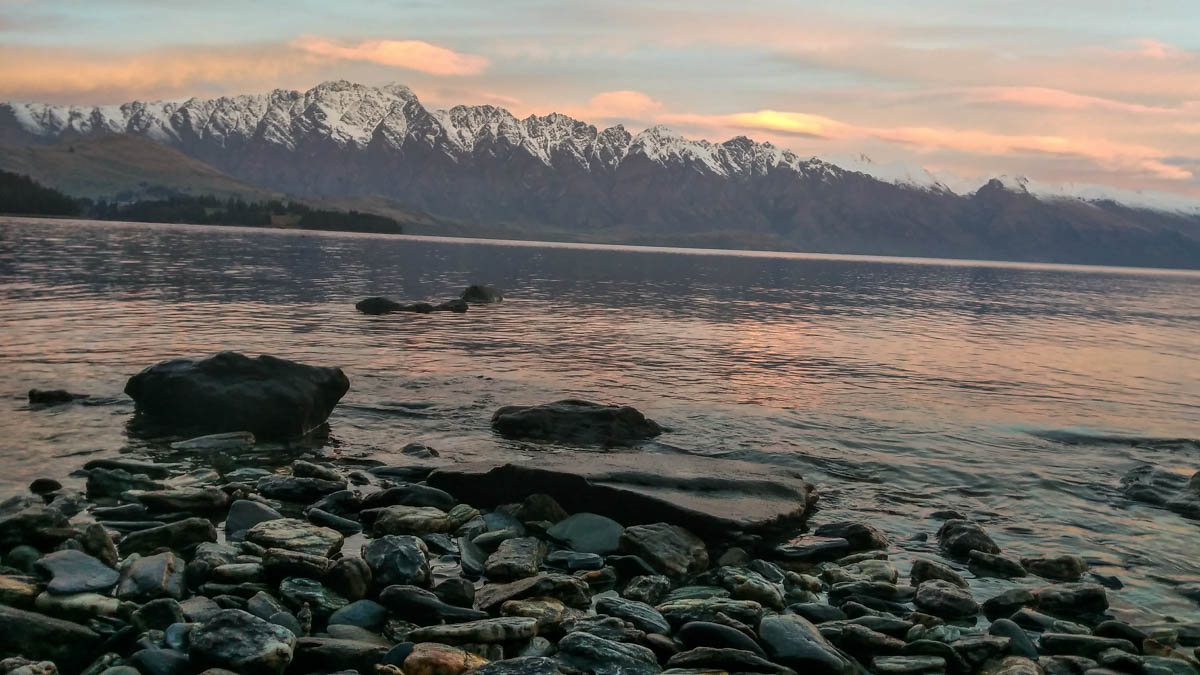
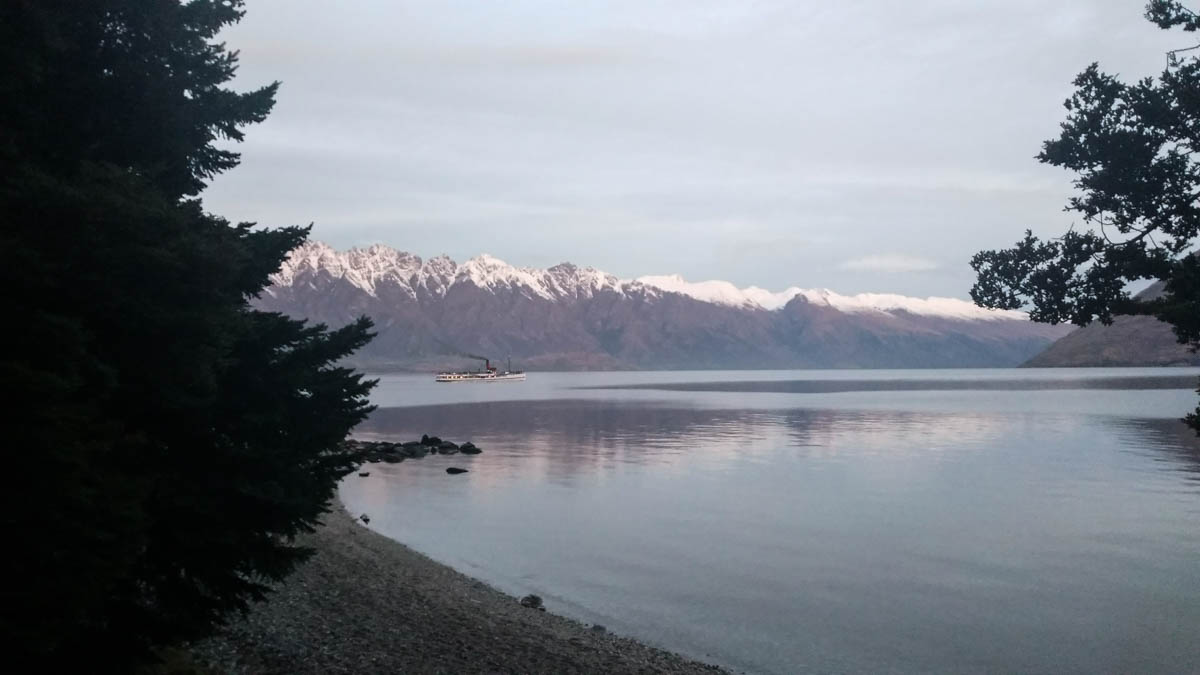
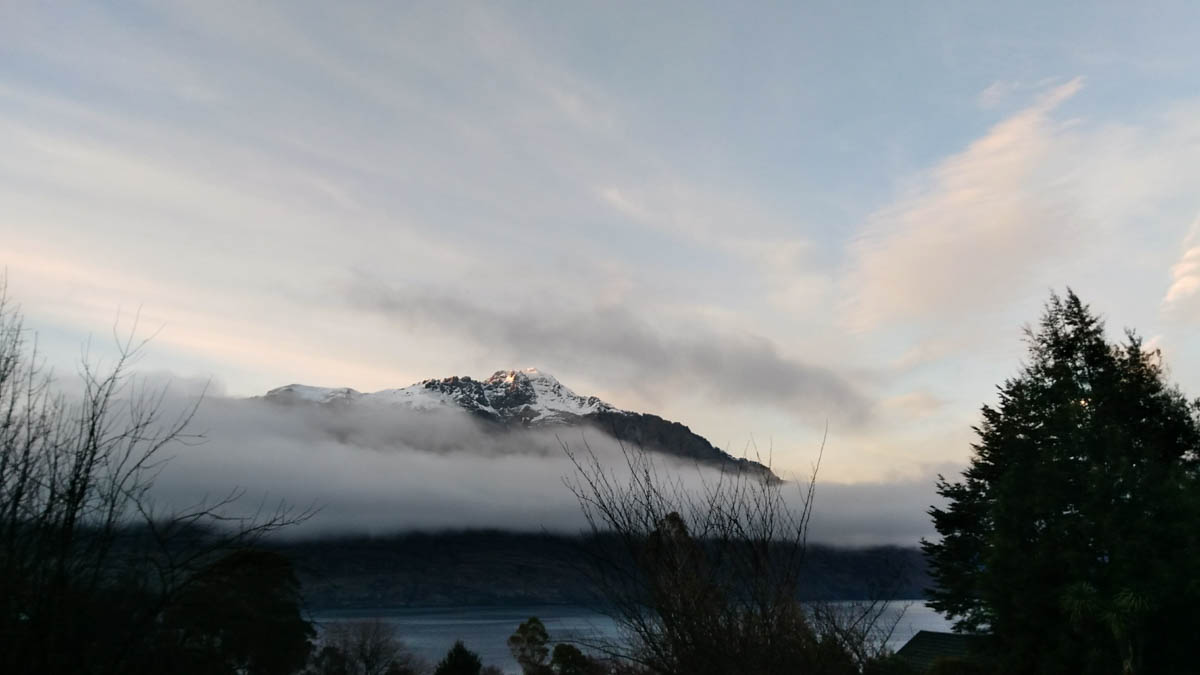
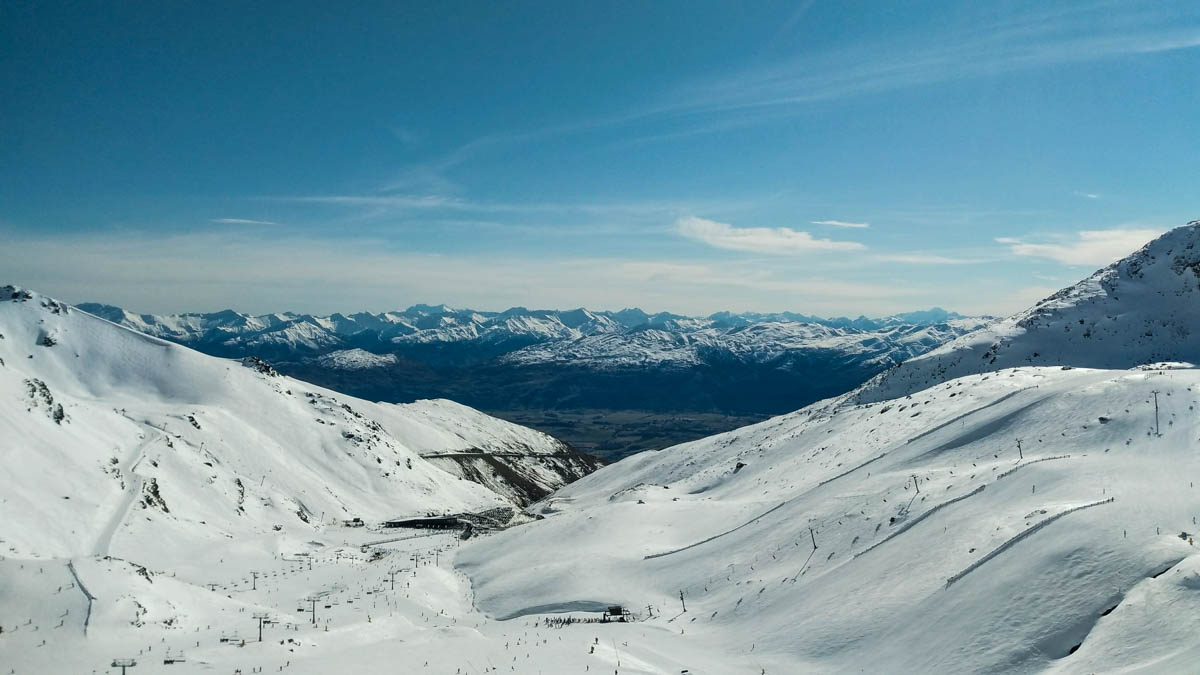

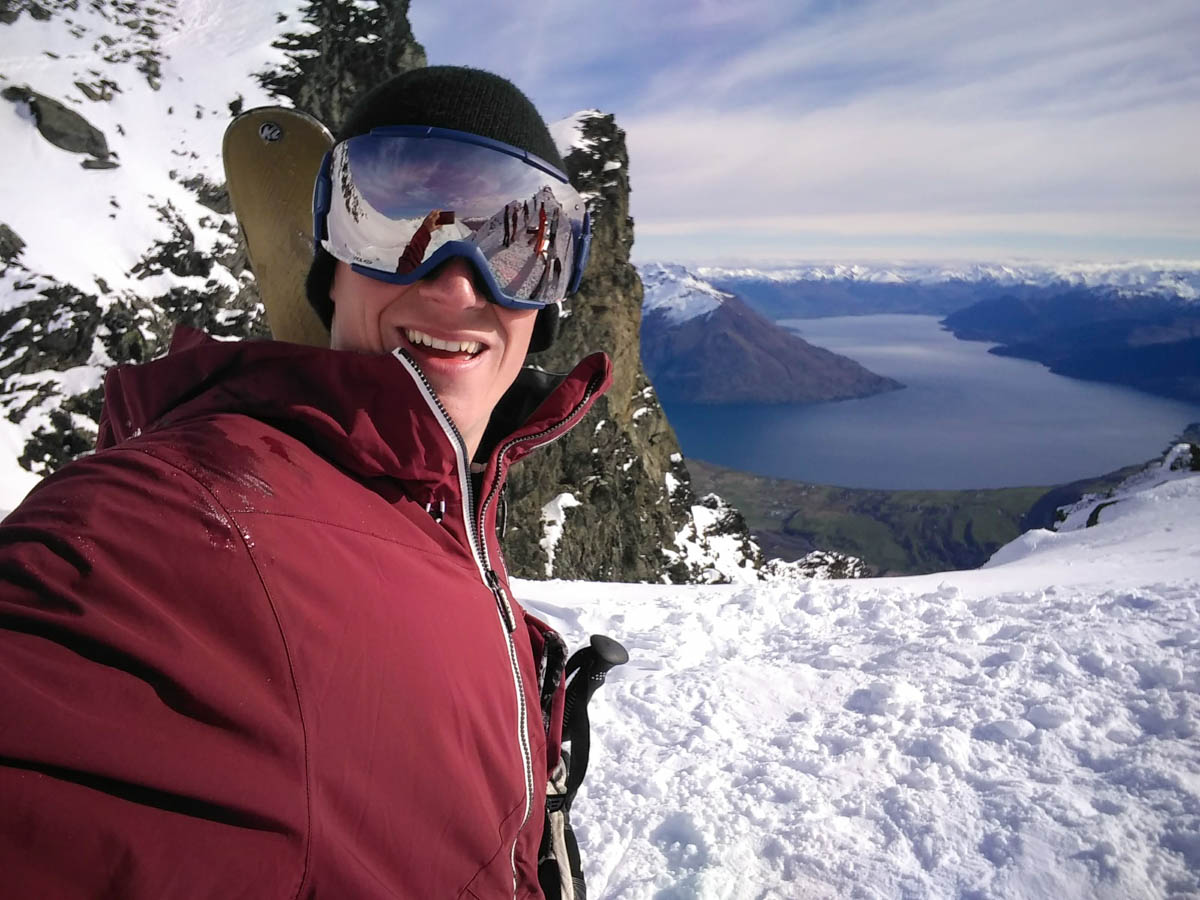
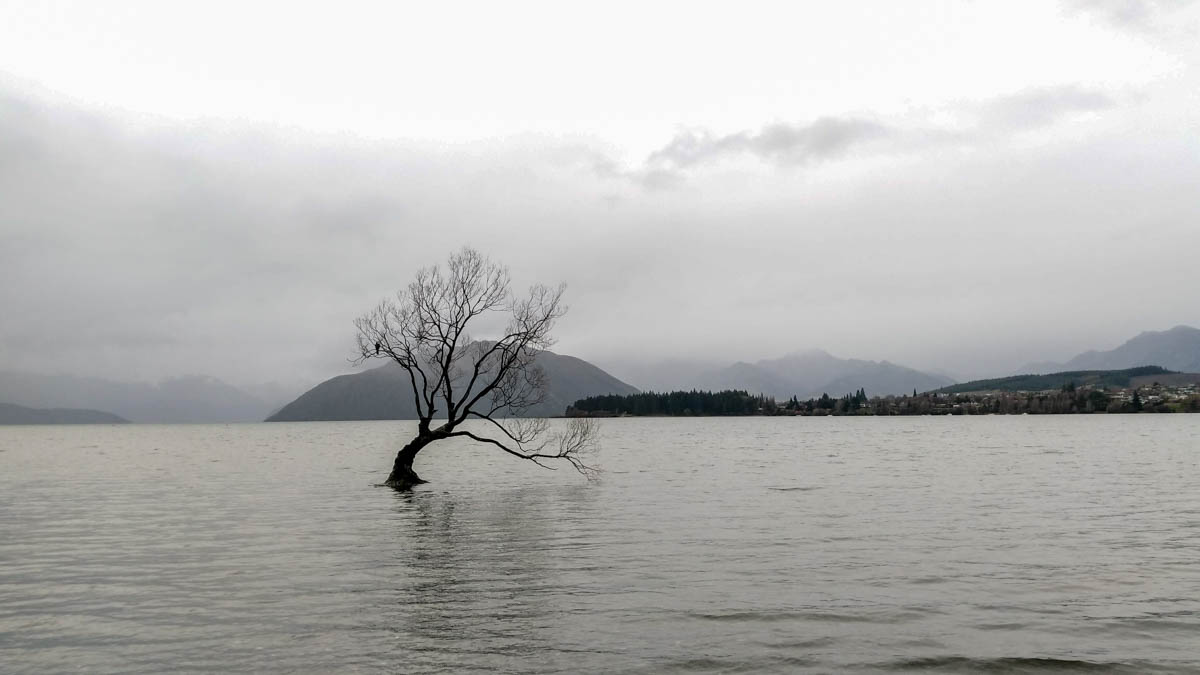
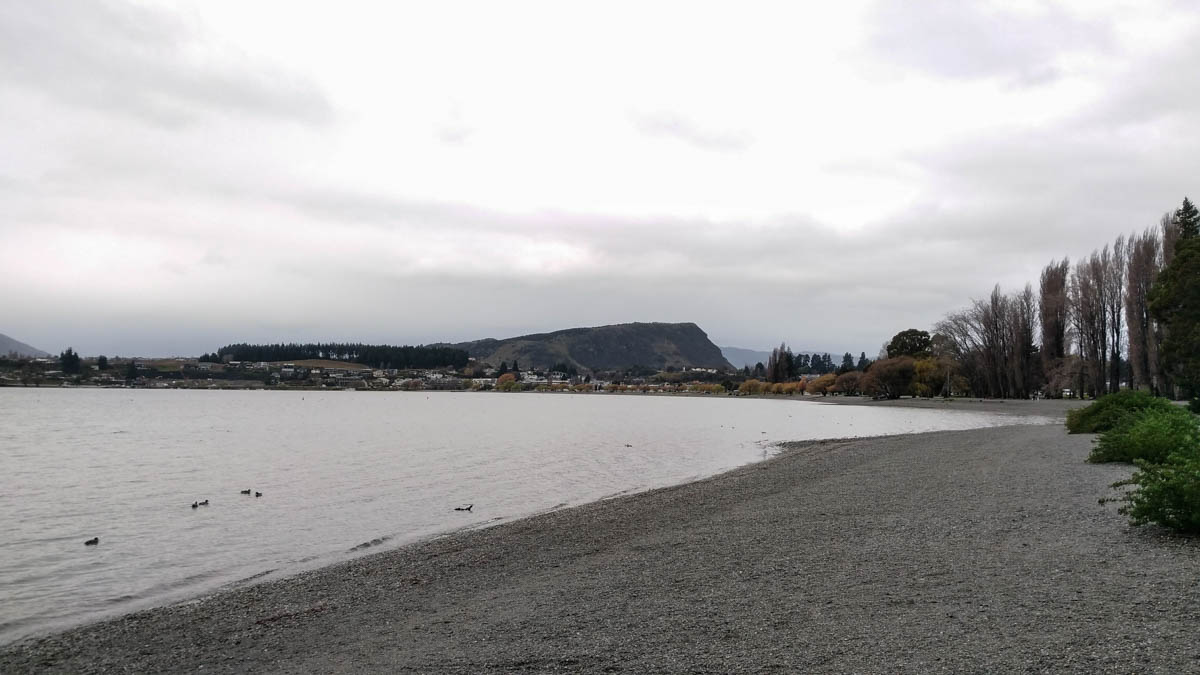
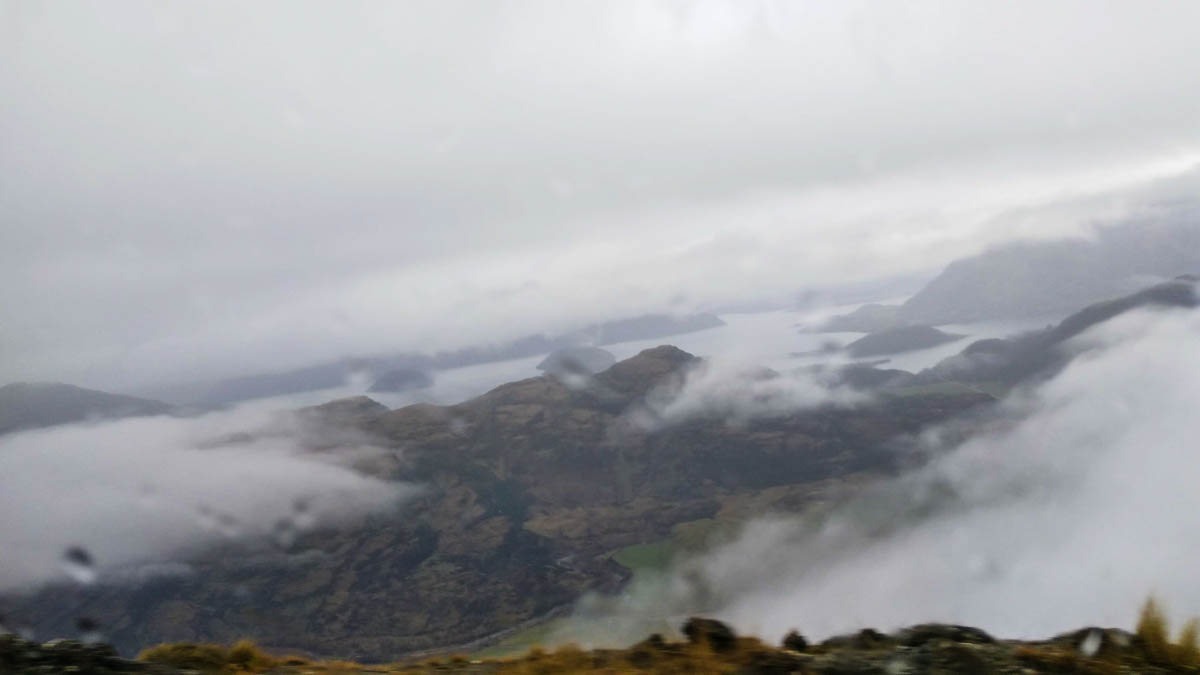

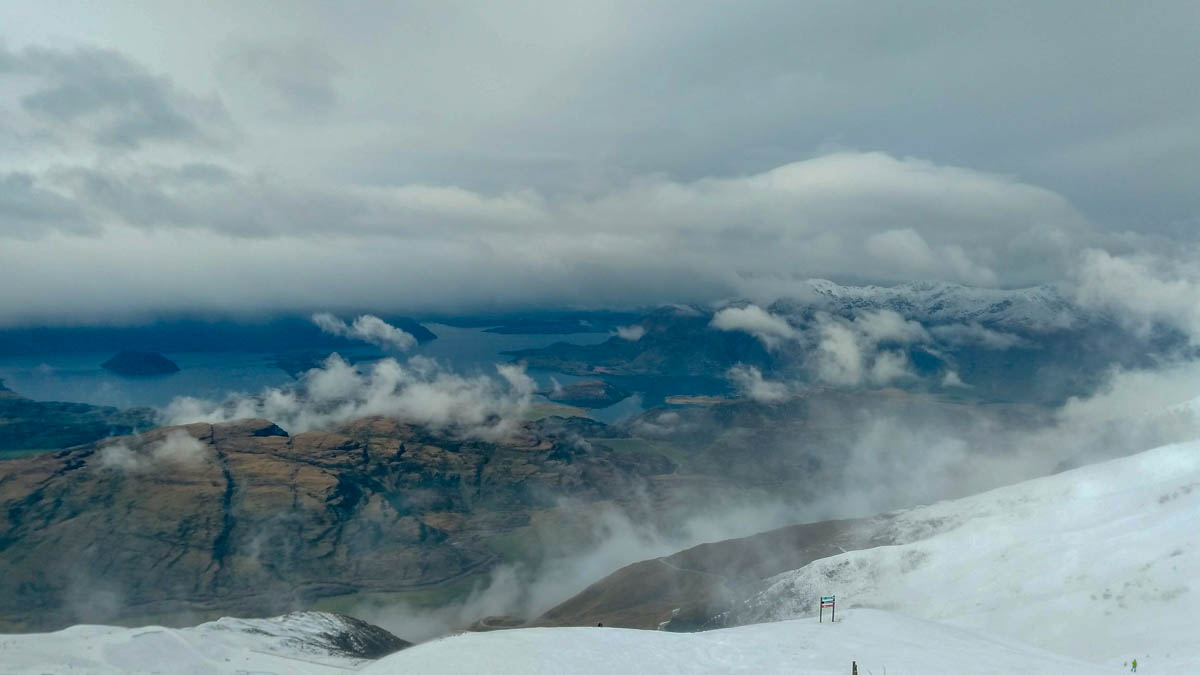
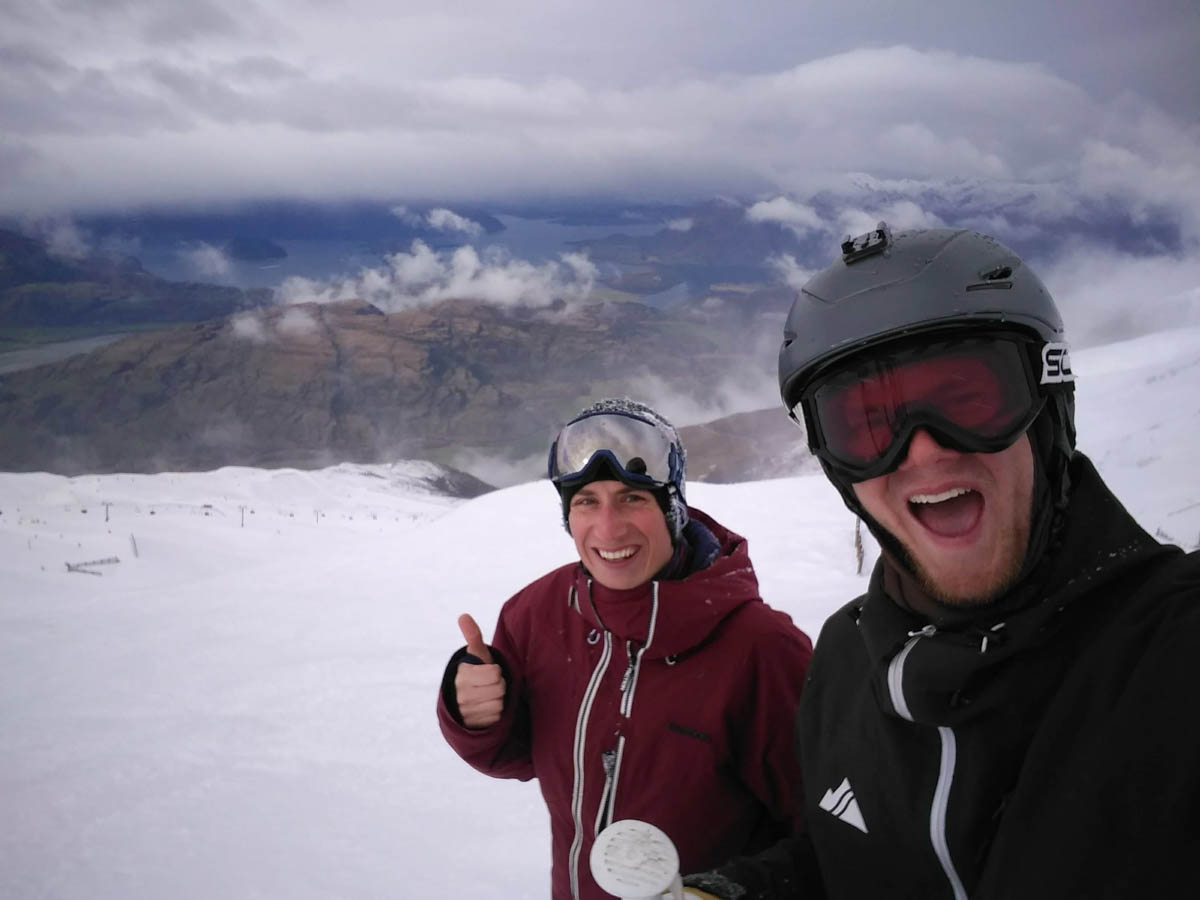
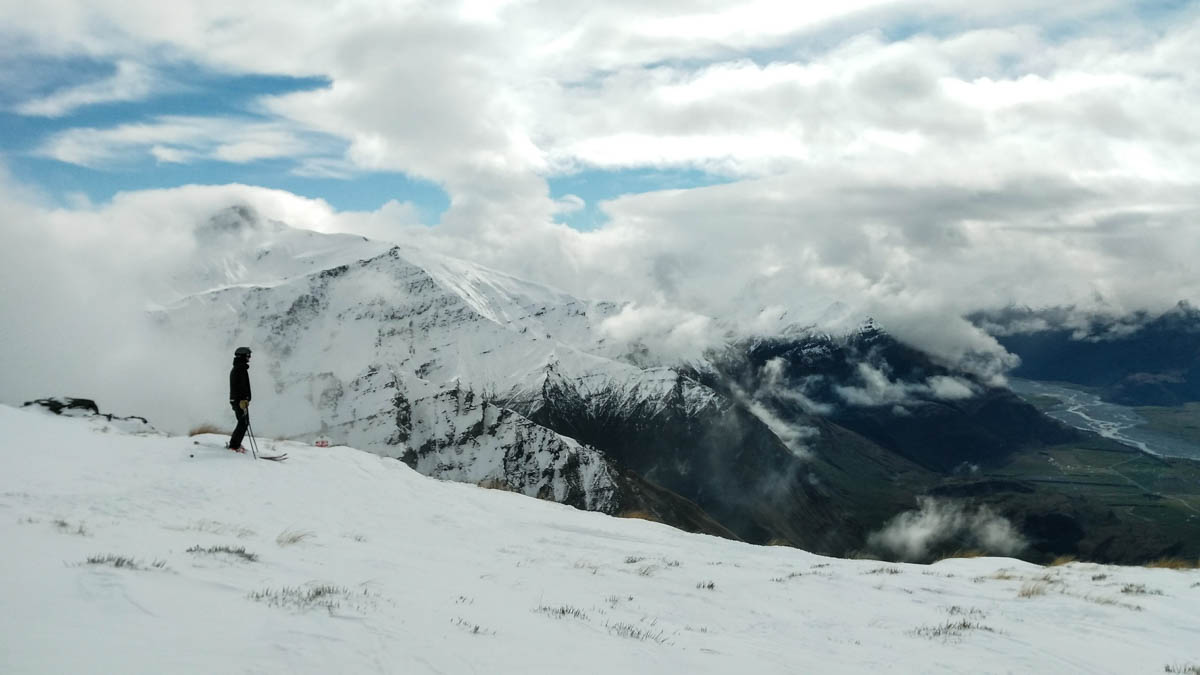
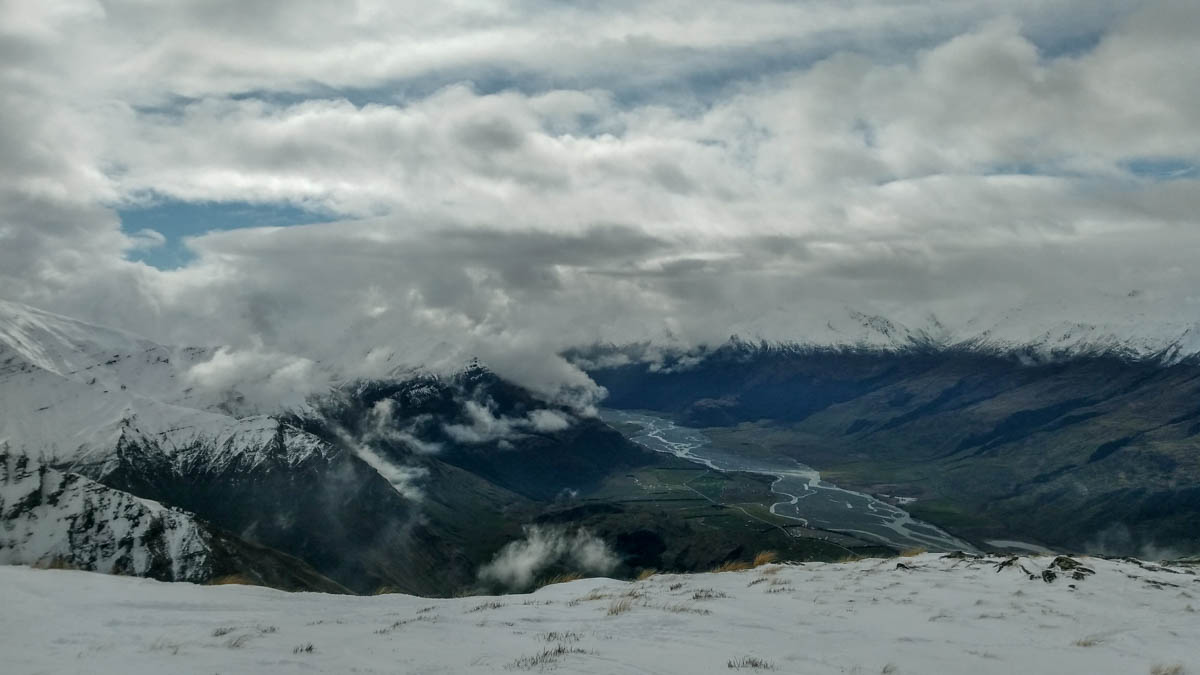
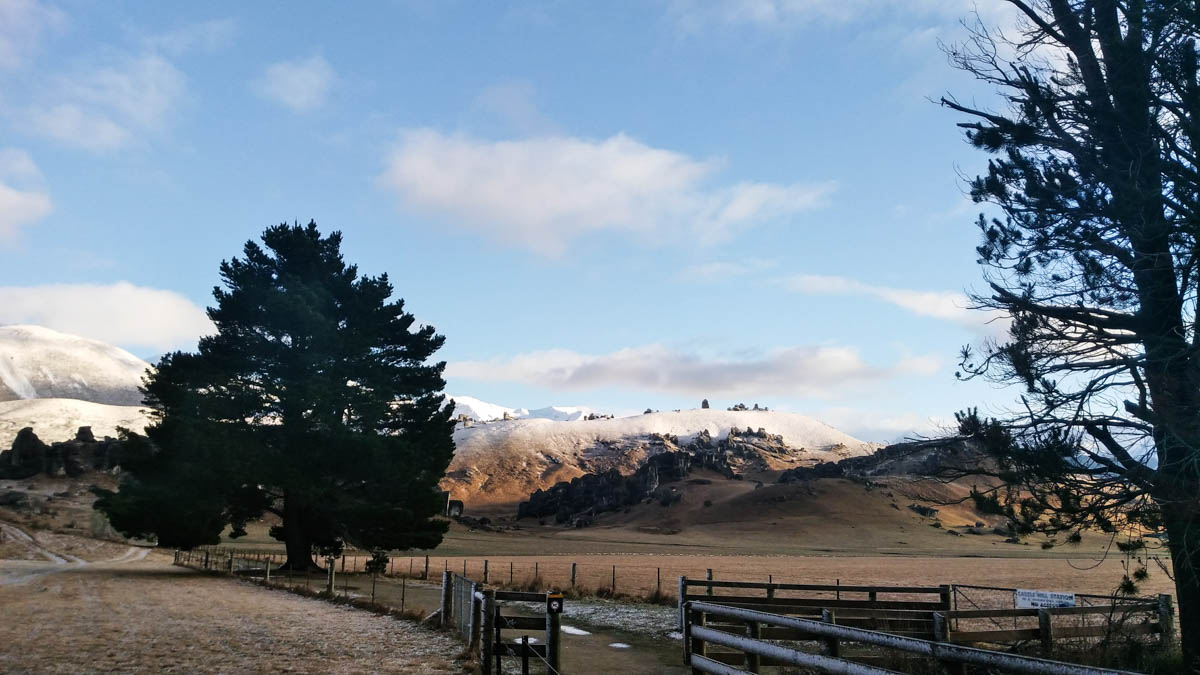
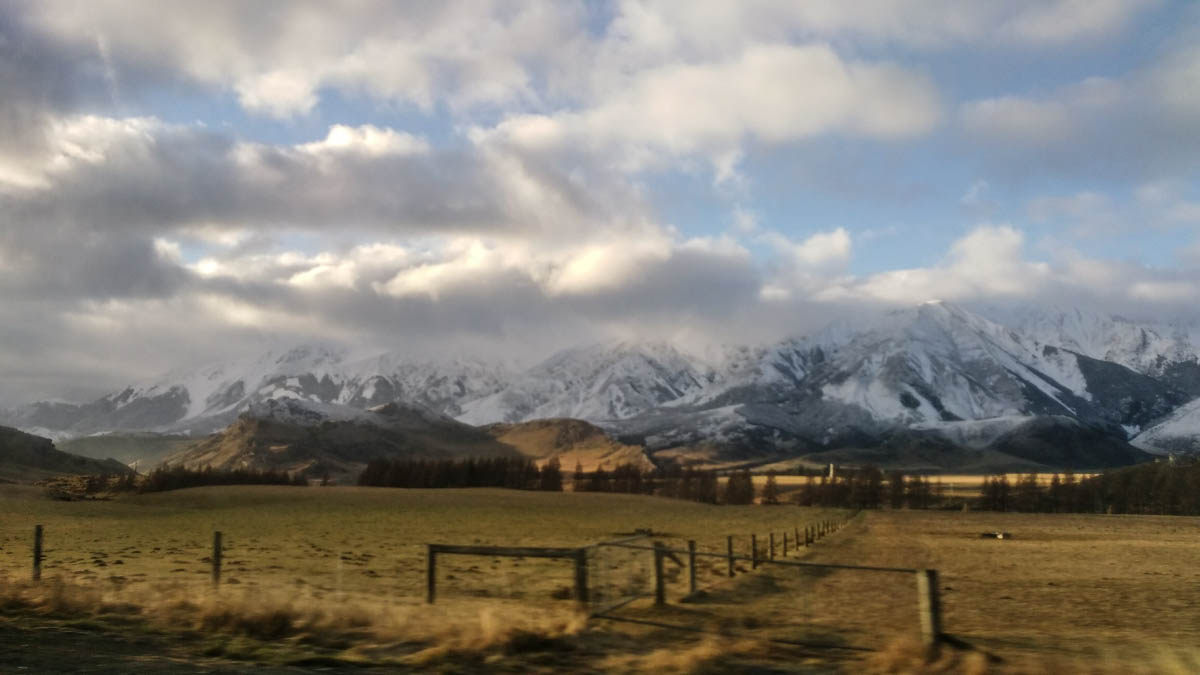
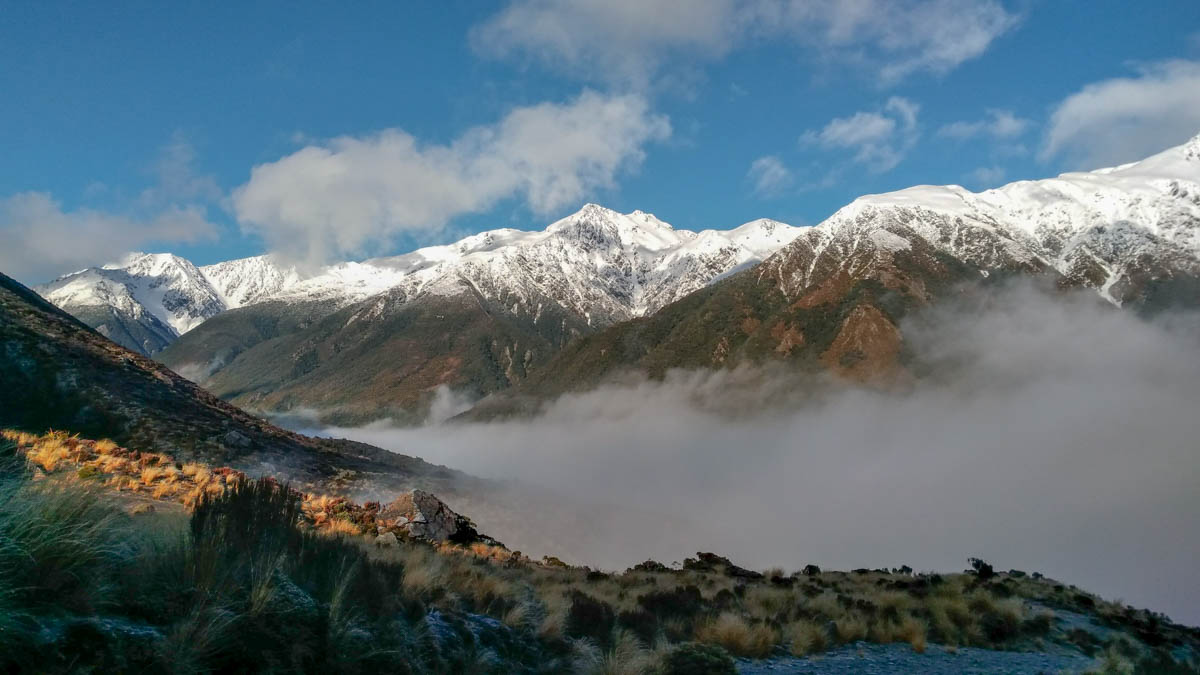
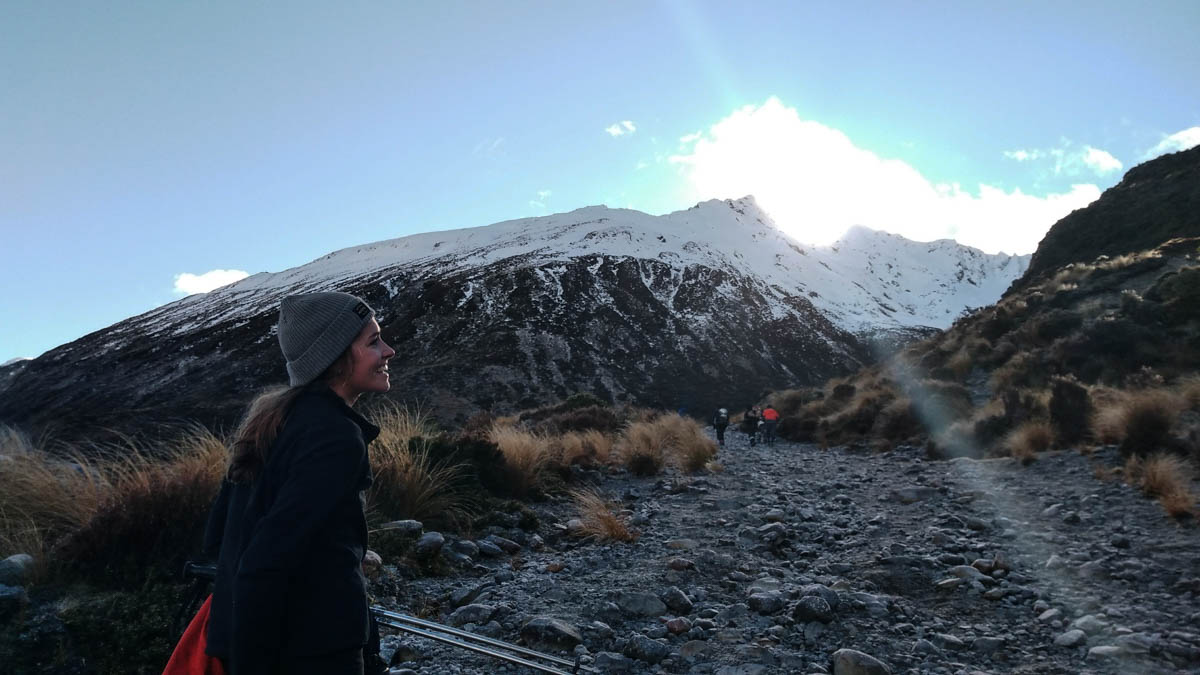
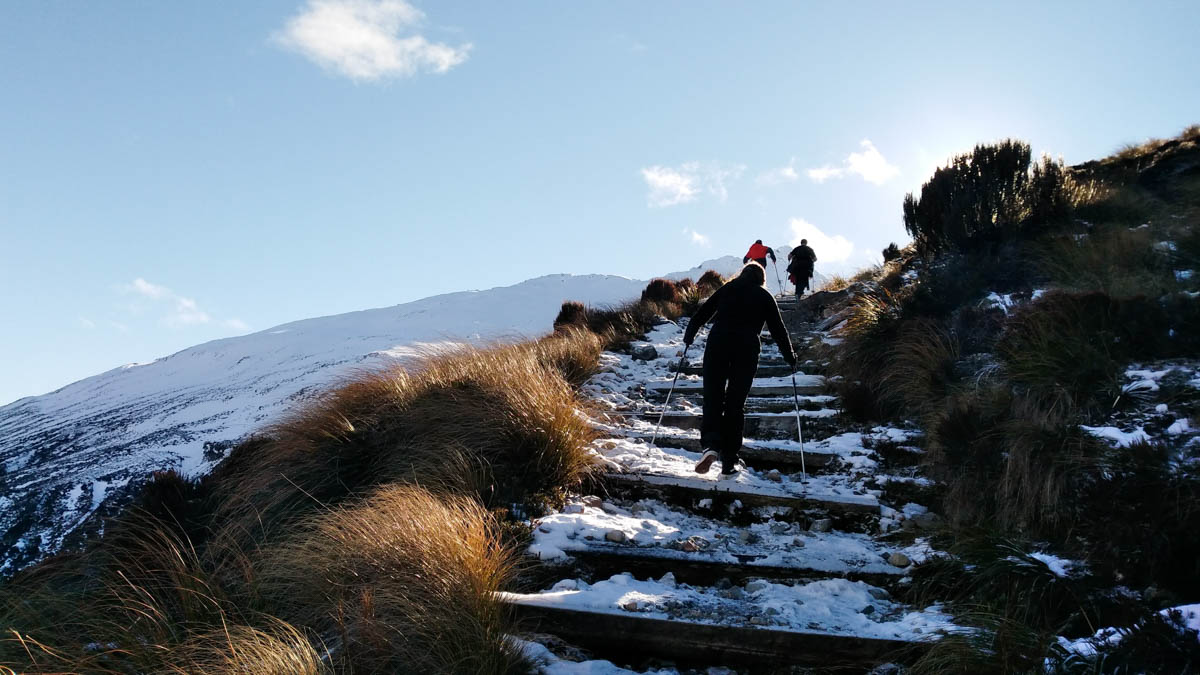
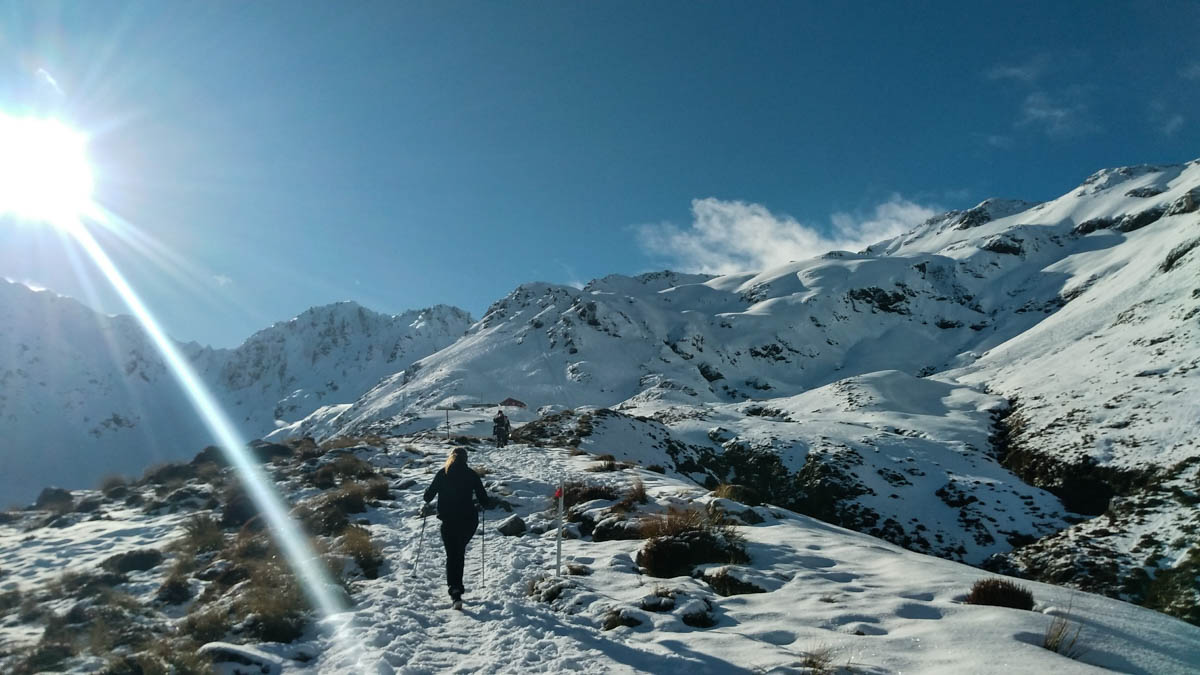
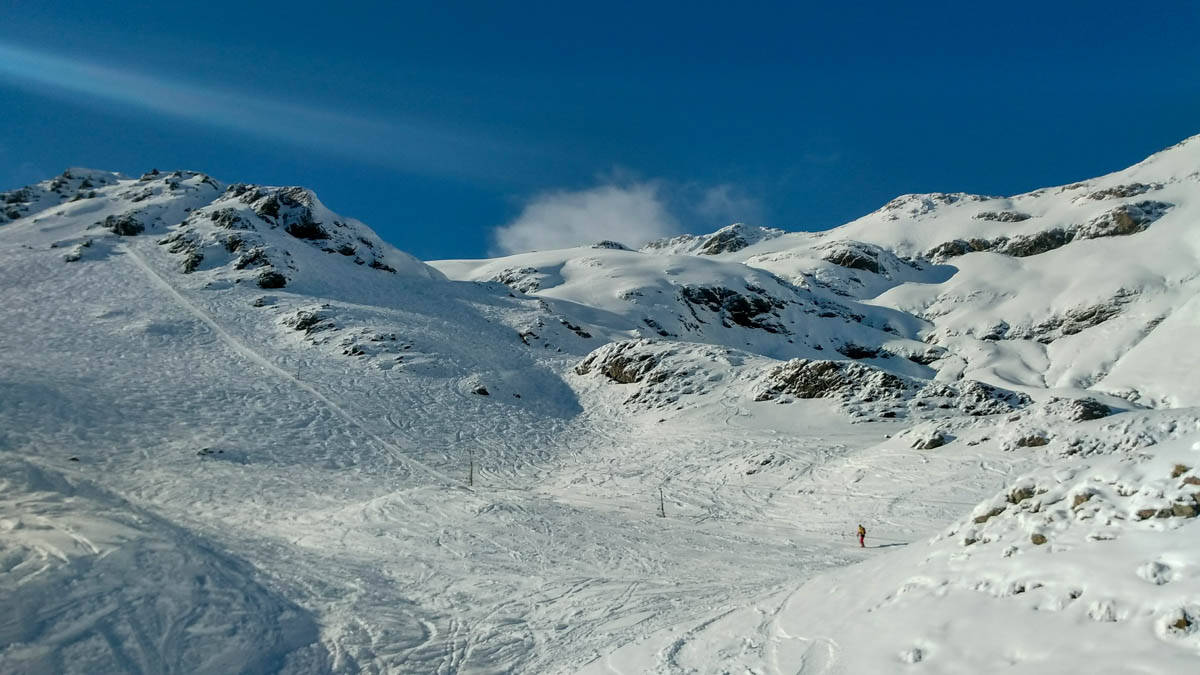
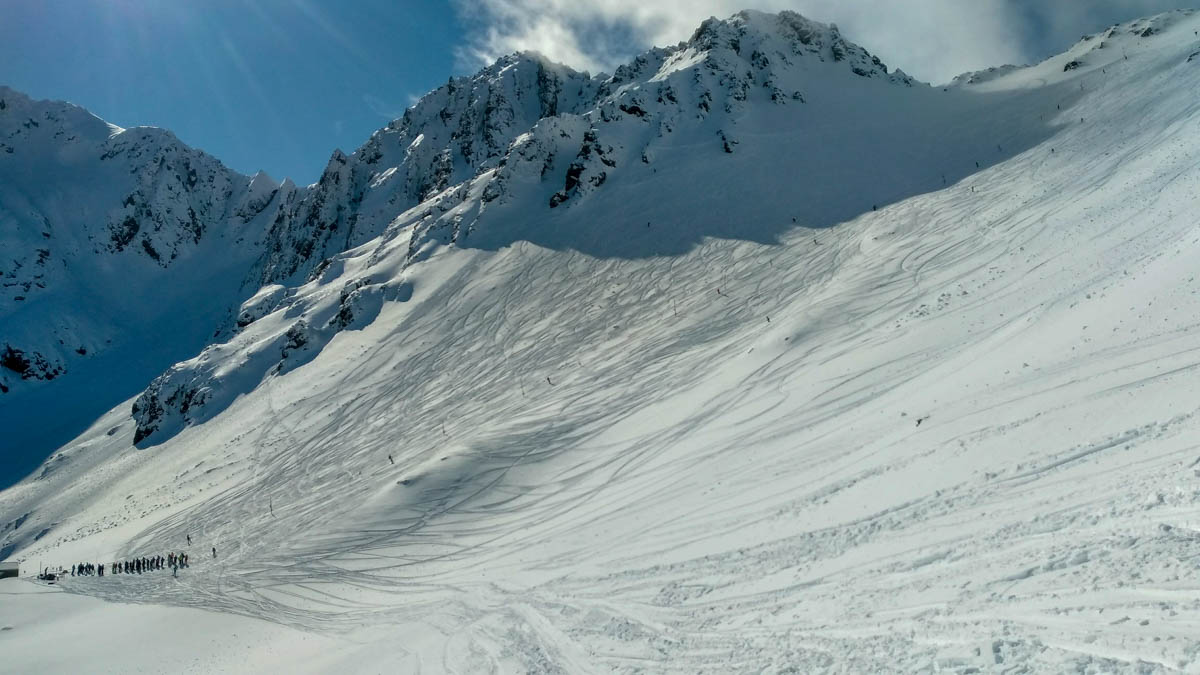
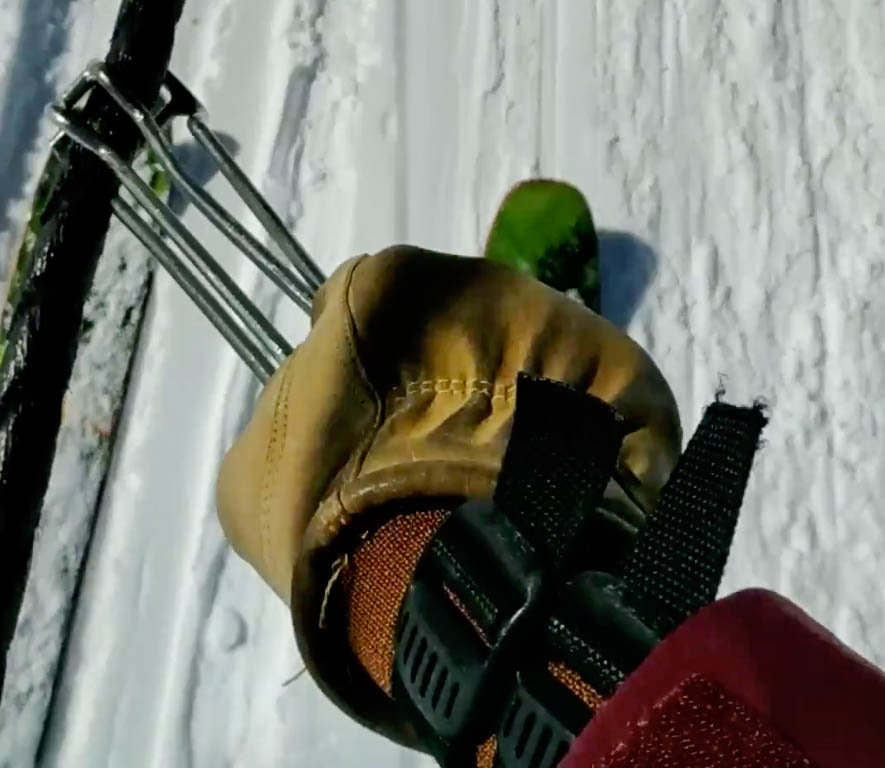
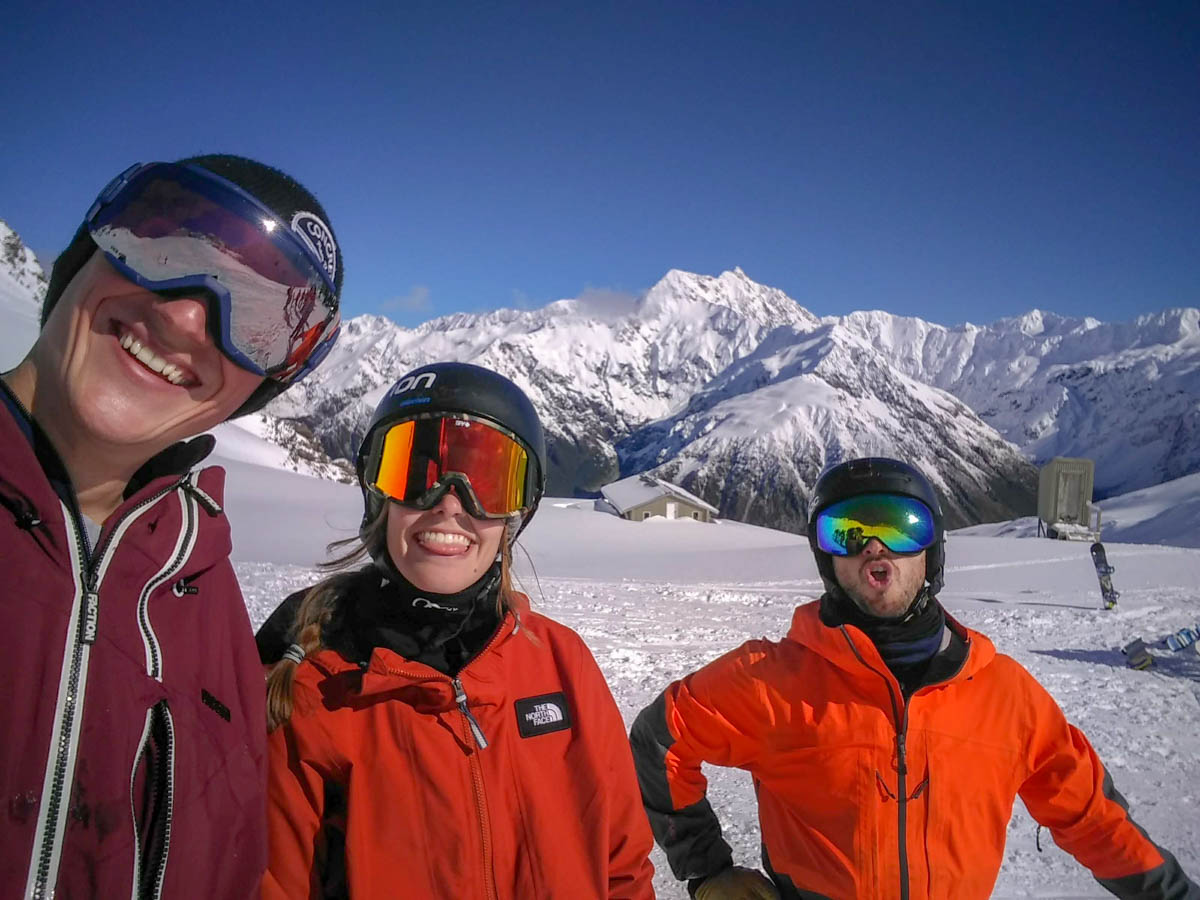
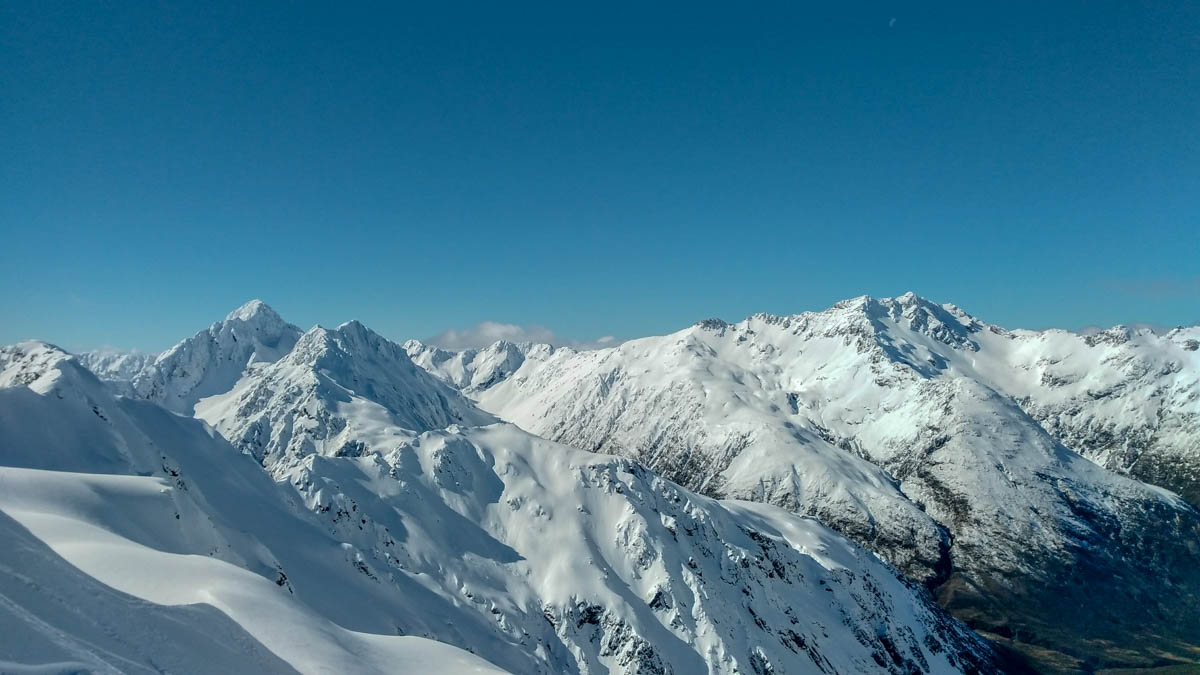

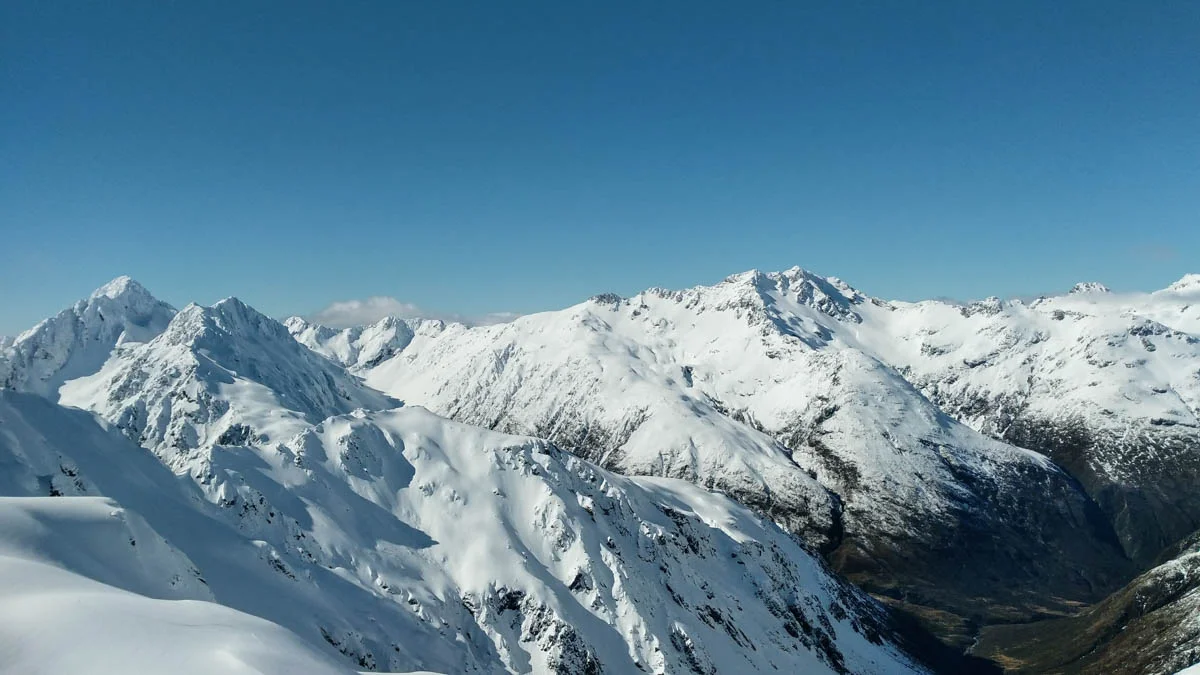
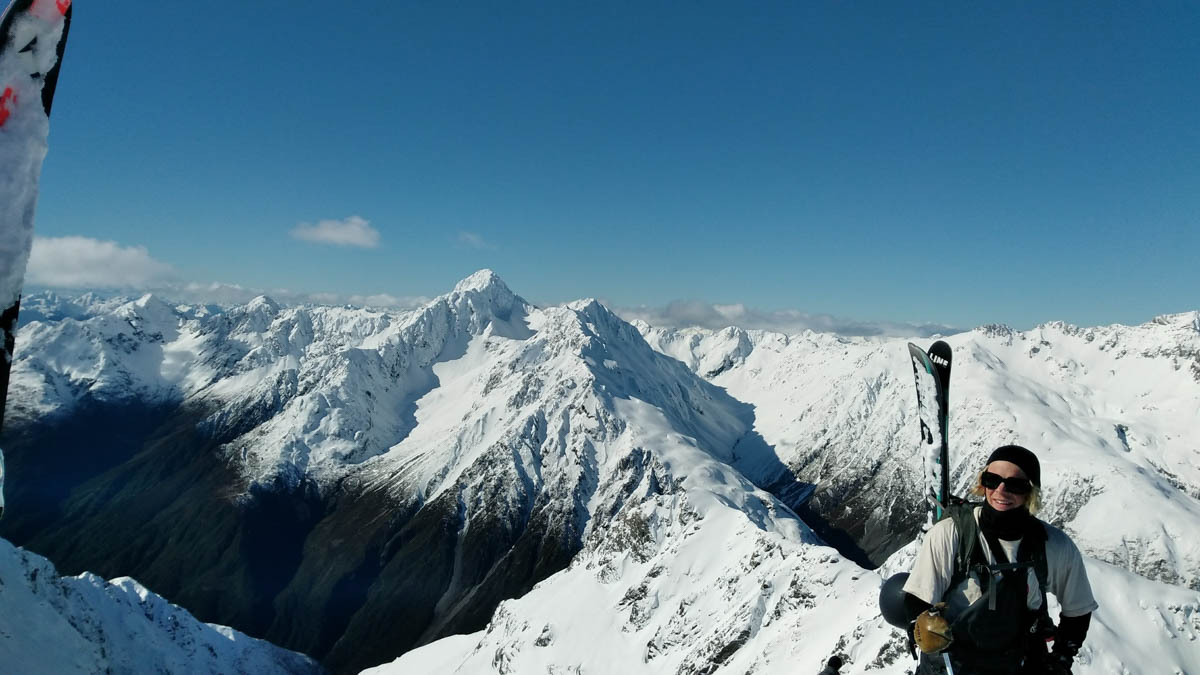
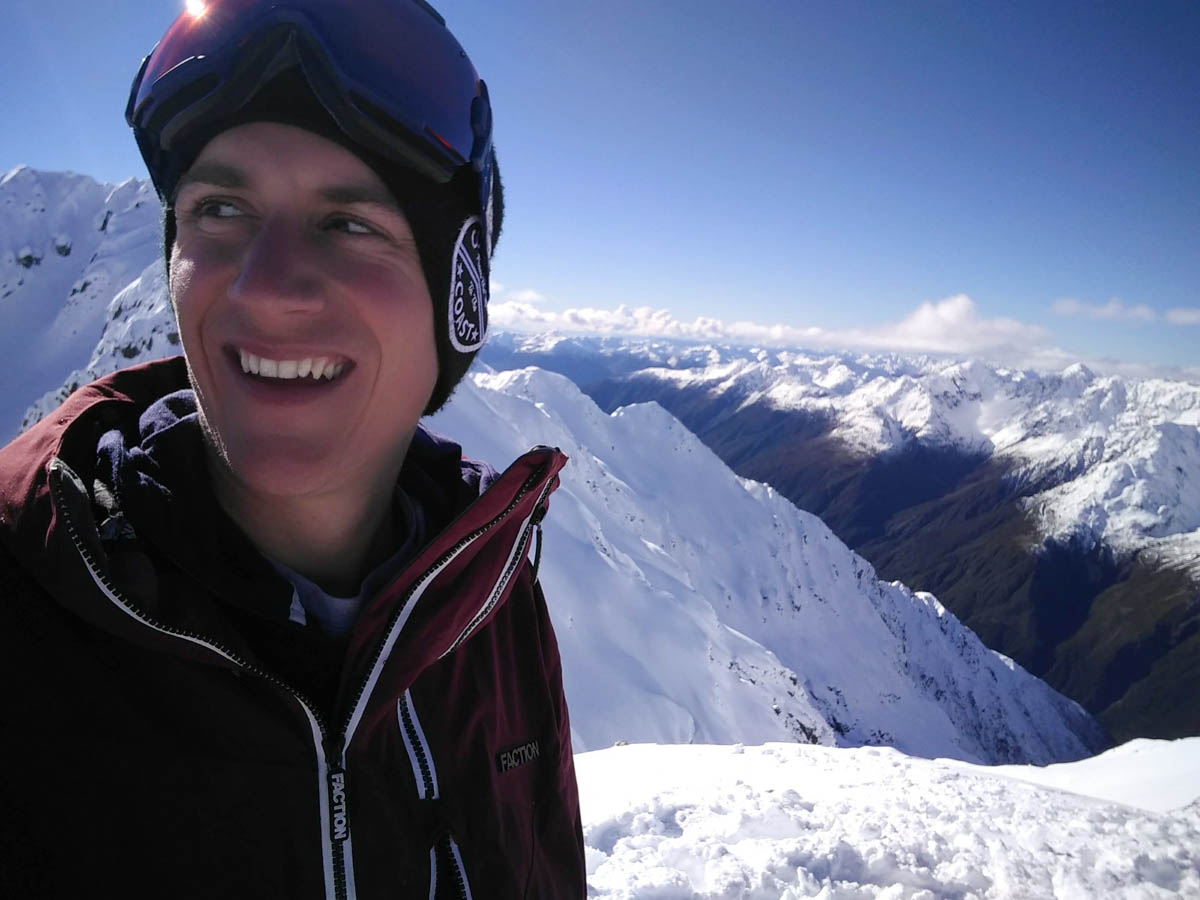
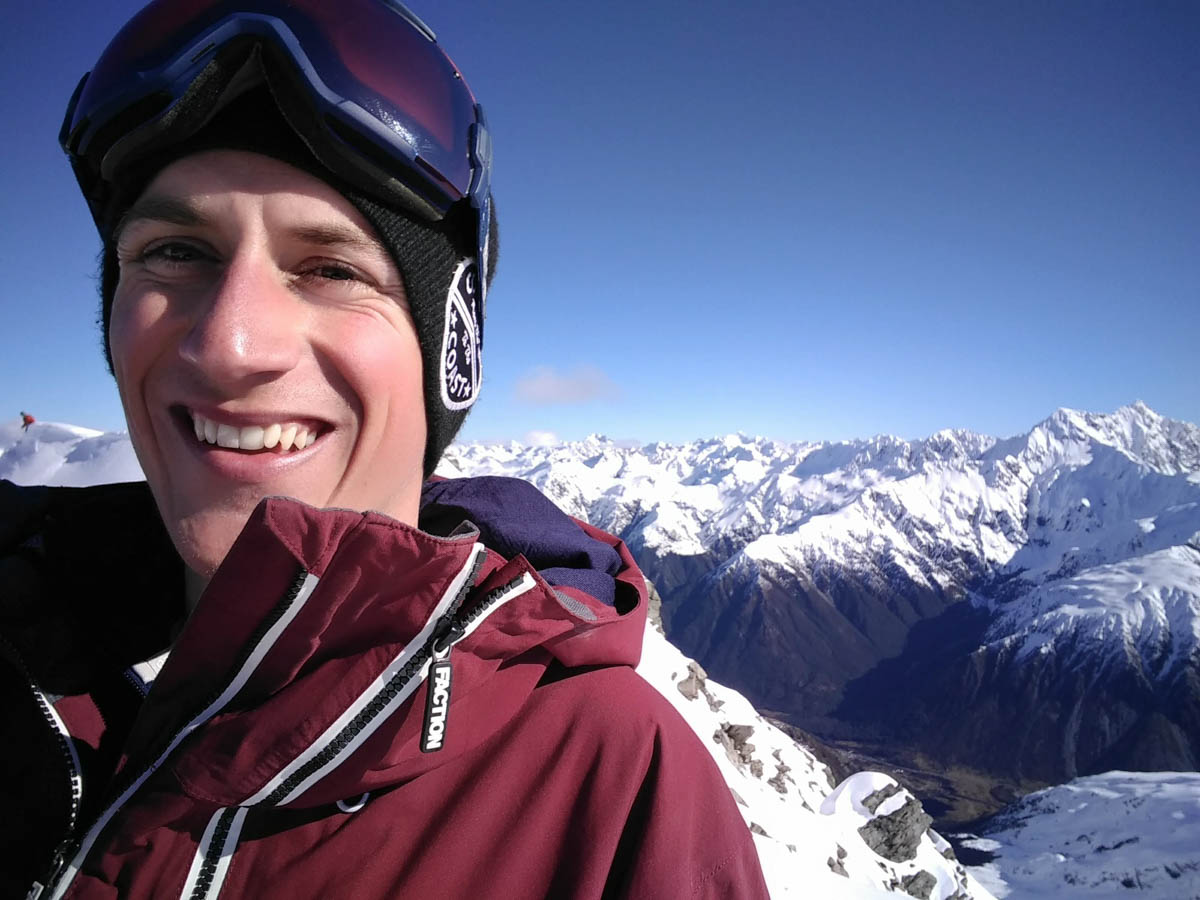
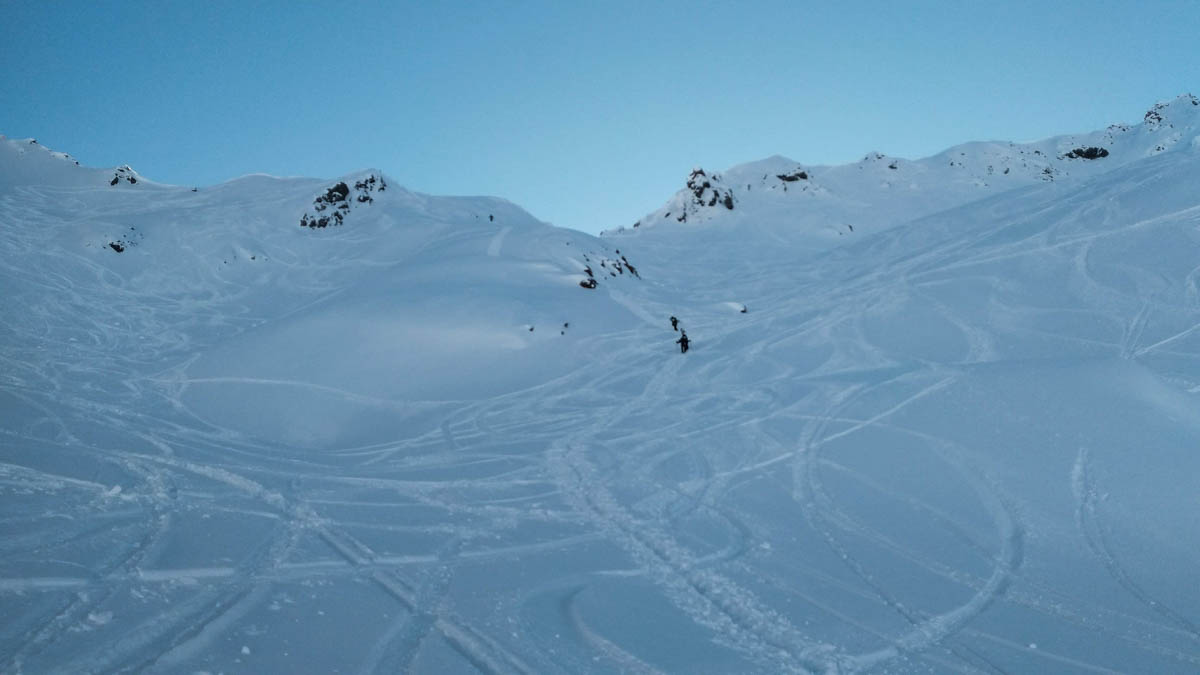
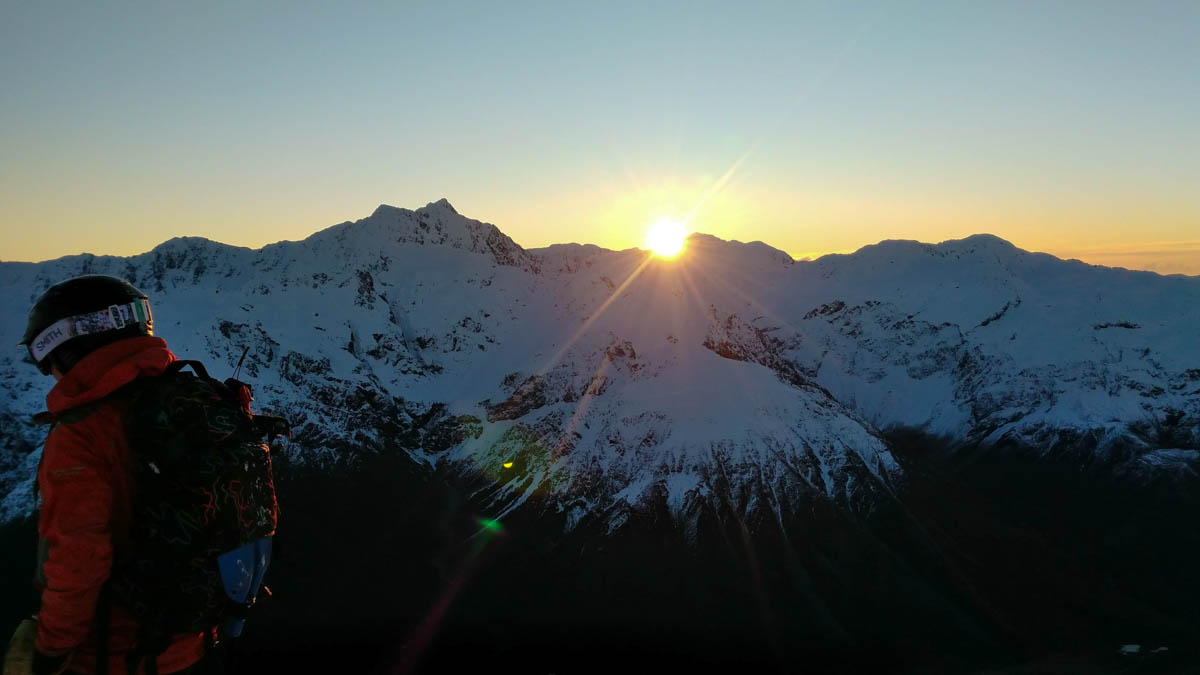
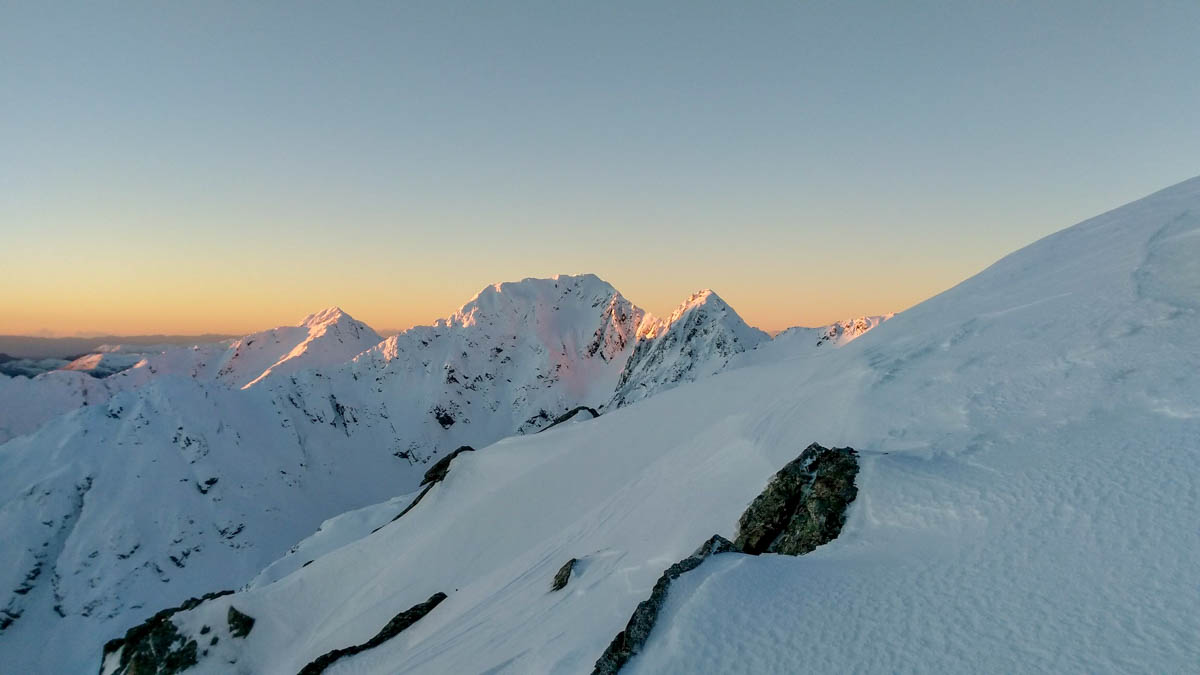
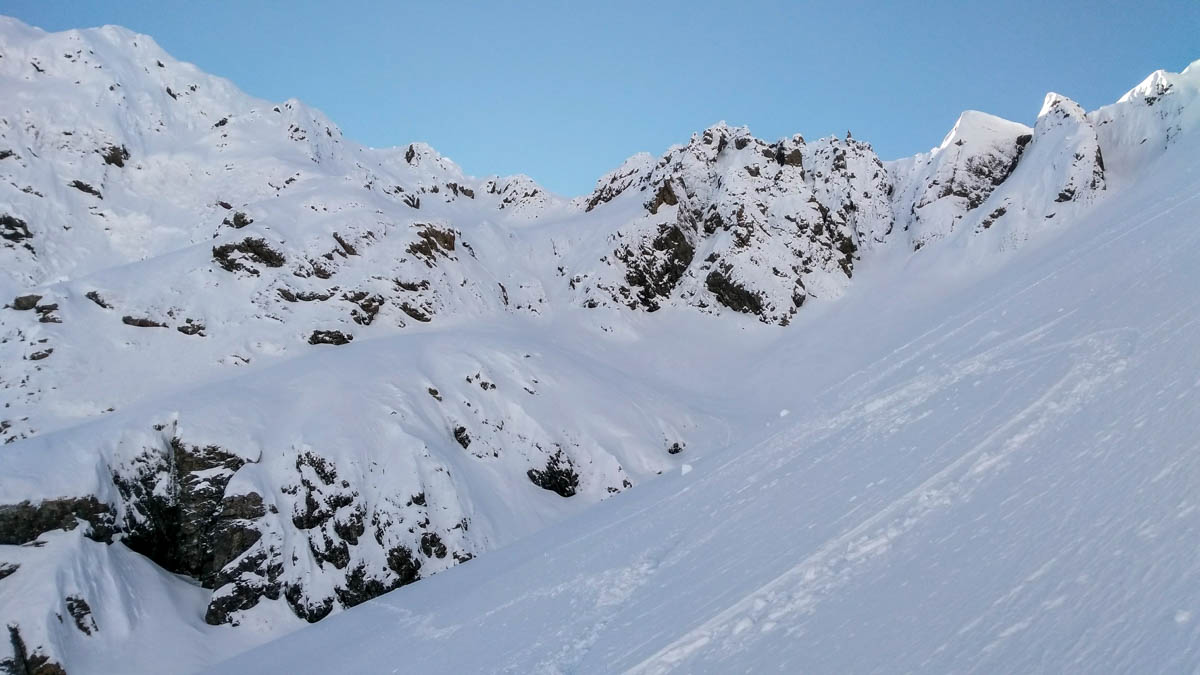
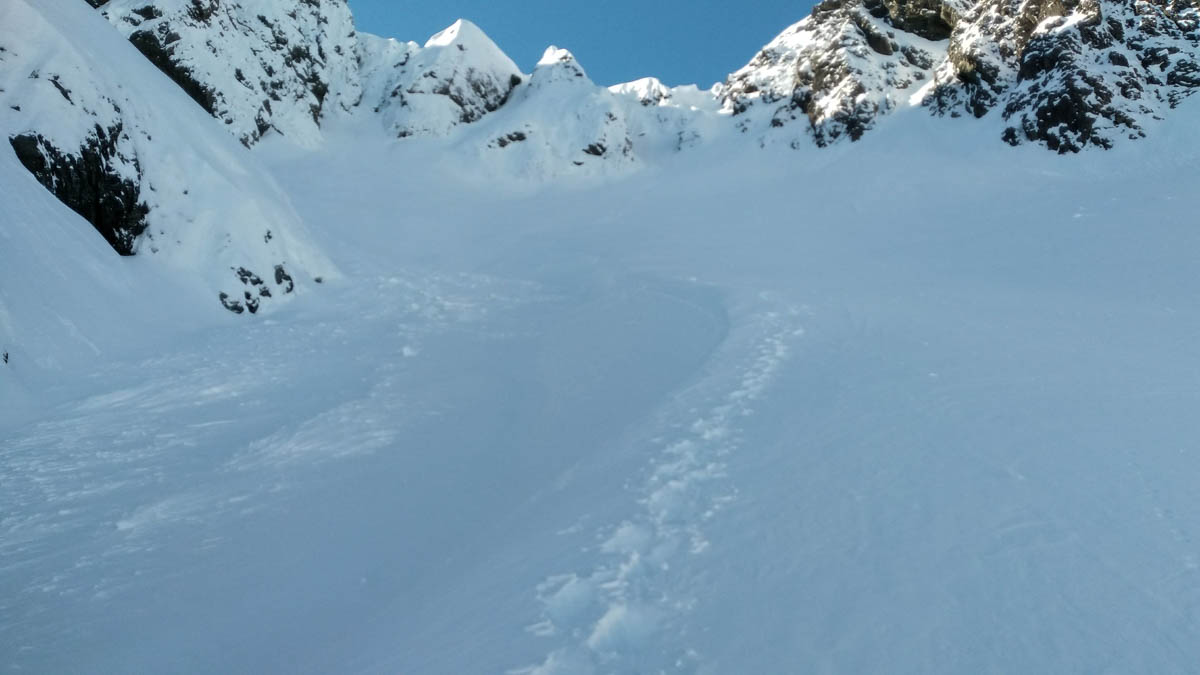
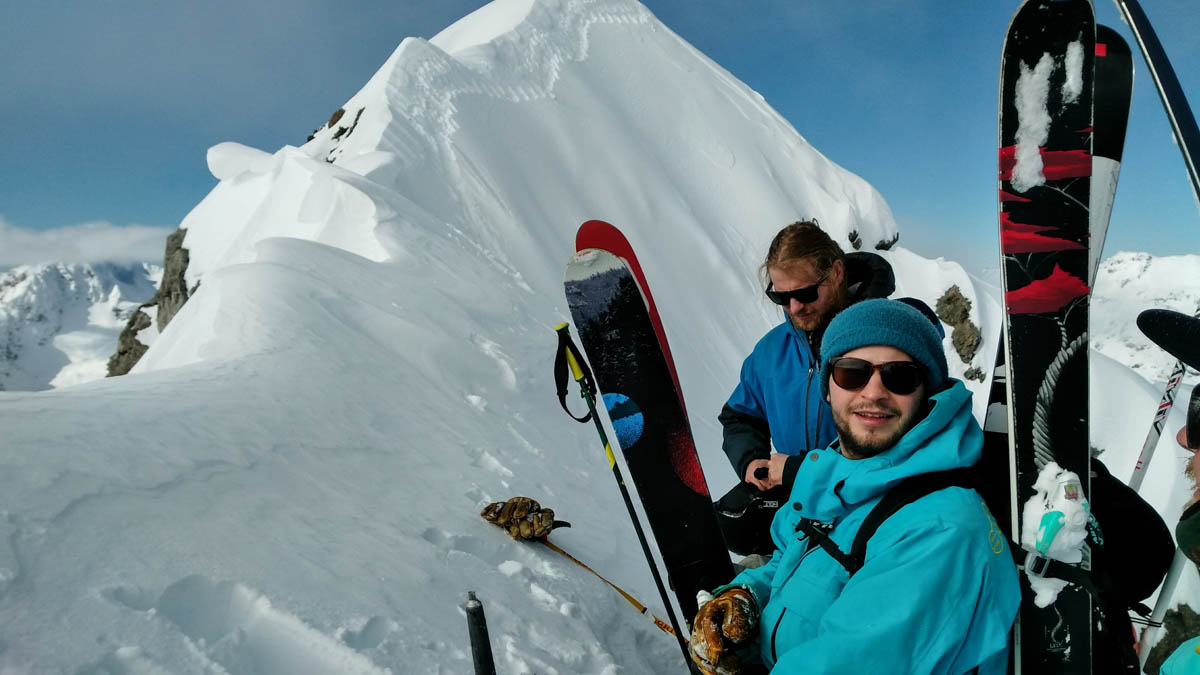
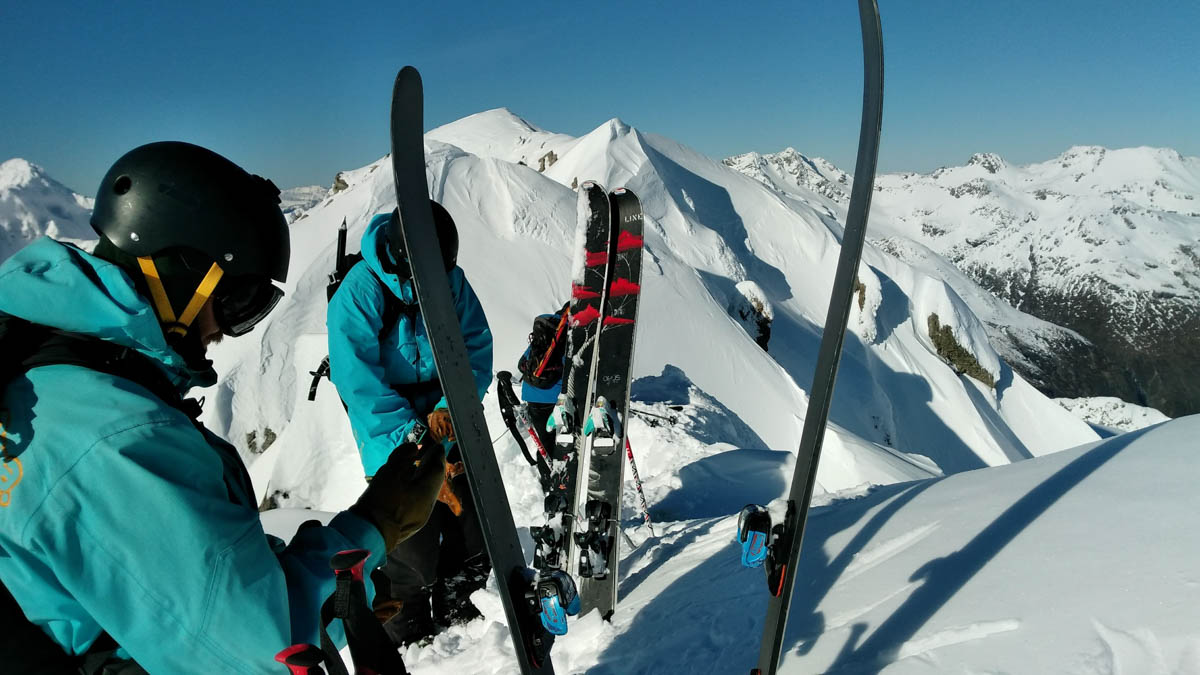
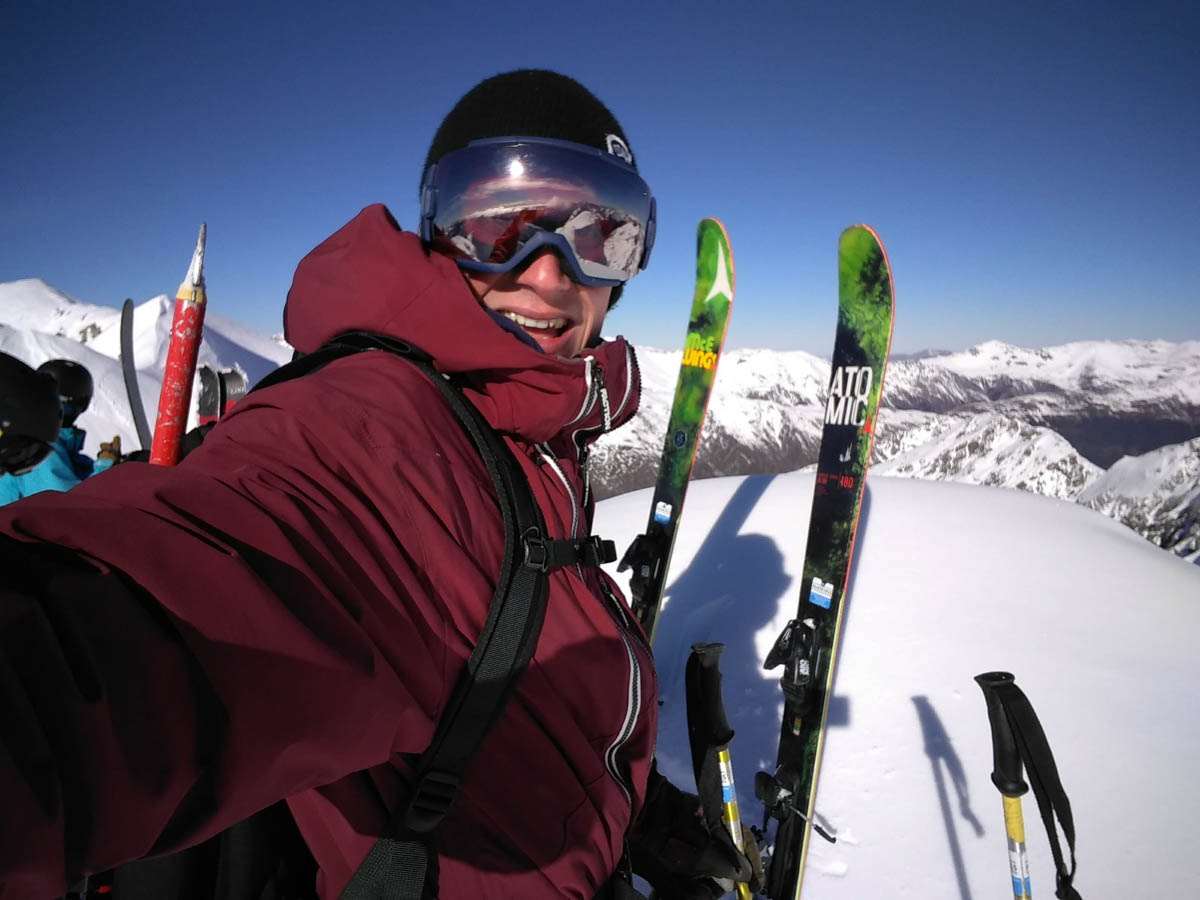
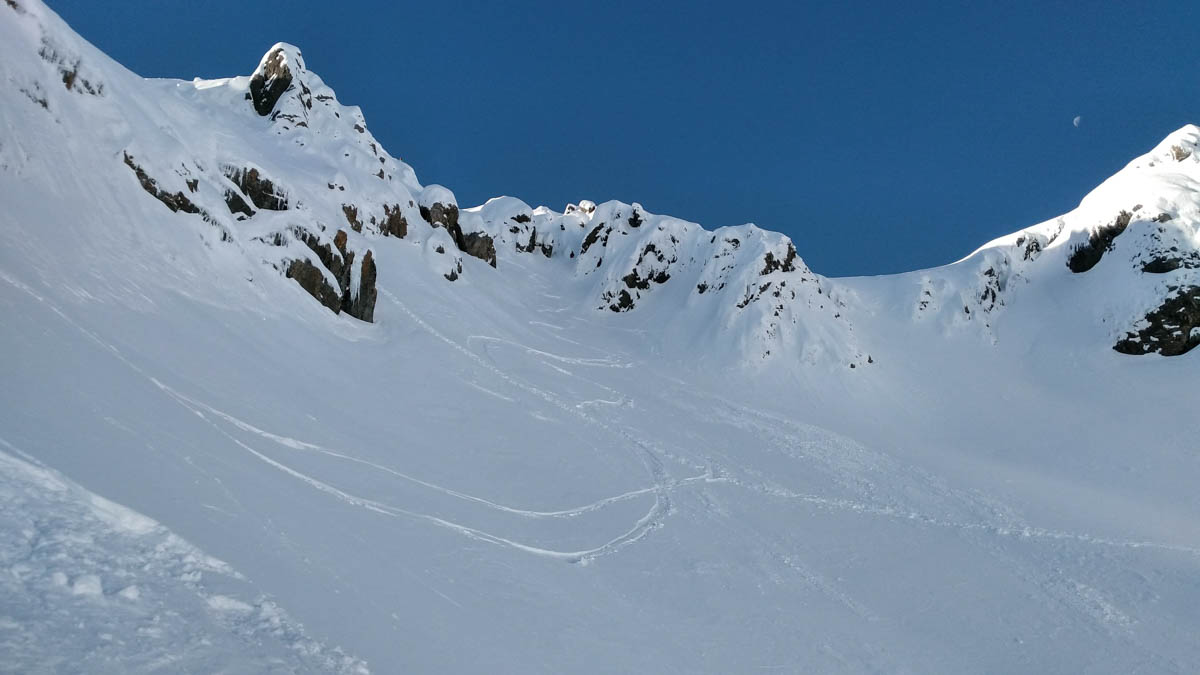
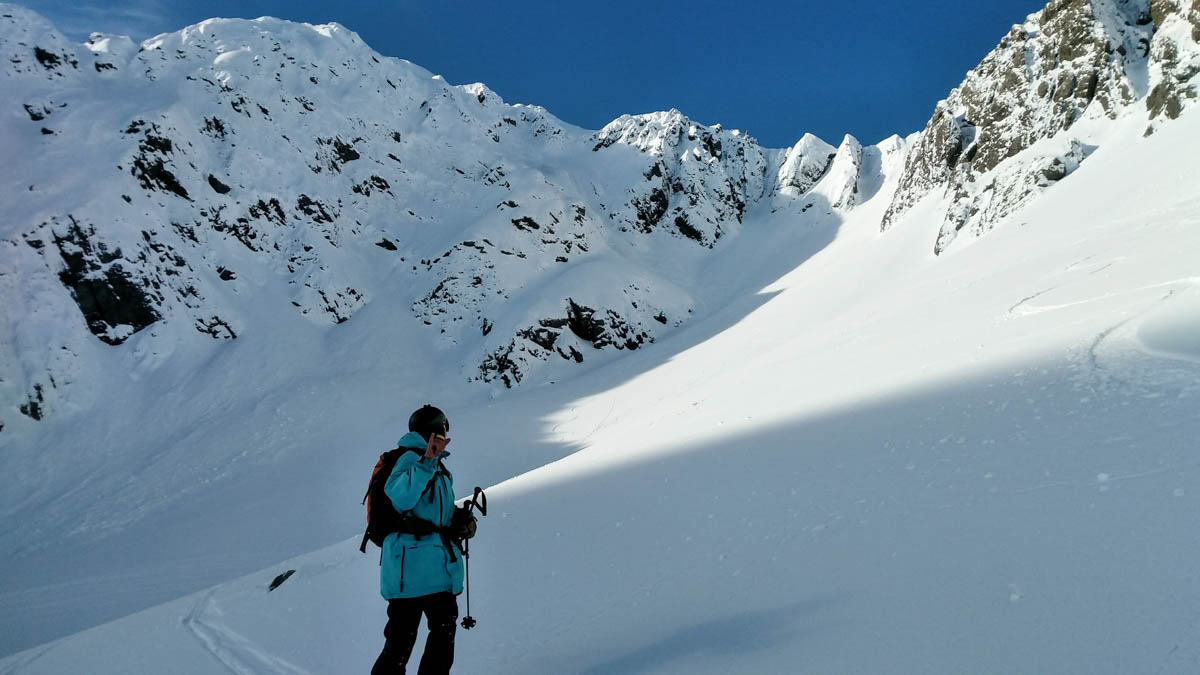
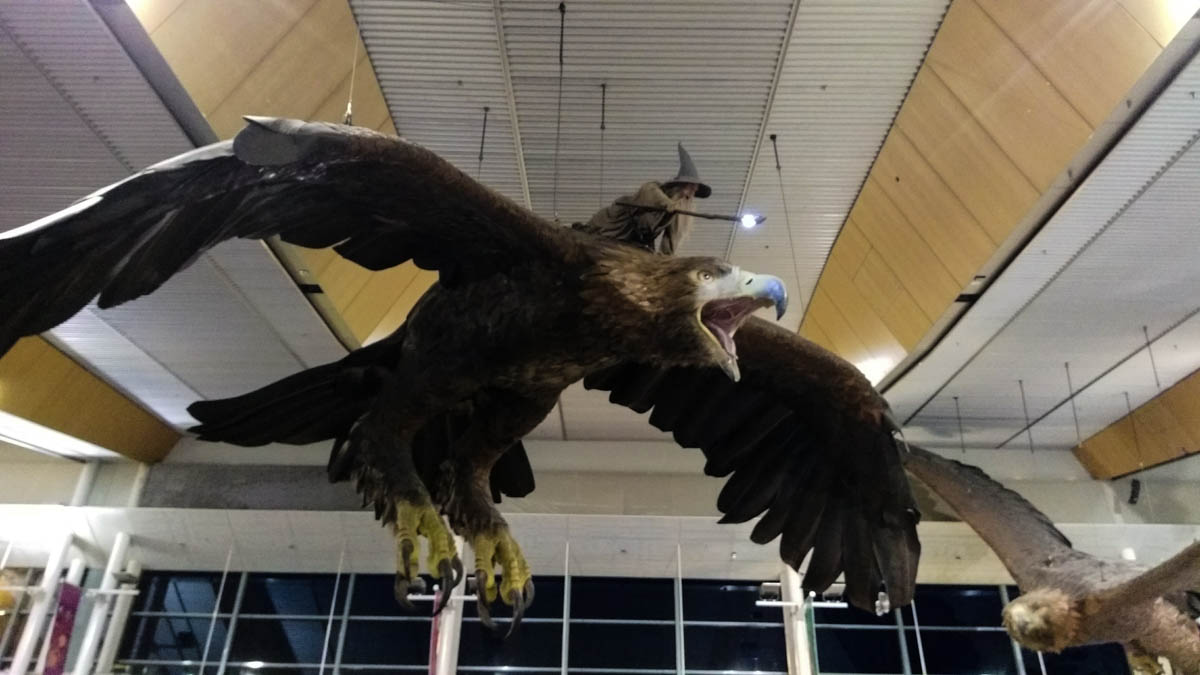
It's here ladies and gentlemen. The end is nigh. Meredith and I are officially clinging to the last threads of our yearlong visas and plotting our next moves. So we'll be packing up our lives here in Wellington in just a few weeks and jetting off for a summer in the true down under, Tasmania. But before then I had to get out on one last, epic trip to ski some snowy southern mountains.
While I by no means moved to New Zealand for the skiing I've been sniffing out the most promising areas down south all year, and my travesty of a time skiing on the North Island had to be redeemed. Fortunately, I had a string of friends down on the South Island ready to play host and help me put together a whirlwind ski vacation. I loaded up what few pieces of ski gear I've lugged along with me and took my first flight- in almost a year!- to Queenstown.
Things got off to a buttery smooth start as I jetted down to QT and was fueling up with a local staple, Fergburger, when who walked in but (my host) the one and only Preston Gene Penny, cut early from a day's work. Preston was living over in Australia and has decided to extend his southern adventure and is now living in Queenstown with a gaggle of Aussie flatmates in a house that reminds me so much of my friends' places in Vail it's cracks me up. Ski bum accomodation is the same the world over. It was great to have a warm welcome and get to know a crew properly living the southern winter dream. To cap off a great start: a sunset stroll looking across Lake Wakatipu up towards my destination for the next day, The Remarkables.
“The Remarkables solidified my general opinion of NZ ski fields: they’re all basically A Basin.”
The Remarks (as they call it) is one of two local fields outside Queenie and sits up in the iconic Remarkables mountain range just north of town. With all New Zealand ski fields, you start your drive off in a verdant valley below and turn off onto a purpose built road that climbs dramatically up to the snow line above. It's a foreign concept for a Colorado boy who's accustomed to skiing right out of town, but driving up those windy roads is a hoot nonetheless. Each one I hit seemed crazier than the last, but little did I know what I was in store for down the line. After my trip to Turoa, The Remarkables solidified my general opinion of NZ ski fields: they're all basically A Basin. Above tree line, wide open, laid back, and begging to be explored. Fortunately this first day gave me basically peak A Bay, clear blue skies, incredible views in every direction, and some soft turns still to be found in the surrounding hike-to terrain. I especially appreciate that The Remarks has dispensed with all illusions of a mid-Mountain lodge. Instead in their main bowl you'll find a packed down picnic area with some guys flipping burgers, beers flowing, and tunes pumping. Not a bad way to get my legs under me.
From there it was straight up and over the Crown Range and into my favorite NZ ski town, Wanaka, to see an old friend. Kevin Fleuger has been a friend for years, and I've long known him to be an ambitious skier. He's living a dreamy ski bum life moving from Aspen to Jackson and now chasing the endless winter down in Wanaka. It's funny that we never actually hit the hill together in Colorado, but no matter he had some epic terrain he wanted to show me at his local hill, Treble Cone.
“With no trees anywhere you get the fully blind skiing experience of Vail’s back on a stormy day everywhere you go.”
My first day at TC did bode a bit on the ominous side, rain in town and a socked in hill up the valley. But what of it? I'm a well accustomed storm skier, and if anything I was hyped for some freshies. In keeping with the increasingly crazy ski field road theme, TC did not let me down. This one's wholly unpaved and on my first day they wouldn't even let me attempt it in my little rental, so we jumped on the bus with some other rambunctious skiers and drove up into the clouds as Lake Wanaka faded away into the distance below. We arrived to a nearly empty ski field (despite some great snow) and it soon became evident why. Kiwis don't storm ski. And with (arguably) good reason, with no trees anywhere you get the fully blind skiing experience of Vail's back on a stormy day everywhere you go. Fortunately the clouds were blowing in and out and we had some patches of good visibility as we warmed things up skiing hot laps on the front side, which- with its rolling, open terrain- felt a lot like hitting Ricky's Ridge at Vail over and over. Not too shabby.
We eventually moved on to the rowdier back side for some fun little cliff lines and untouched turns. The real treat came the next day, however, when the snow gods gave us a solid 6-8" overnight and clear skies in the morning. This brought out the masses for sure, but we had a plan: head straight back to the easily accessible Motatapu chutes in the TC side country. Back in the chutes things are fully pinned. Steep slopes, soft spines, and cliffs abound. We hit it just right sneaking in some killer laps on some untouched southern pow, even getting a few cheeky face shots before the clouds came back in and had us running for more central slopes.
“Each turn felt laden with memories.”
After two killer days in Wanaka I left on high for a bittersweet drive across the island to my next destination, Christchurch. It's a considerable haul over some high mountain passes and through some of the island's most beautiful country. I got a bit misty as I cruised past the beautiful high mountain lakes Ohau, Pukaki, and Tekapo on a dramatic afternoon as a storm moved over the mountains. Each turn felt laden with memories of all the adventures Meredith and I had over the summer on this stunning island. But as I drove on the rains set in earnest, boding for great things ahead.
In Christchurch, I met up with some friends from Dunedin: Harriet and Charlie. The report looked great, so we were up early and sunrise found us, pedal to the metal, heading for the central Canterbury ski fields. Now, if you do research on skiing in New Zealand you'll likely come across all the mountains I've described to you thus far, maybe even Turoa up north if you're really looking. Which makes sense, they're the biggest hills with the biggest budgets. But the best terrain may pass right underneath your nose. That's because central Canterbury is home to some of the most prominent mountains in the Southern Alps; indeed, visiting the area gives the truth to that name, these crowded snowy mountains are nothing if not truly alps.
“The most lovable, renegade ski area I’ll ever visit.”
The hills in this area- lovingly called 'club fields' as they're all run and supported by registered club members (but are still public access)- are ragged operations with not a single chairlift between them. They all serve to provide a home base and basic access to extended areas of side country surrounding their respective peaks. Based off the near foot of fresh that fell overnight we headed about two hours inland from Christchruch, way up Arthur's Pass, to Temple Basin. In keeping with the crazy ski field road trend, this one wasn't even a road. Instead, you pull off the highway and toss all your gear onto a sketchy goods lift that carts all your shit up the hill as you hit a hiking trail. Half an hour of huffing and puffing up from the valley floor gets you to snowline, and probably the most lovable, renegade ski area I'll ever visit.
A couple huts provide rooms, food, and shelter for what have to be some of New Zealand's most ambitious skiers. You can really cut the chaff with a hike to the base of a mountain. We piled into the lodge and geared up for an epic day as the sun crested the peaks in a cobalt sky. With no chairlifts you're conveyed up the hill on two rope tows at Temple Basin, but not tows like I've ever seen them.
“It’s so cheap, it’s so minimal, it’s so contrarian to so much of what the world of skiing has come to stand for.”
I'd been well forewarned of "having to learn to use a nutcracker" but the reality was so much rowdier than I'd expected, it cracked me up. No handles or pomas on these tows, that's much too fancy. Instead, you ski up (usually completely alone) to a speeding rope and grab on. Once up to speed you take a two-piece metal device -the "nutcracker" (attached to a harness around your waist)- flick it artfully around the rope and clamp down on it with your free hand. All this has to be done before you hit the first pulley tower though, or you risk losing a finger. It's so cheap, it's so minimal, it's so contrarian to so much of what the world of skiing has come to stand for. I loved every second of it.
Once up on the hill, Harriet and I positively redefined hot laps all morning in Temple Basin's main bowl. With sunny skies, deep snow, and thinning crowds (as they headed to the hike-to terrain) we crushed an epic morning. I'd be curious to know the speed of one of these rope tows vs a quad, they are not slow. With no lines at the bottom, and no rest at all on the full throttle ride back up, skiing at club fields is not for the faint of heart or weary of leg.
“I didn’t move to New Zealand for full-throttle side country lines, but I will always jump at the chance.”
After a lunch overlooking some of the world's most dramatic mountains, I headed off for the afternoon to explore some of TB's side country with Charlie and his big mountain fiending friends. A boot pack up a knife ridge brings you to the summit of Mt. Temple proper, from there stable snowpack and tasty chutes call your name in every direction. Out back here though it was all self-serviced getting back up, so hiking all out I was able to get in three killer big mountain lines off various aspects of the mountain before sundown. I didn't move to New Zealand for full-throttle side country lines, but I will always jump at the chance.
Night at the club fields is almost as fun as the day of epic skiing. With the hike in most people are loathe to schlep down mid-weekend, so everyone crams in for the night. Two huts positively packed with frothing skiers, including the rowdy ski club from a college in Christchurch; spirits were high as we sank some beers, and laid a plan for the next day.
“With sights set on a real beast, Mt. Phipps.”
By this point, my legs were moving on towards fully cooked and I knew I only had one real hike left in me, so we figured why not send it off in style. I met up with a crew in the hut common area that the morning with sights set on a real beast, Mt. Phipps. It sits towering just west of Mt. Temple and with no real tow access up it, we were looking to be the first group to ski it for the season.
Naturally, the pictures have a tough time doing the climb justice as we moved from open powdery bowls to steep chutes to knife ridges over the course of a nearly 5-hour hike up the imposing mountain. I've done some backcountry skiing in my life, but never true ski mountaineering. Indeed, it was the track of a couple of climbers that had us thinking Phipps in the first place. Boy, was it a whole different ball game. I'd never climbed with an ice ax before but was sure glad to have it as we worked our way steadily up the steep face of the mountain. Only the stable snowpack and the sunny skies kept us fueled on the long trudge up. Once at the top things hit a crescendo as we were faced with a harrowing traverse along the sharp upper ridge to access our scouted chute.
Having finally conquered the beast there wasn't much to do but build a little drop in platform and steel ourselves to send it into a chute that took us almost halfway down the mountain in one go. It all looked so simple from the lodge. Dig a couple pits, get through that throat, then up that ridge, and you'll be skiing this epic chute. Well, it proved more challenging at every turn and the descent kept pace. I pushed off the platform second in line and held on. The extreme pitch of the chute only just balanced out by the encouraging, soft, marine snow. I worked my way down the chute one jump turn at a time with the Southern Alps stretched out all around me. Easily one of the most challenging, beautiful lines I've ever skied.
“The stoke was high as we rolled back in sweaty, exhausted, and victorious first descenders of Mt. Phipps for the year.”
Once we'd all conquered the line from the top we were in for more of a treat as the mountain opened up wide powder fields below in steadily improving snow. By the time we worked our way to the bottom we were ripping fast turns through plenty of fresh with grins from ear to ear. Throughout the whole expedition we were watched by folks at the hut- on "TB TV" as they say- so the stoke was high all around as we rolled back in sweaty, exhausted, and victorious first descenders of Mt. Phipps for the year.
Not a bad way to send off my final New Zealand adventure.
On One Year In New Zealand
As I sit here on a rainy day in Wellington closing in swiftly on the end of my year down south it seems as good a chance as any to wax poetic on my time here on these incredible islands, adrift in the southern ocean.
“I doubt if there’s anywhere else in the world I’d have rather gone.”
If I'm being totally honest I didn't really know what I was signing up for when I booked my tickets to the other side of the world. Sure, we all know some stuff about New Zealand: there's mountains, there's sheep, they've shot some ok films down there, they know how to play a game of rugby. But I was far from an expert on the place. A driving desire to get out and explore the world, and an easy visa, guided my hand. Looking back though, I doubt if there's anywhere else in the world I'd have rather gone.
“All that, and there are still 20 places I’d love to visit that we won’t get the chance to hit.”
This time last year I was enjoying a family trip out in Maine just before departing, and while on one hand this year feels like it's flown by on the other that vacation seems impossibly far in the past. And it's no wonder. I stagger a bit thinking about what this one year has held, I've: hiked world famous trails, surfed with dolphins, canoed through misty jungles, flown around the Matterhorn of the South, fallen asleep to glaciers rumbling down a mountain, drifted through glowworm-filled caves, skied fresh southern pow, kayaked through a tempest, snorkeled golden beaches, ridden more sweet trails than I can count, gazed in awe some of the world's greatest natural wonders, I've been able to call two of the coolest towns on the face of the planet home, and I've made some incredible friends along the way. It is truly hard to believe I've done all that and so much more on a couple of islands which together are smaller than my home state. All that, and there are still 20 places I'd love to visit that we won't get the chance to hit.
As you can imagine, times have not always been as breezy as my posts may make it seem. There have been breakdowns and tight budgets, rain ravaged camps and frozen hikes. We've always known that we're out here making the most of our time but have been haunted by the thought that somehow real life is out there passing us by. Living abroad can be stressful, and at times outright unpleasant, but somehow around every corner New Zealand left us a silver lining to make things more than worth it. Having a steadfast partner in Meredith, with whom to weather the tough days (frequently tough weather!), and to share in the splendor has made the journey all the sweeter.
“I’ll be a proud Coloradoan first and foremost, and when I’m away I’ll miss my people there every day.”
There's not just experiences here, but lessons as well. I've learned the value of friends. You don't really live somewhere until you've made some friends there. In the end it's the people that make the place. It's the perennial traveller's woe, you may choose to stay but many others will choose to move on. It's in keeping your friendships that you keep a place, at a time, alive. After all, you need some folks to trade tall tales with. I've learned a whole new lesson about work. It's too easy to feel untethered in life if you don't create some value in the world. I guess there's a reason why it's called a "Work and Holiday" visa, you need a balance to make them both more valuable. Hell, I've learned lessons about politics. That when you're looking after 5 million people problems become so much more manageable, rather than hoping to solve the problems of 350 million people in one fell swoop. I've learned just how unnecessarily difficult it is to actually live and work in another country, guess that's why only 3% of the world's population live away from home. I've learned the value of stripping back, of how much you really need to call a house, home...it's not much. I've learned about home in a more abstract sense too. Home will always be Colorado, no matter where I journey or where I hang my hat I'll be a proud Coloradoan first and foremost, and when I'm away I'll miss my people there every day.
“I think that’s what counts in life, how much of the world we’re able to soak up in our time on it.”
Most importantly though, I've learned about seeking adventure. It's funny what having such a fixed timeframe on your time in a place does to your priorities. Every day counts. It's driven me out to blunder through frozen mountains, and driven Meredith insane. But still there's an important lesson to be learned here: you can always seek adventure out. Even if it you can't journey far there is always a new way to go, something new to see, a new experience to be had. And in the end I think that's what counts in life, how much of the world we're able to soak up in our time on it.
So, what's next? Mere and I are getting the boot from NZ in just a couple of days, and we've decided to keep the traveling dream alive while we can. In two weeks, we'll be heading to Tasmania to make a new home, make some new friends, and make a whole heap of memories. Word on the street is that Tassie is like New Zealand part 2, so we're excited to get out and explore this new island and our new hometown (we'll be shacking up in Hobart for at least 6 months). From there, who knows? Melbourne seems appealing, and I'm sure we'll get wind of all sorts of must see things around Australia that we won't be able to resist.
That's where we'll be, so if you've never had an excuse to visit Tasmania now you do, and the next post you'll read will be from the true down under!
My Route:
Tips For NZ Travelers:
- If you're looking at skiing near Wanaka you may come across the "Ski4Free" promotion from Jucy for tickets at Treble Cone. This is totally legit, and got your boy two free days on the hill at TC. Do it!
- Seriously, ski field roads can get pretty hairy in adverse conditions, and if you're renting it's probably worth upgrading to proper a 4wd.
- Arguably the best burrito on the island is done out of a food truck in Wanaka...or maybe my discerning taste for Mexican food is just disappearing.
- Christchurch gets a lot of shit, but it's a totally legit base if you like to ski, surf, or mountain bike. Don't discount it.
- Don't skip the Canterbury ski fields. Seriously best value for money on the planet!
- The locals say Temple Basin for side country access, Mt. Olympus for rope tow serviced terrain.
The Volcanic Connection
We’re really getting down to the wire here down south so I’ve been hitting the road hard to knock off some critical sights while I still can.
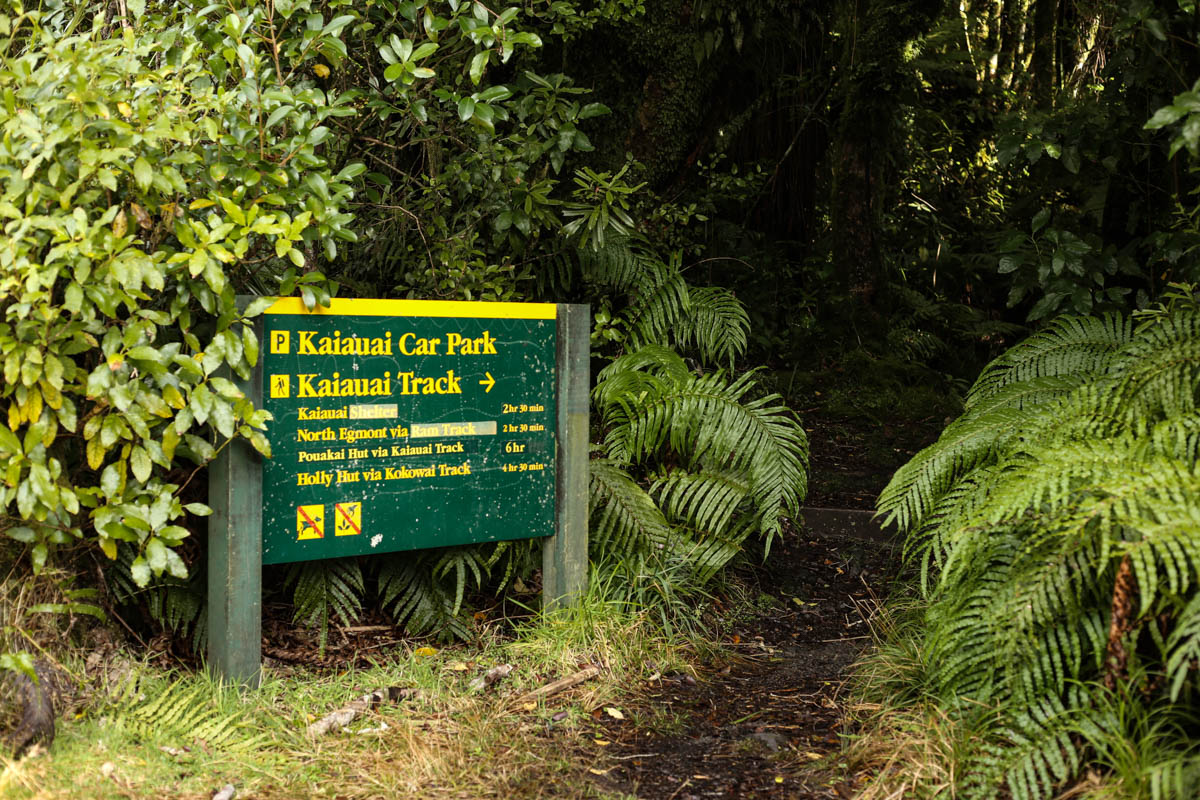
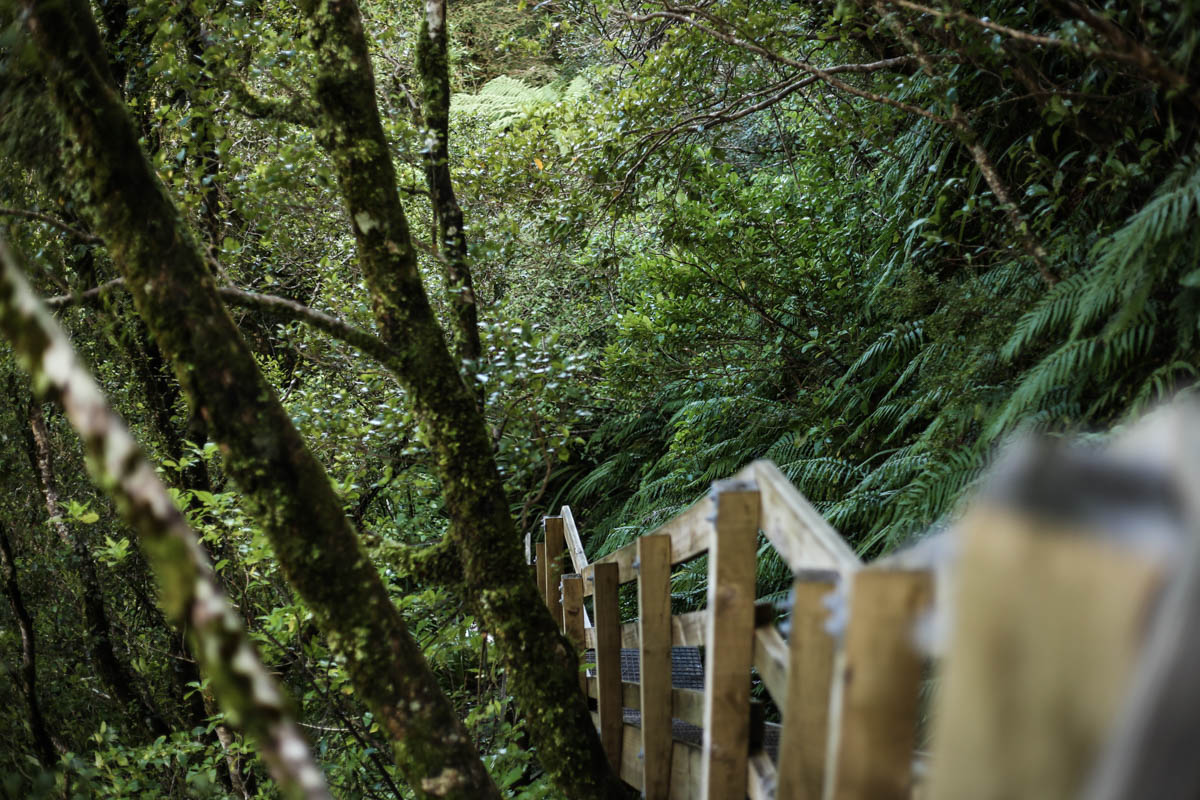
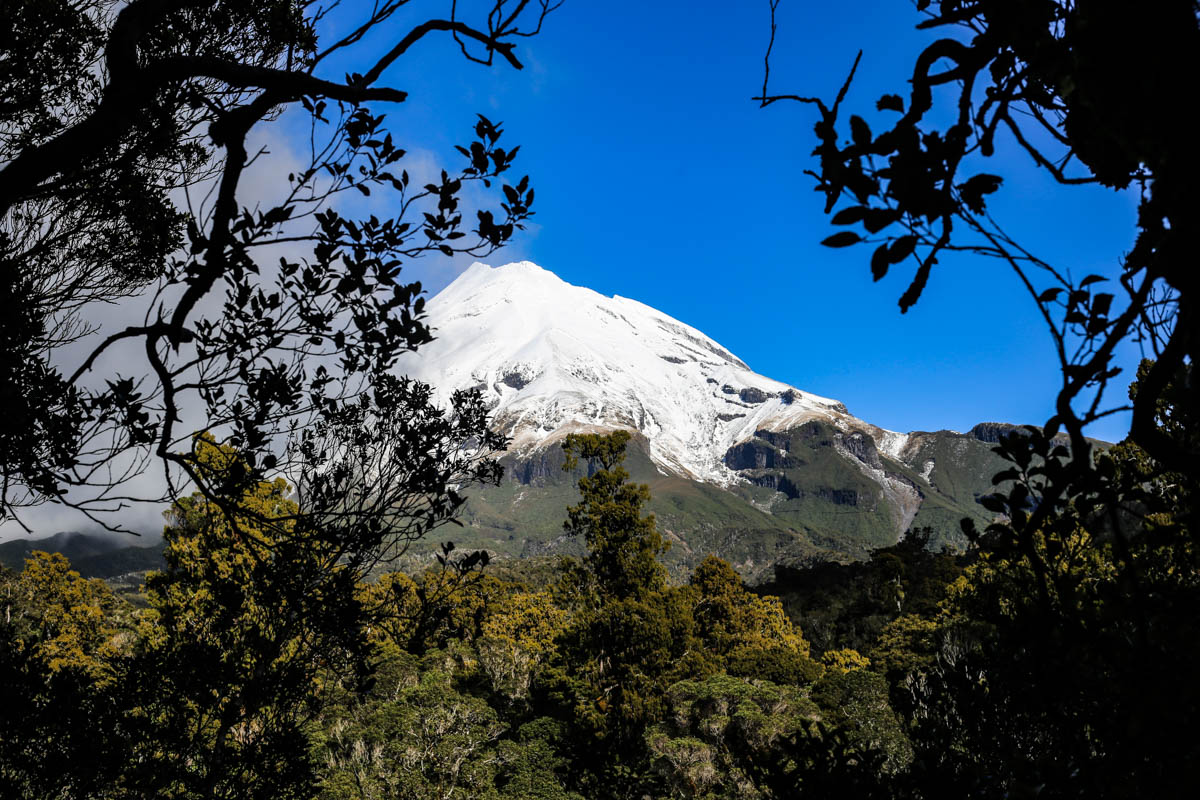
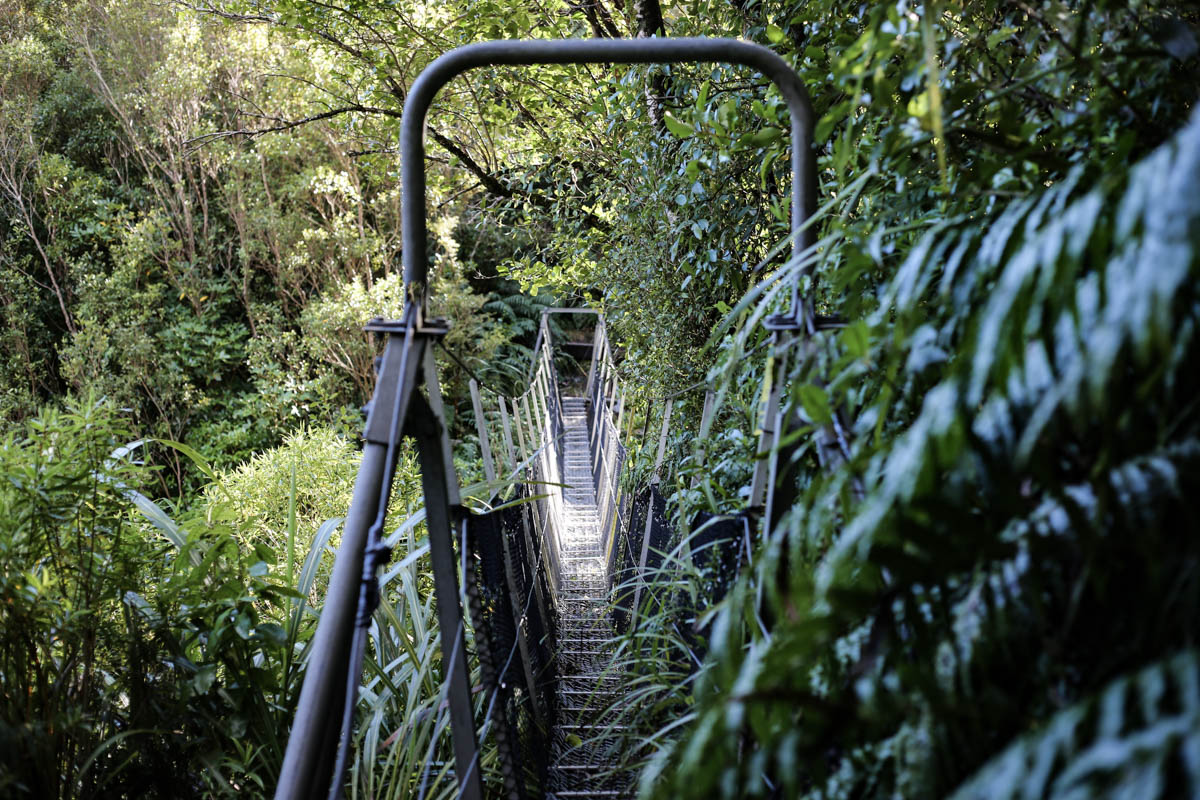
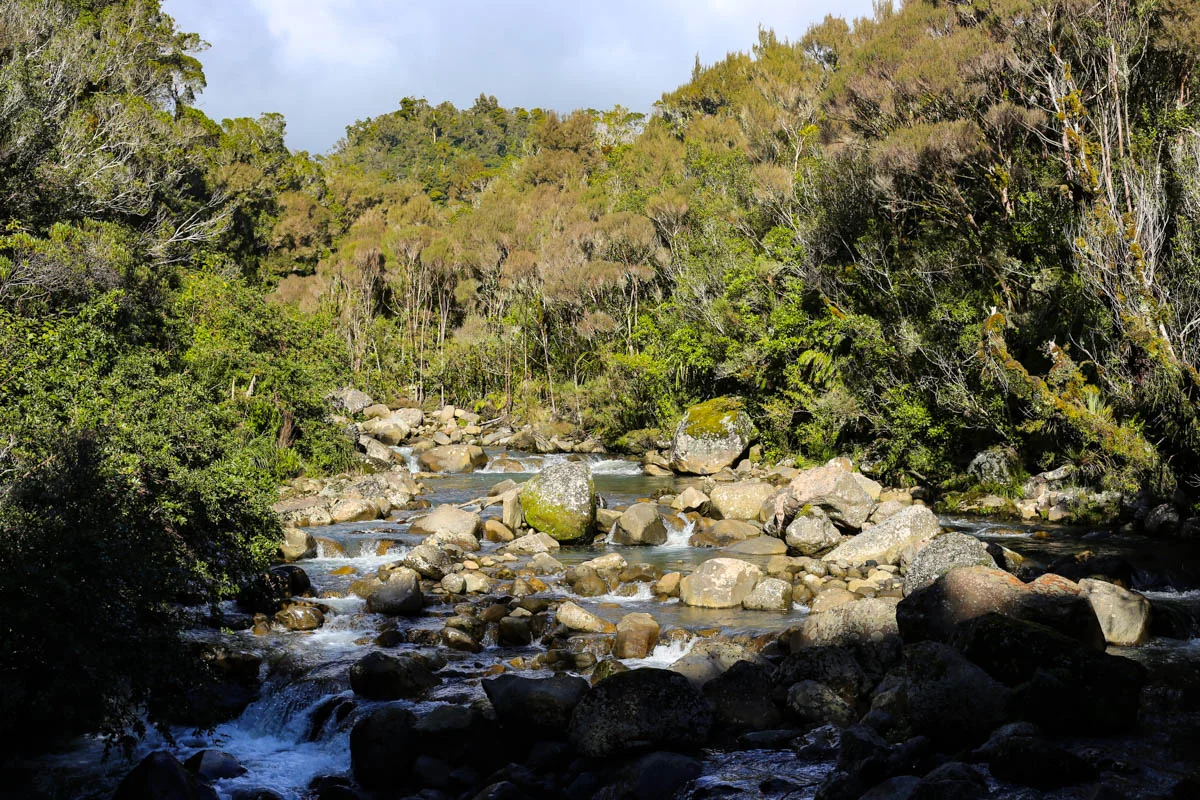
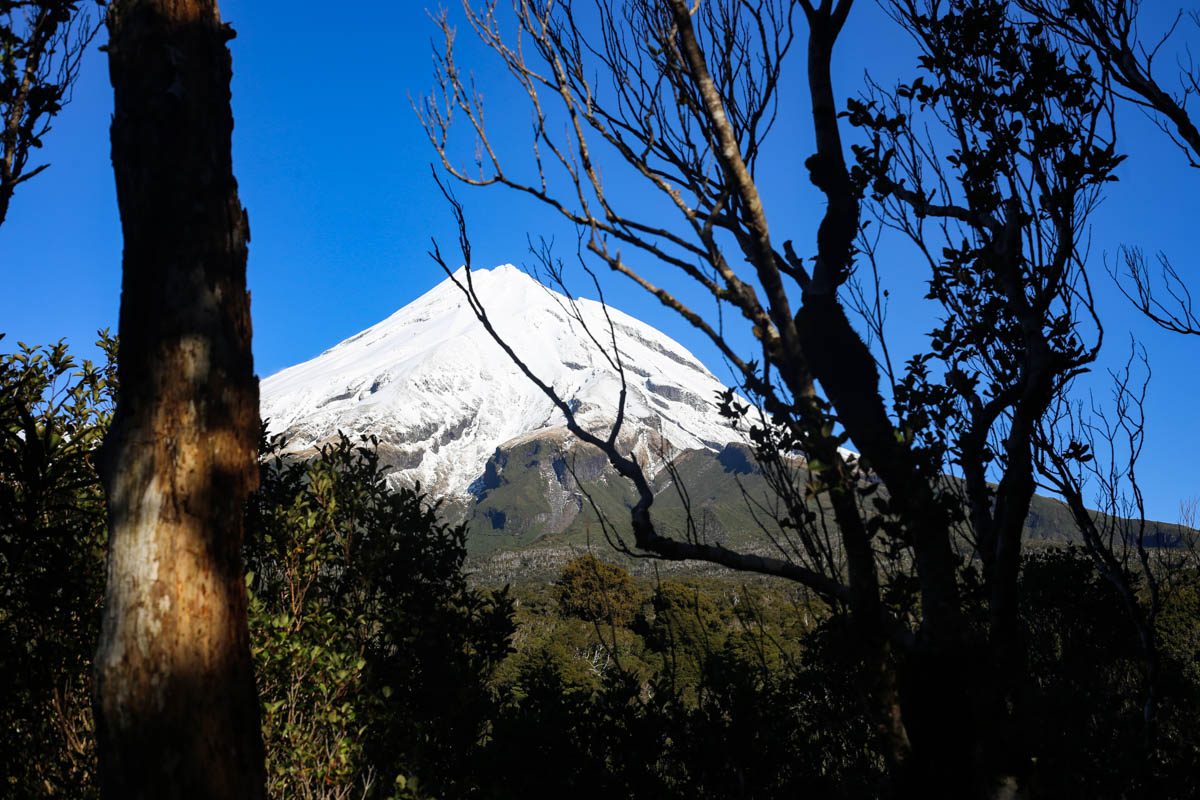
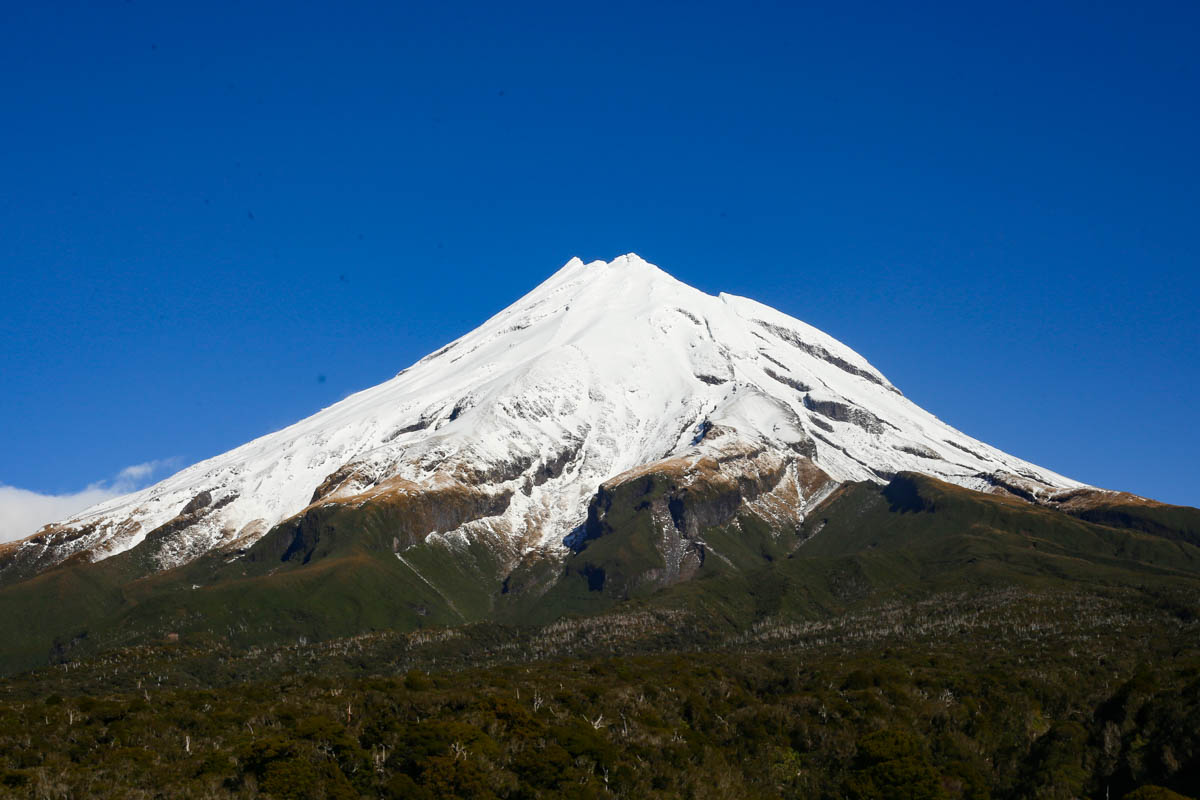
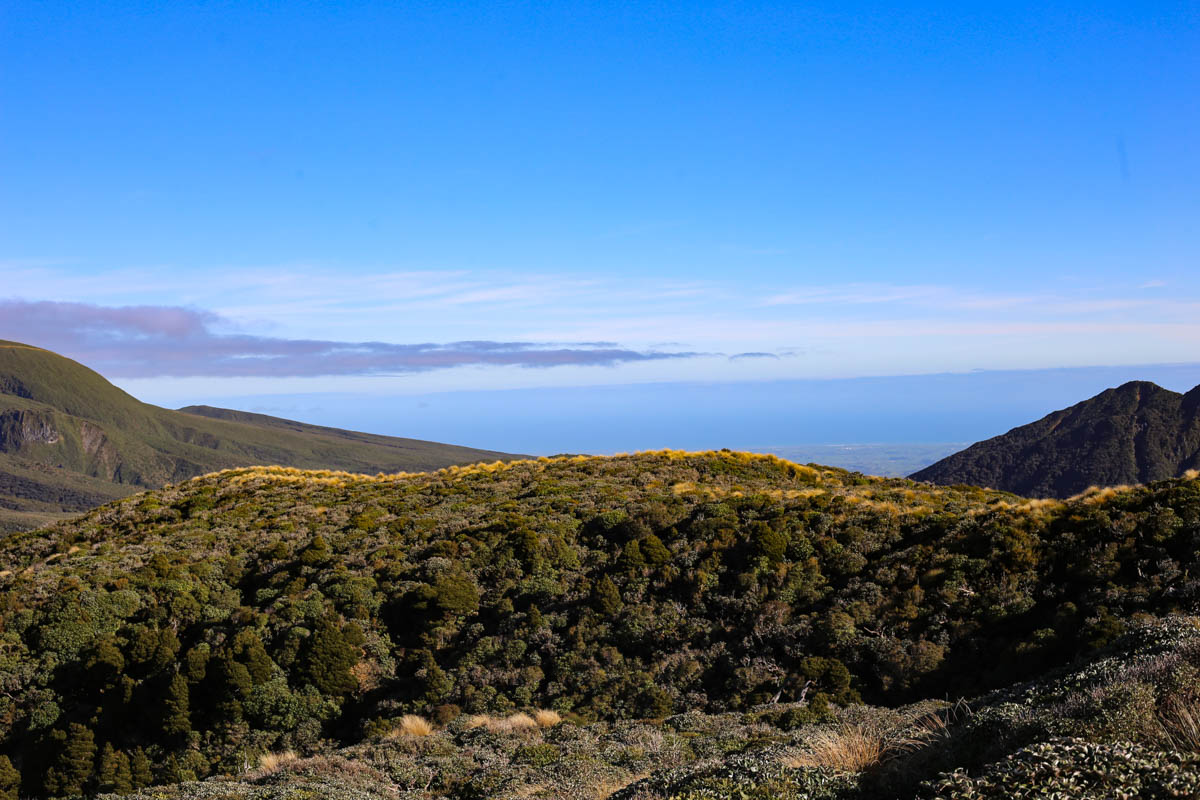
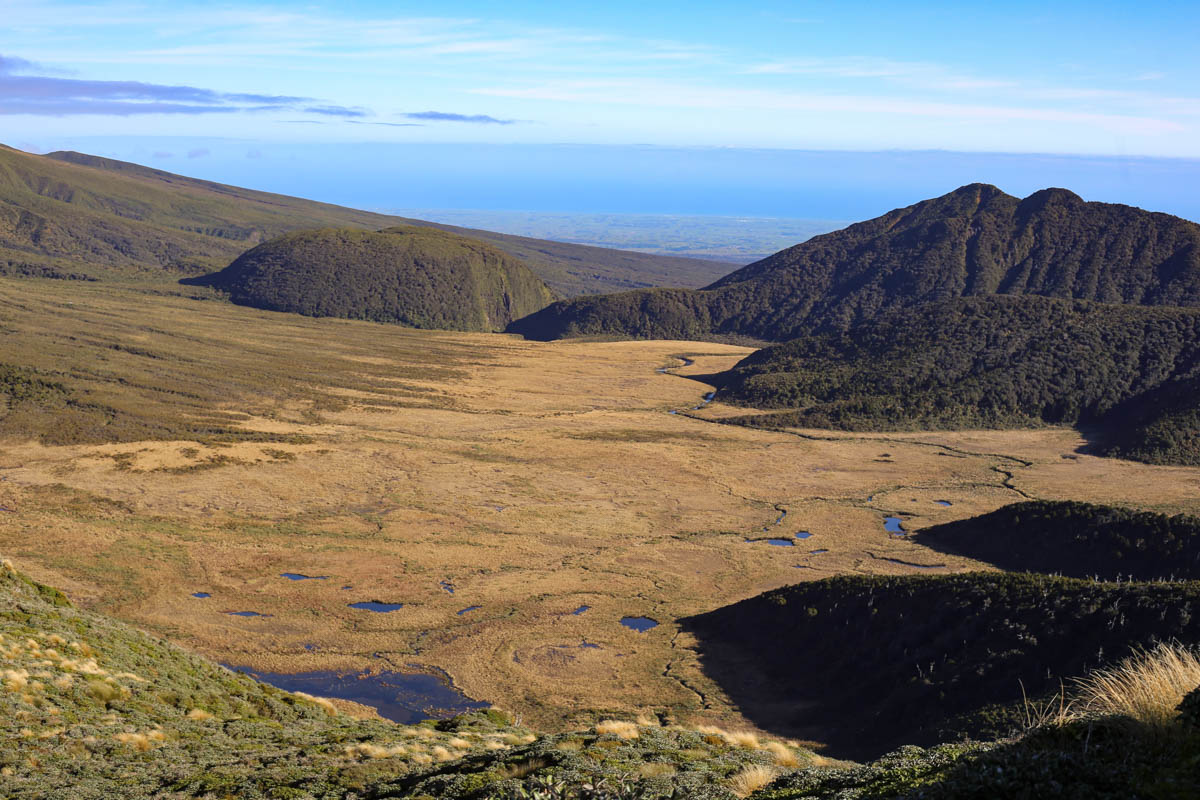
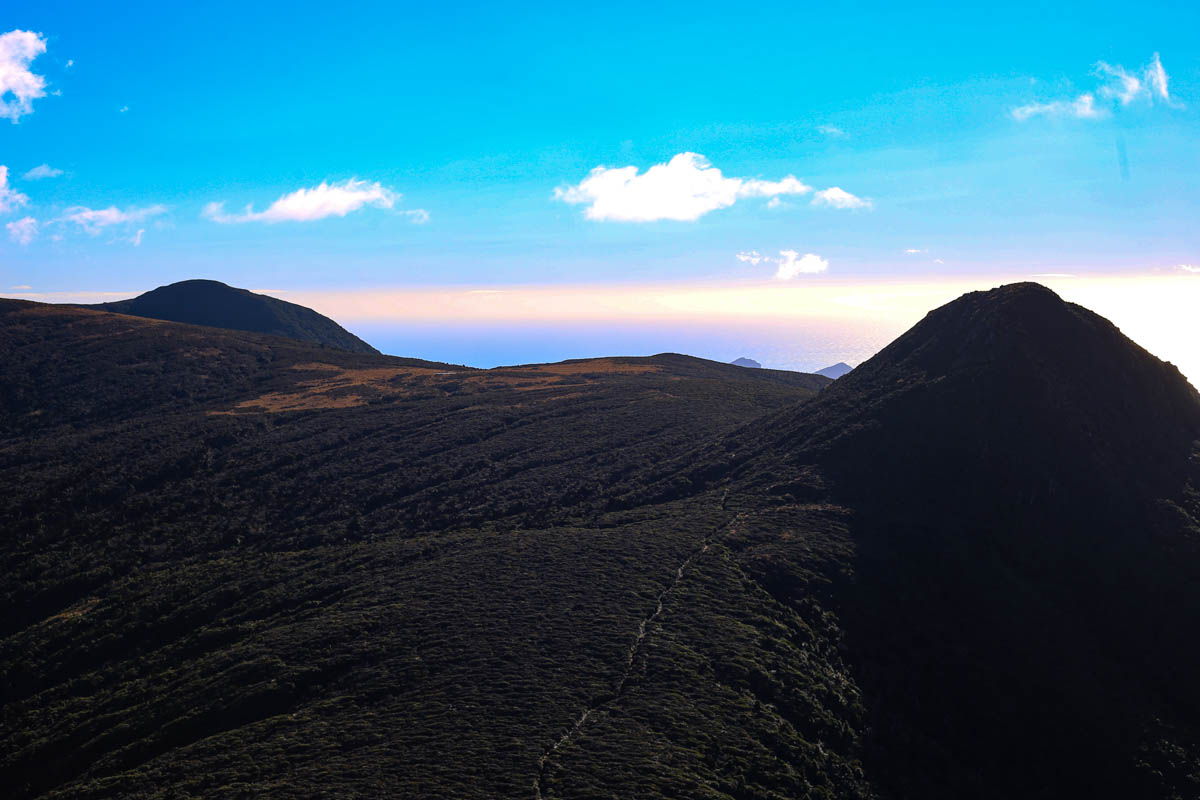
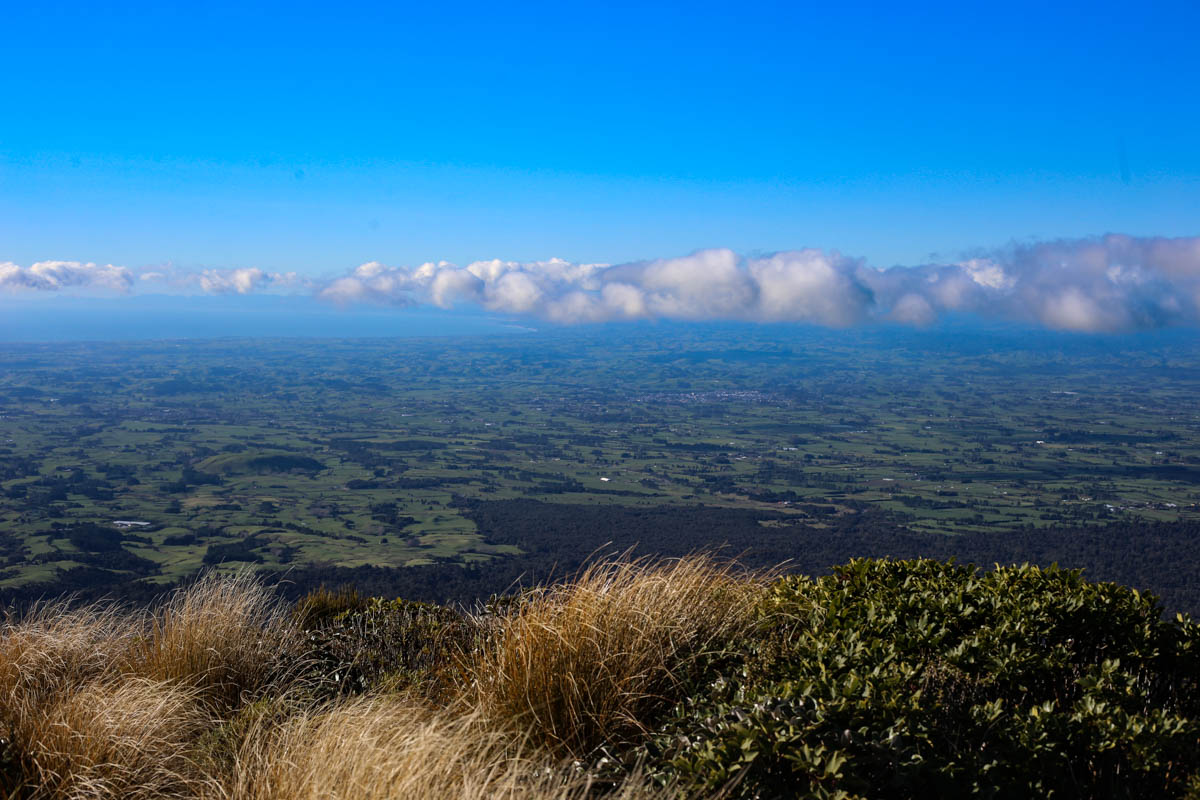
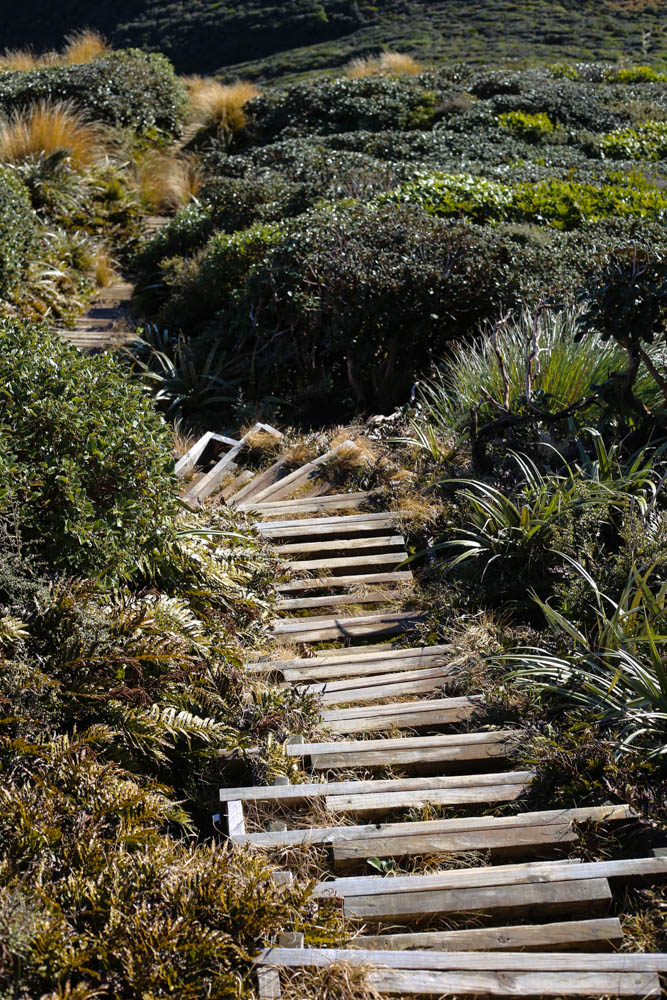
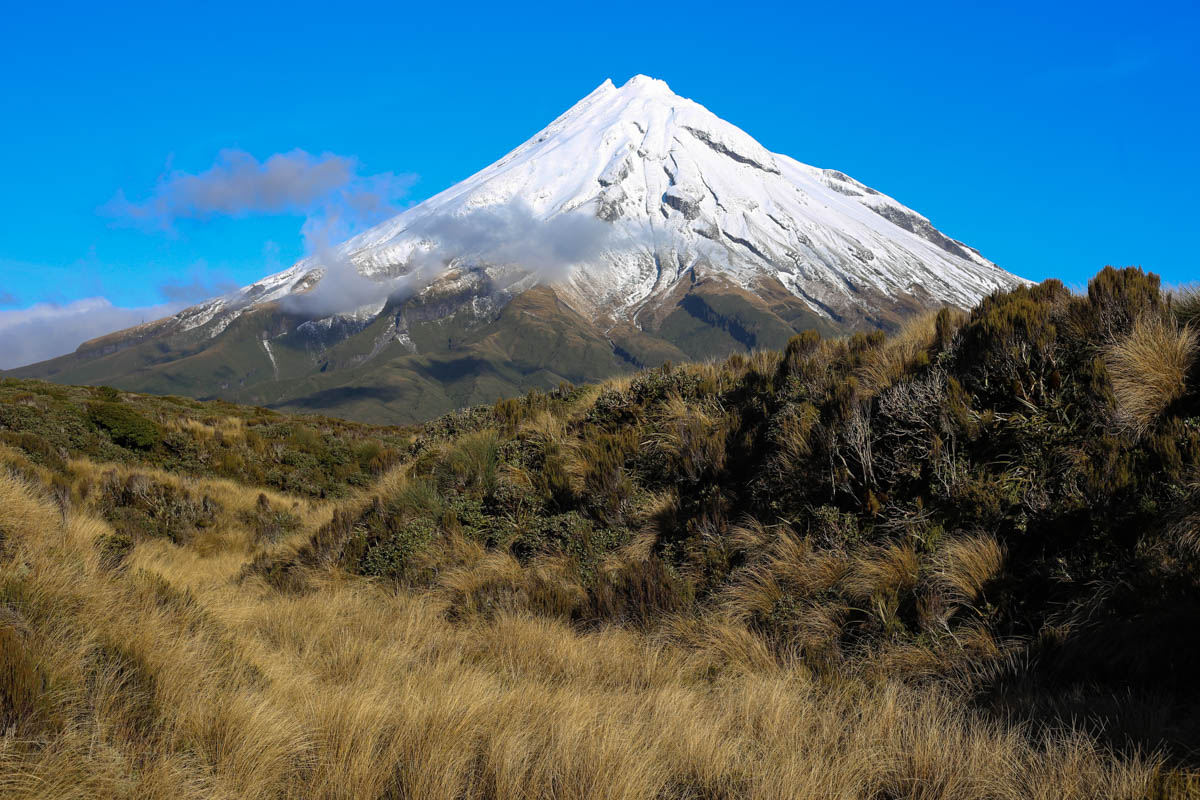
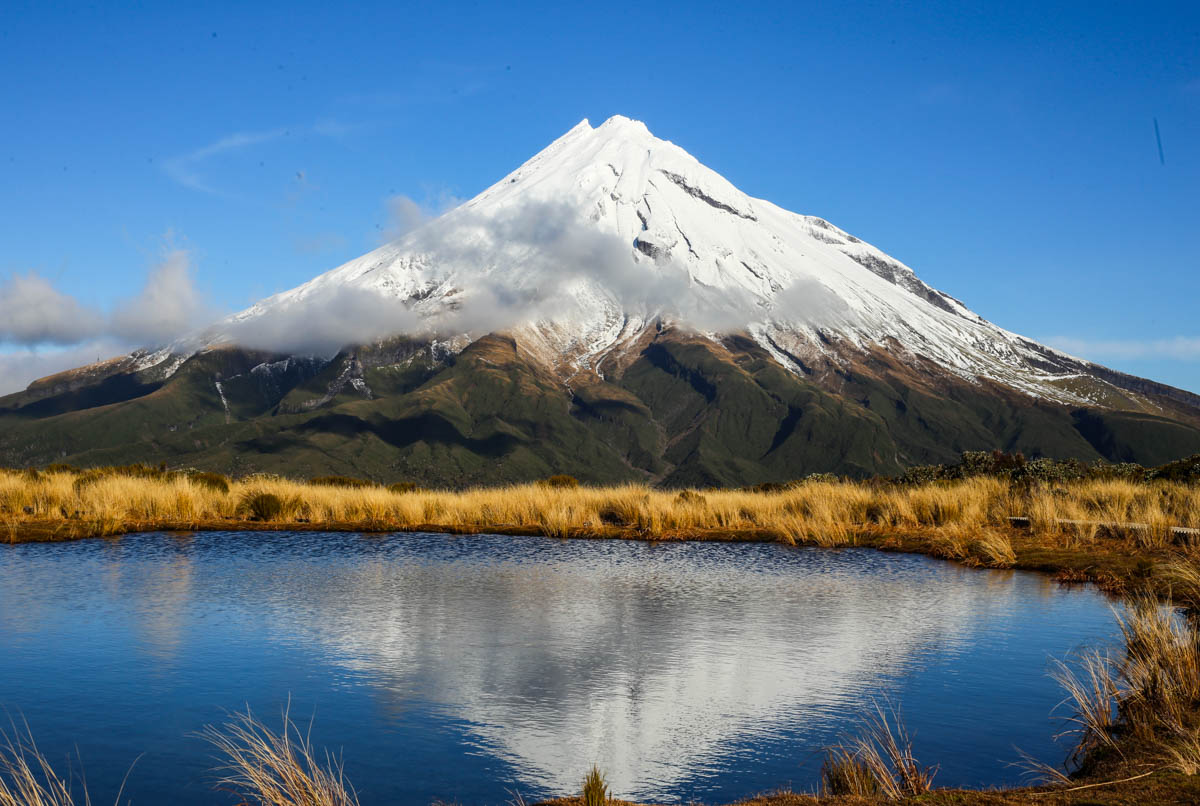
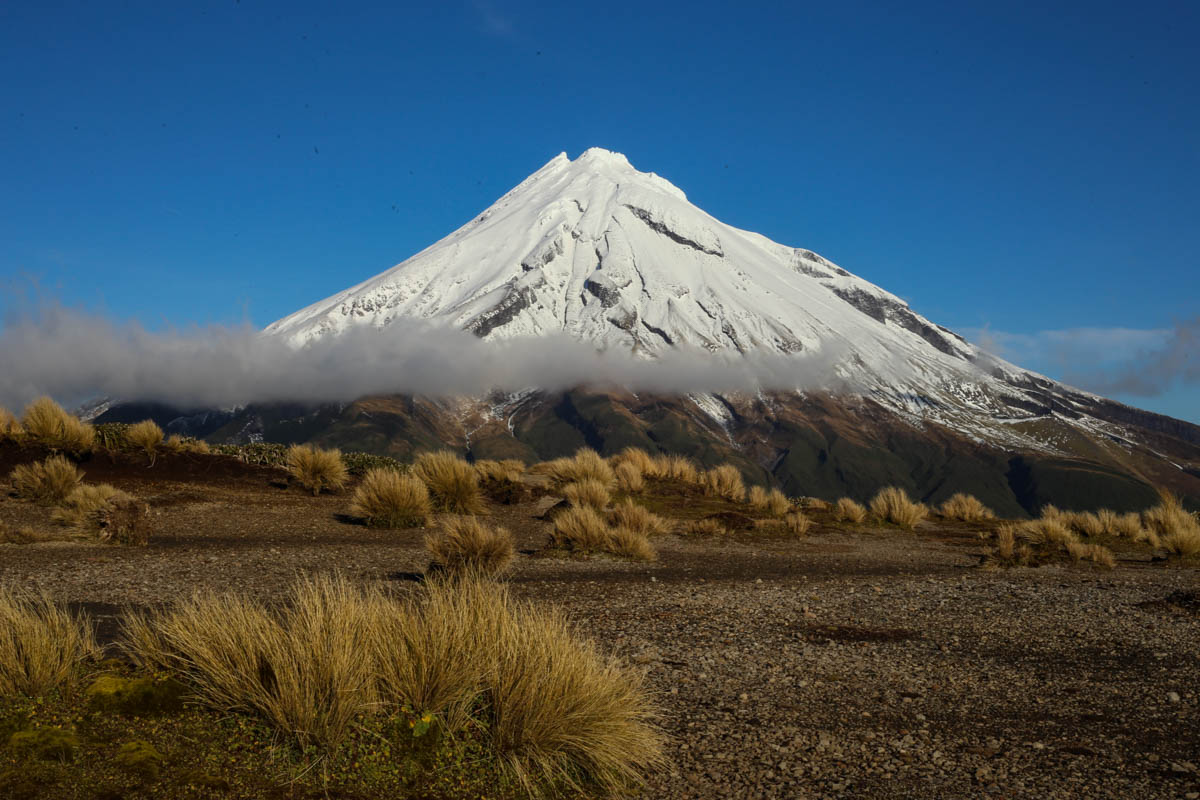
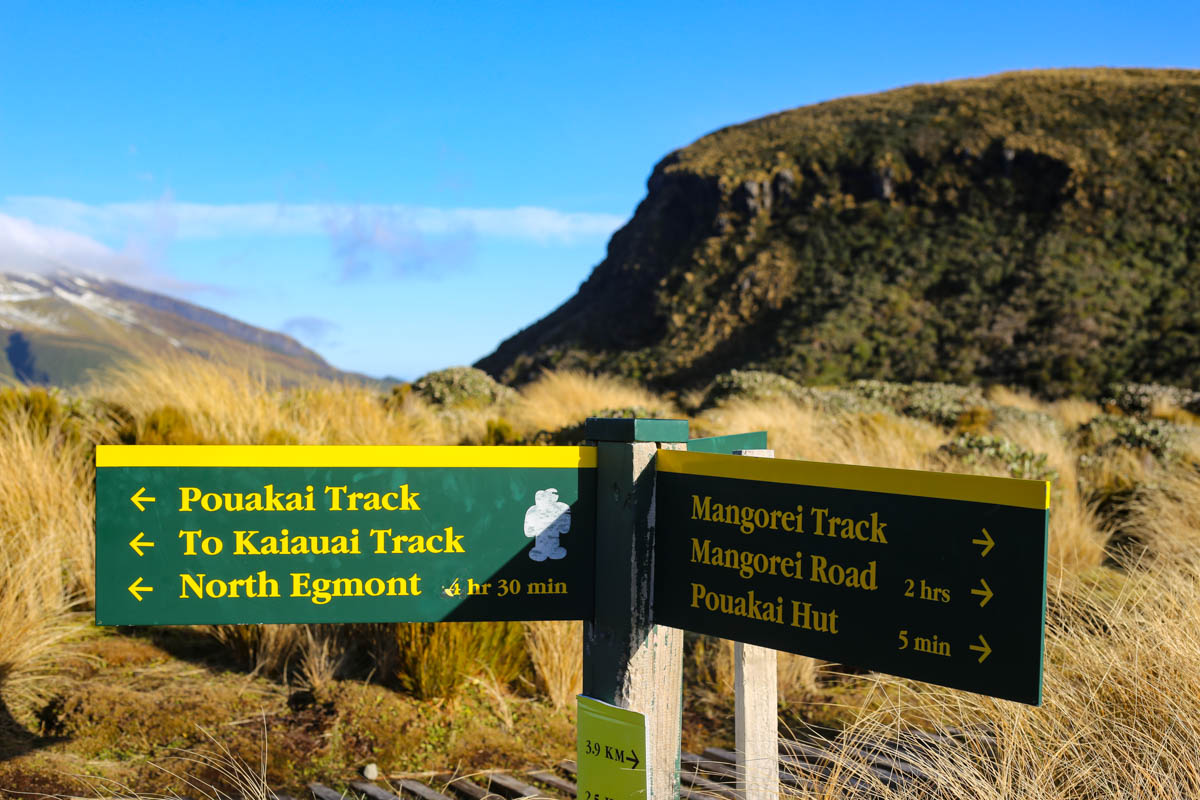
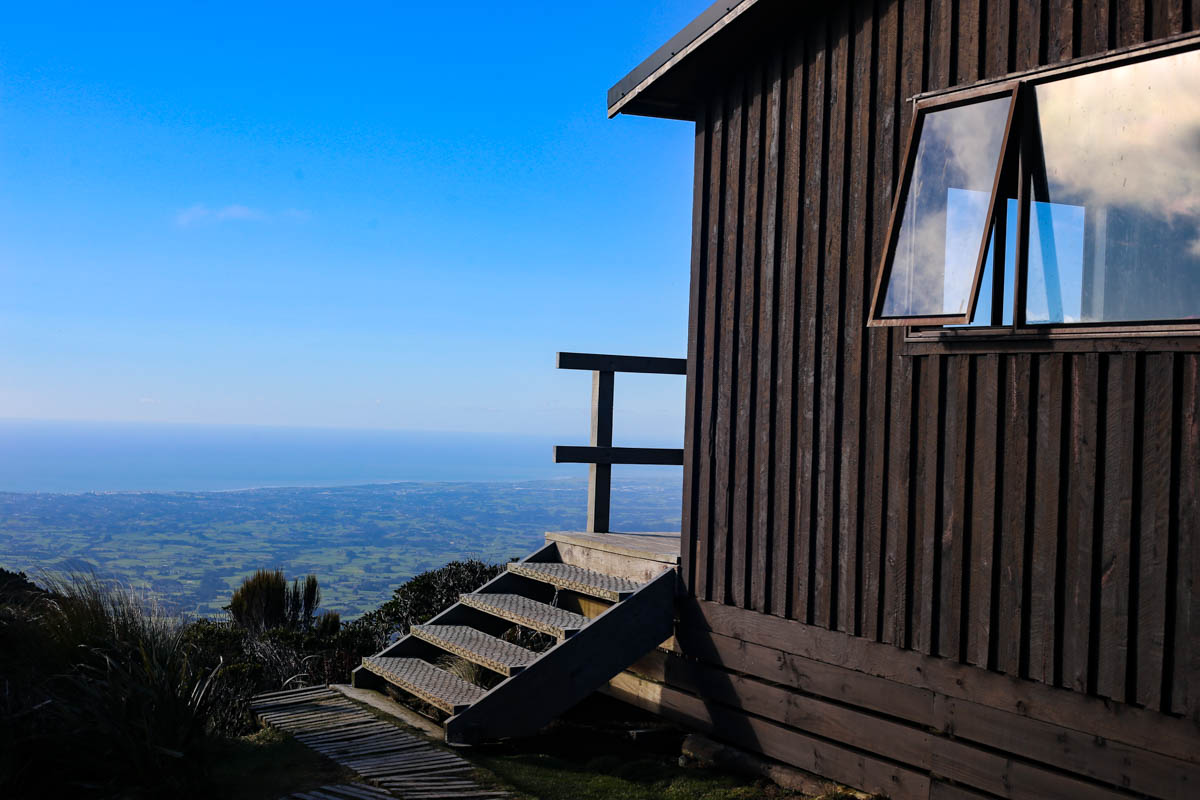
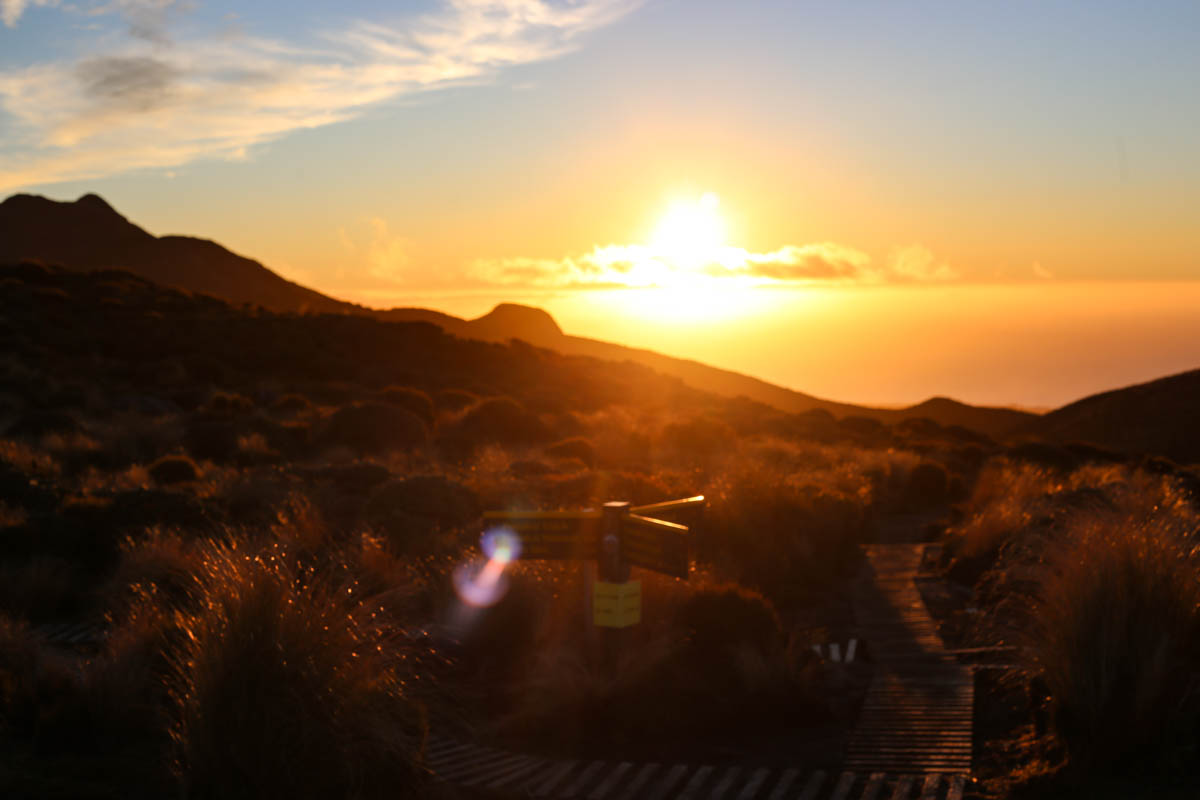
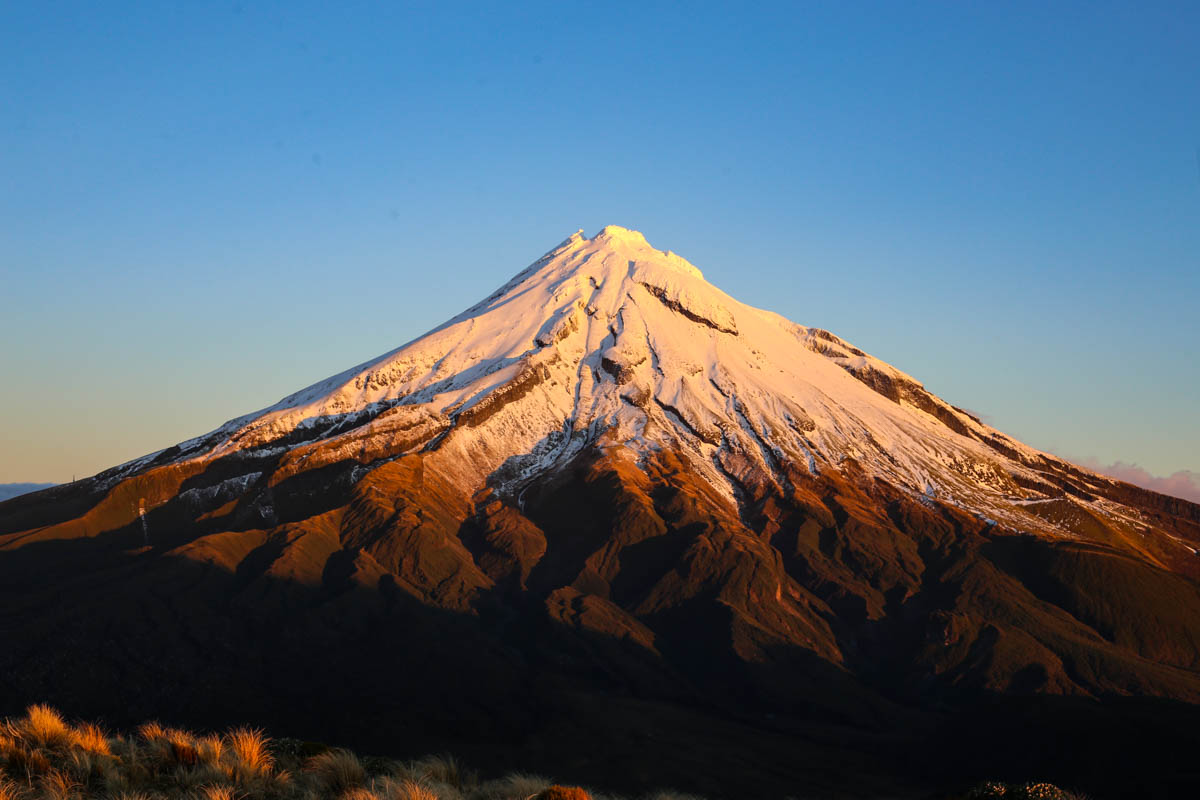
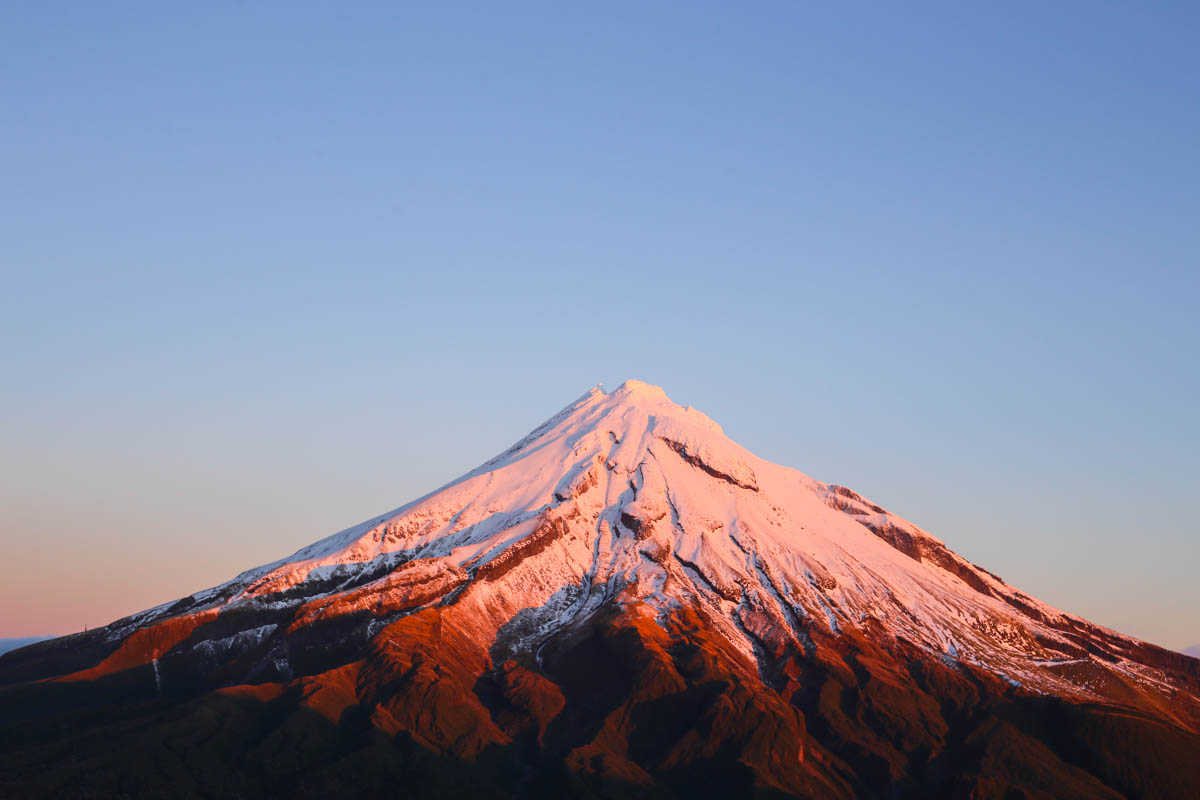
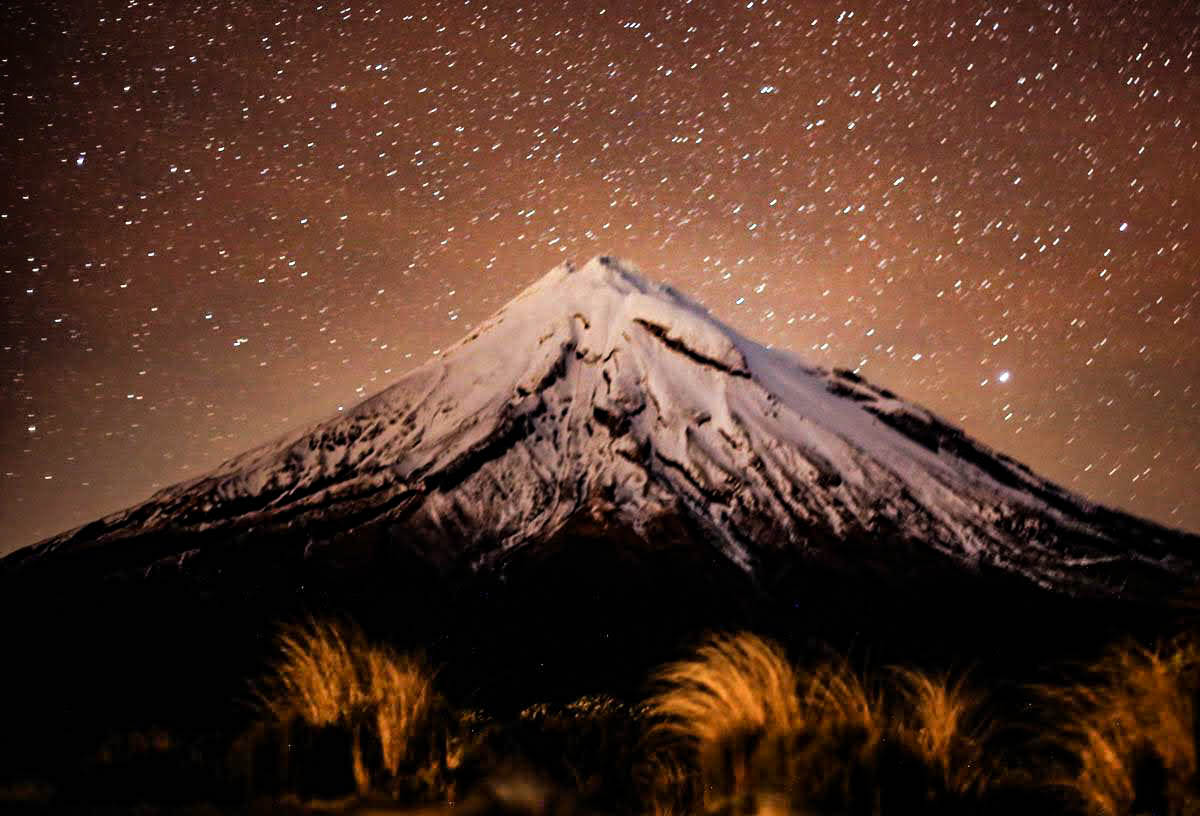
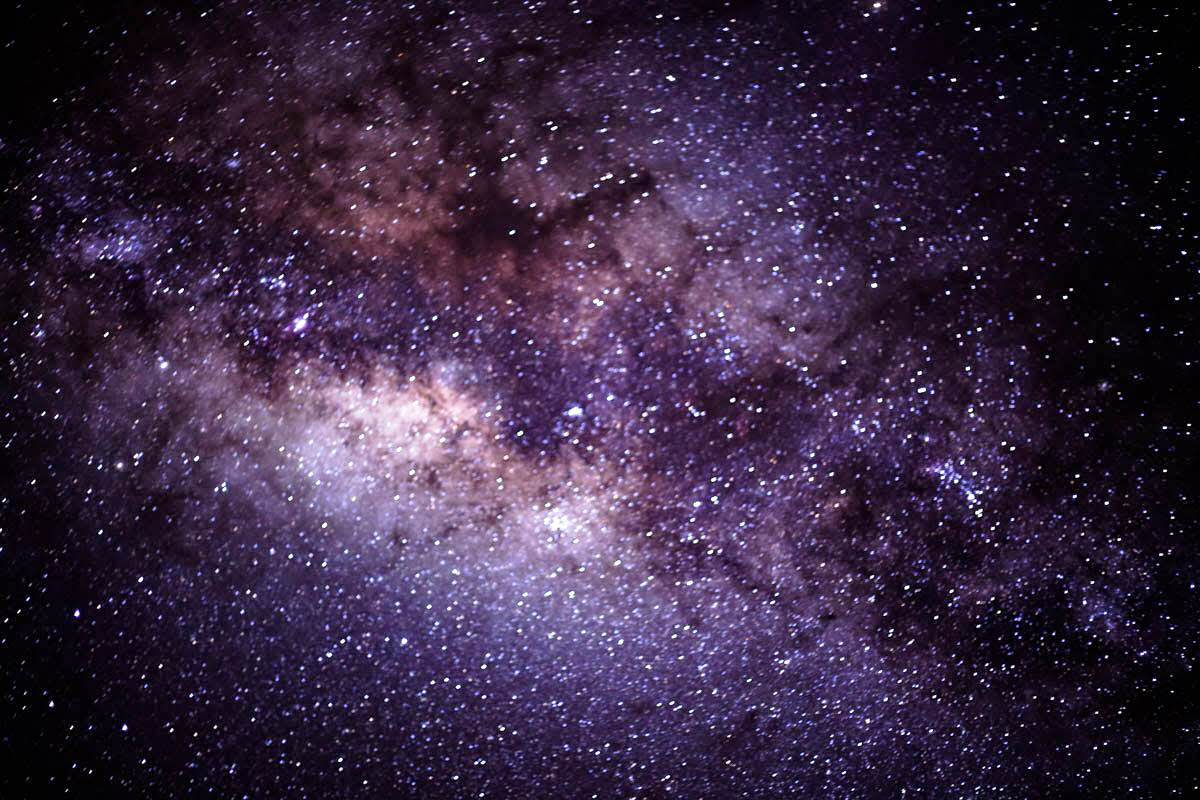
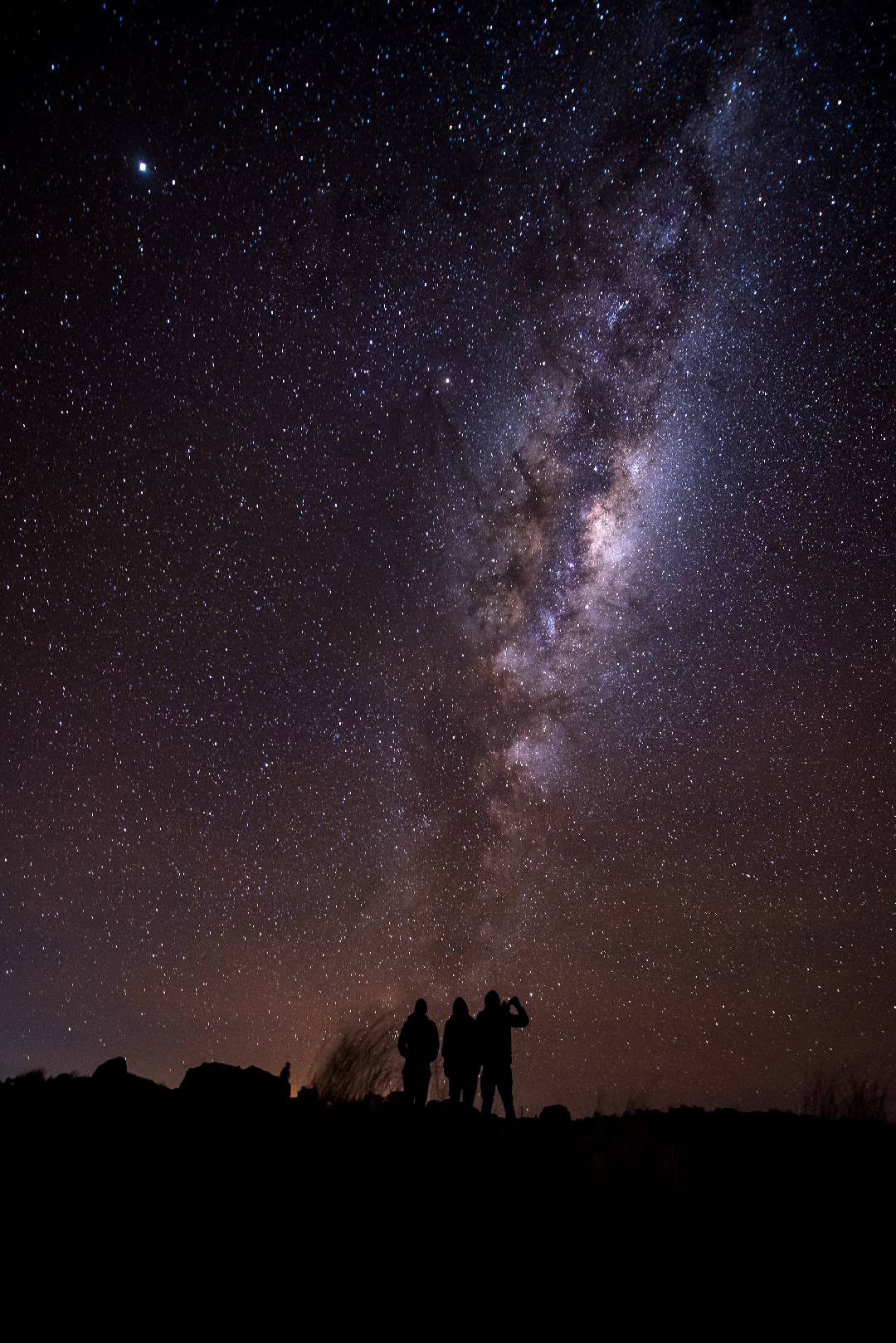
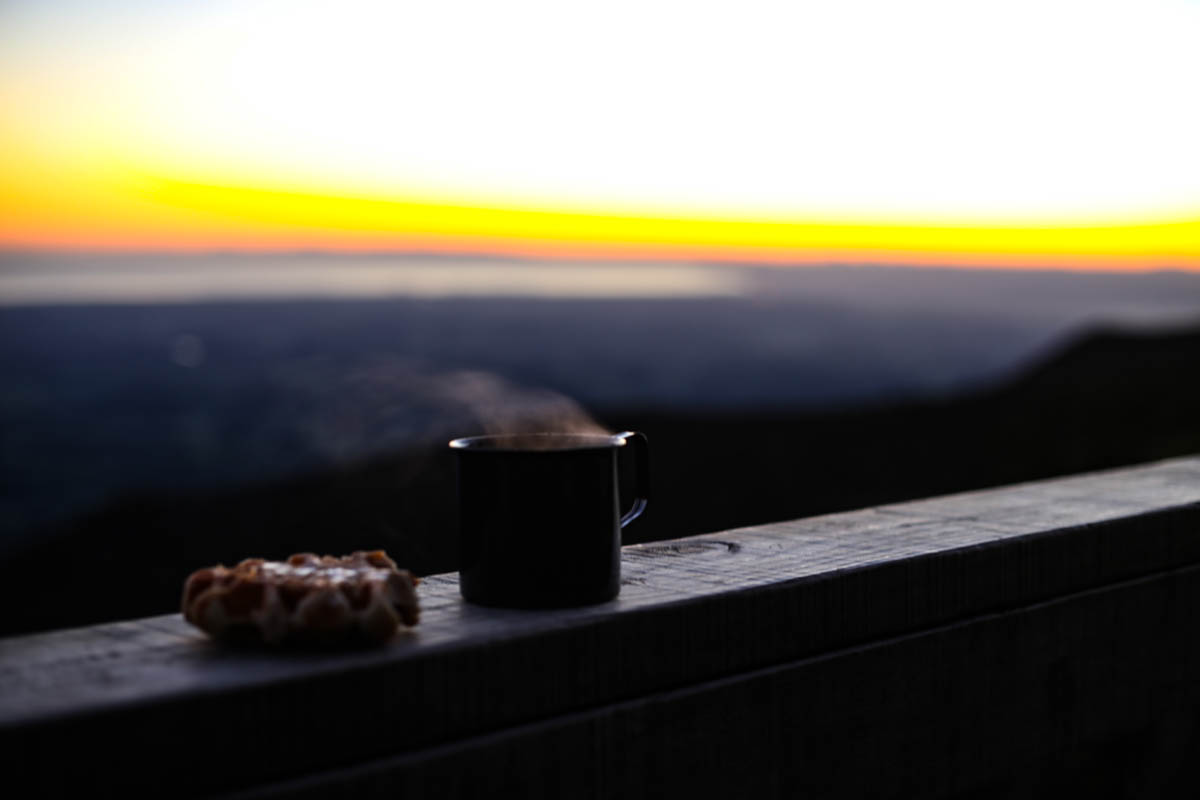

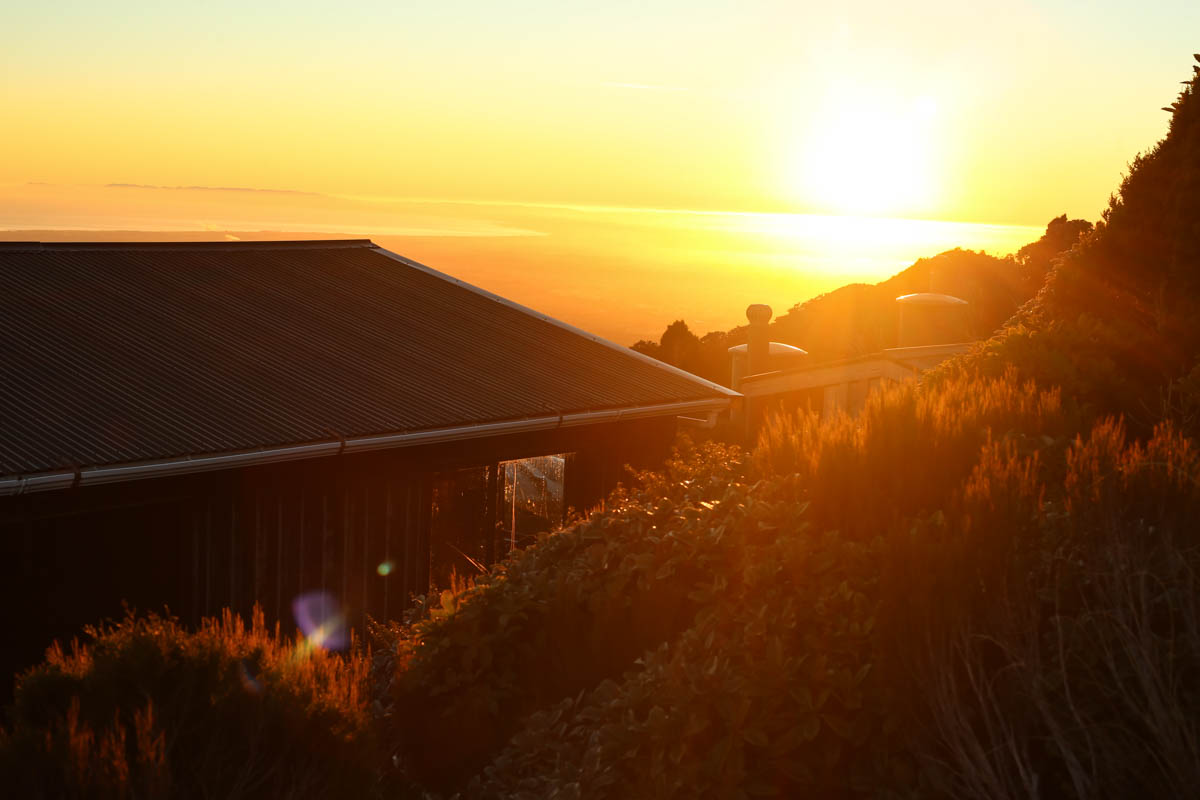
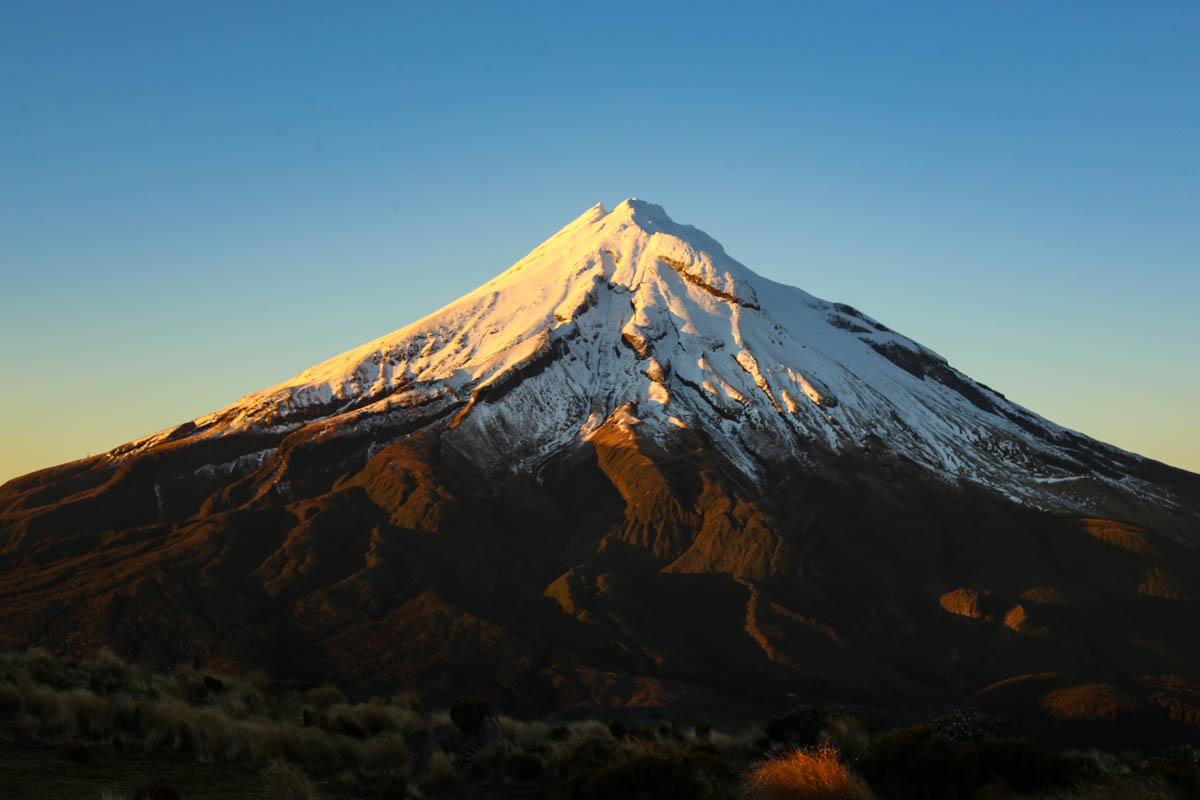
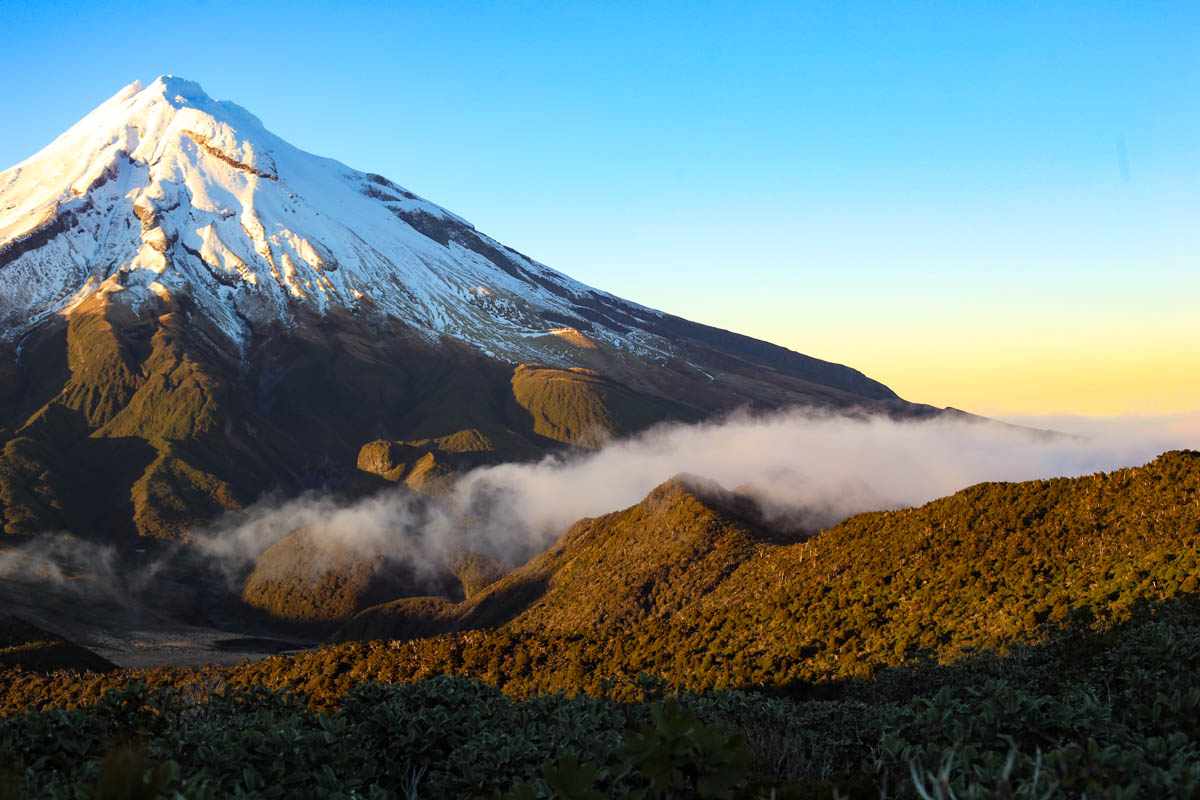
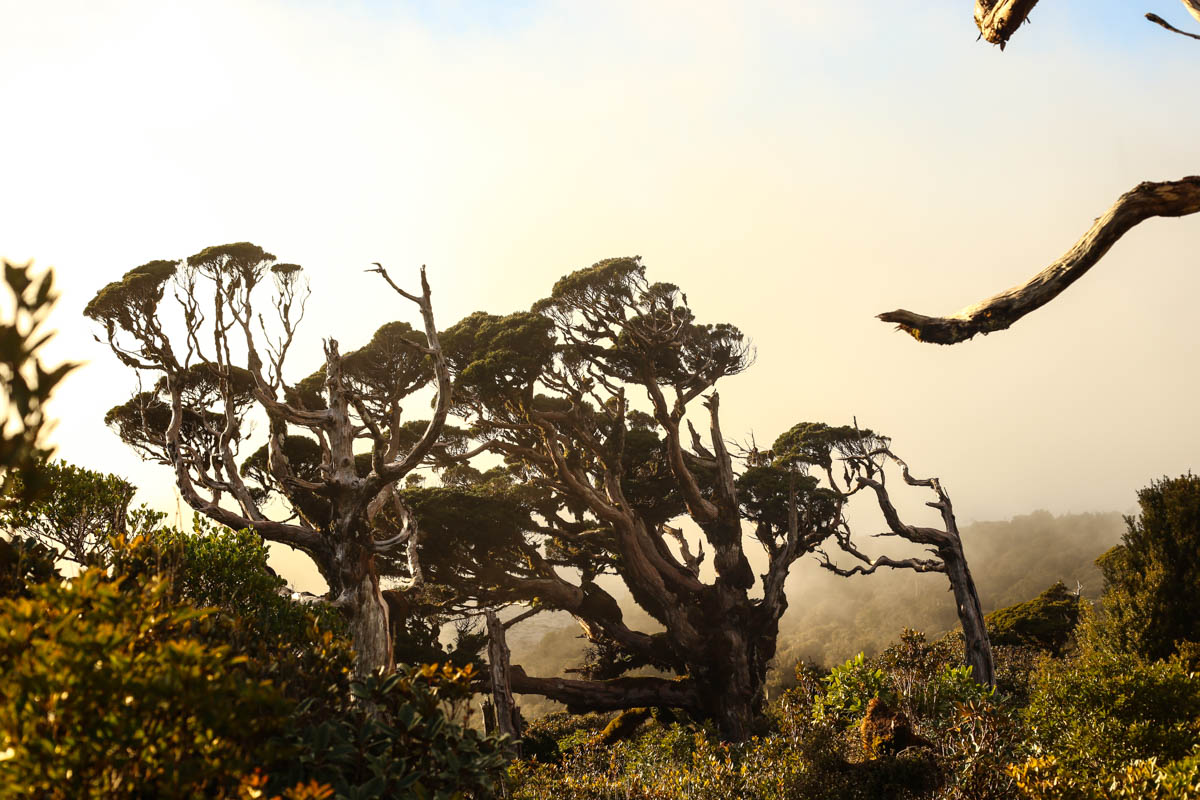
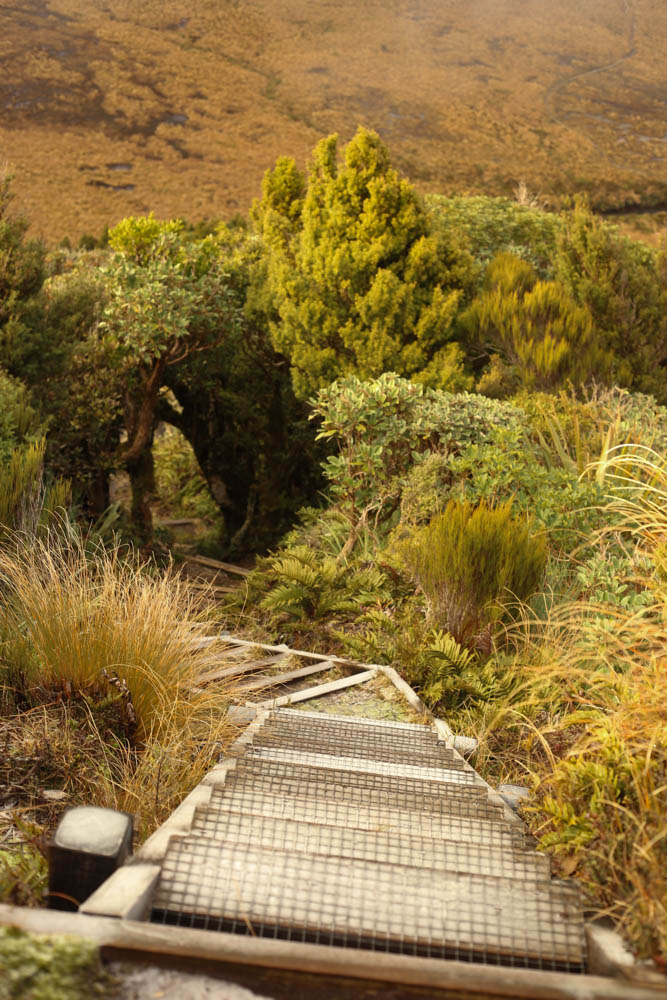
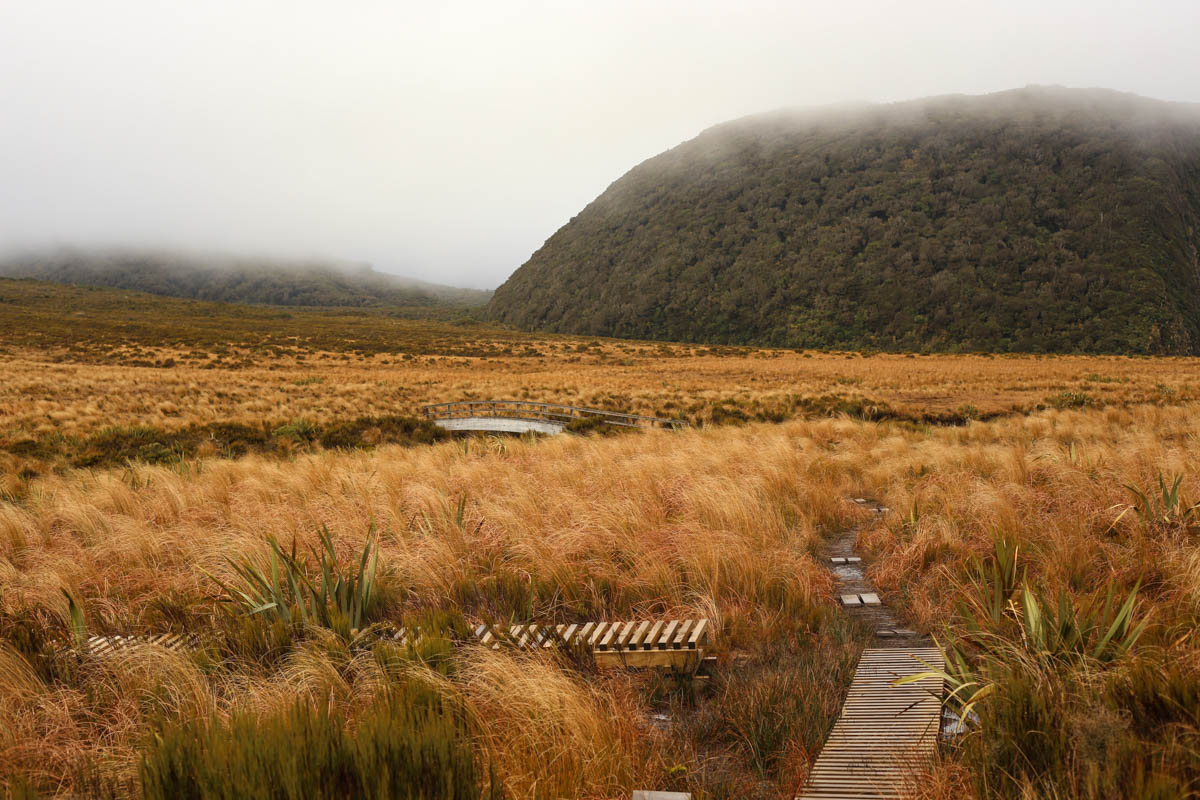
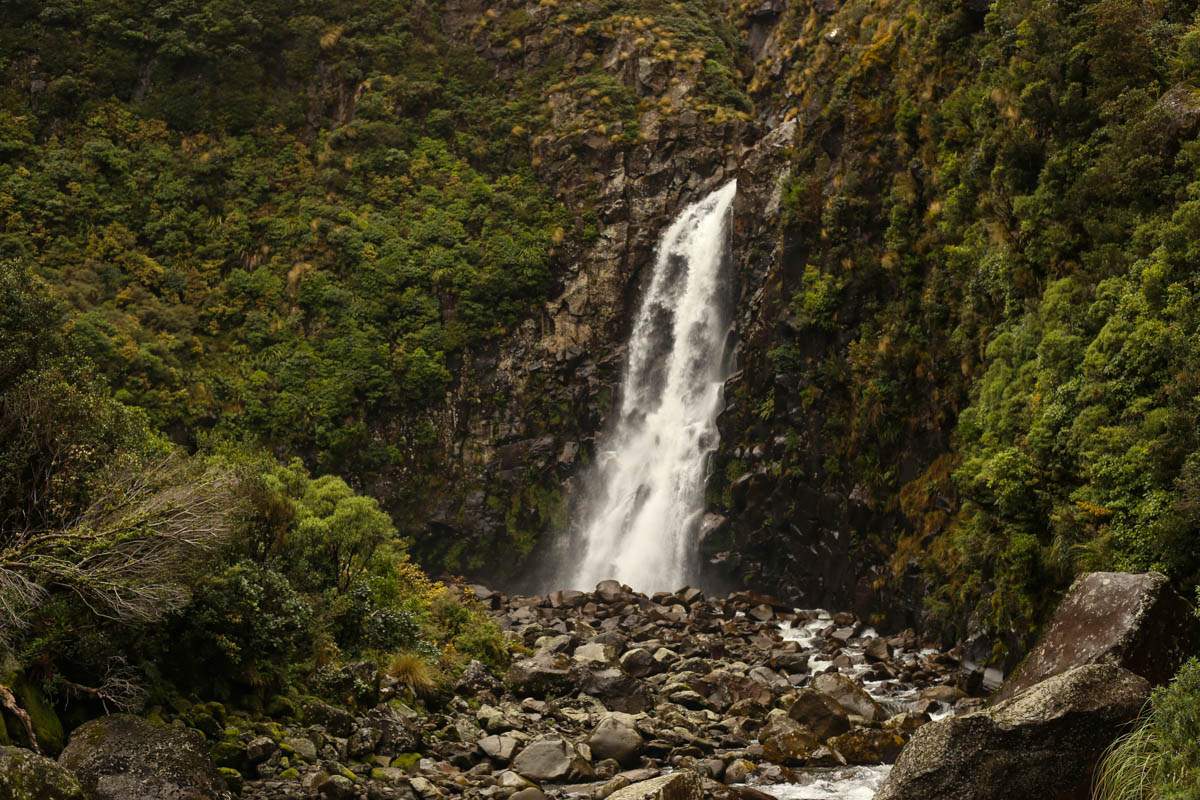
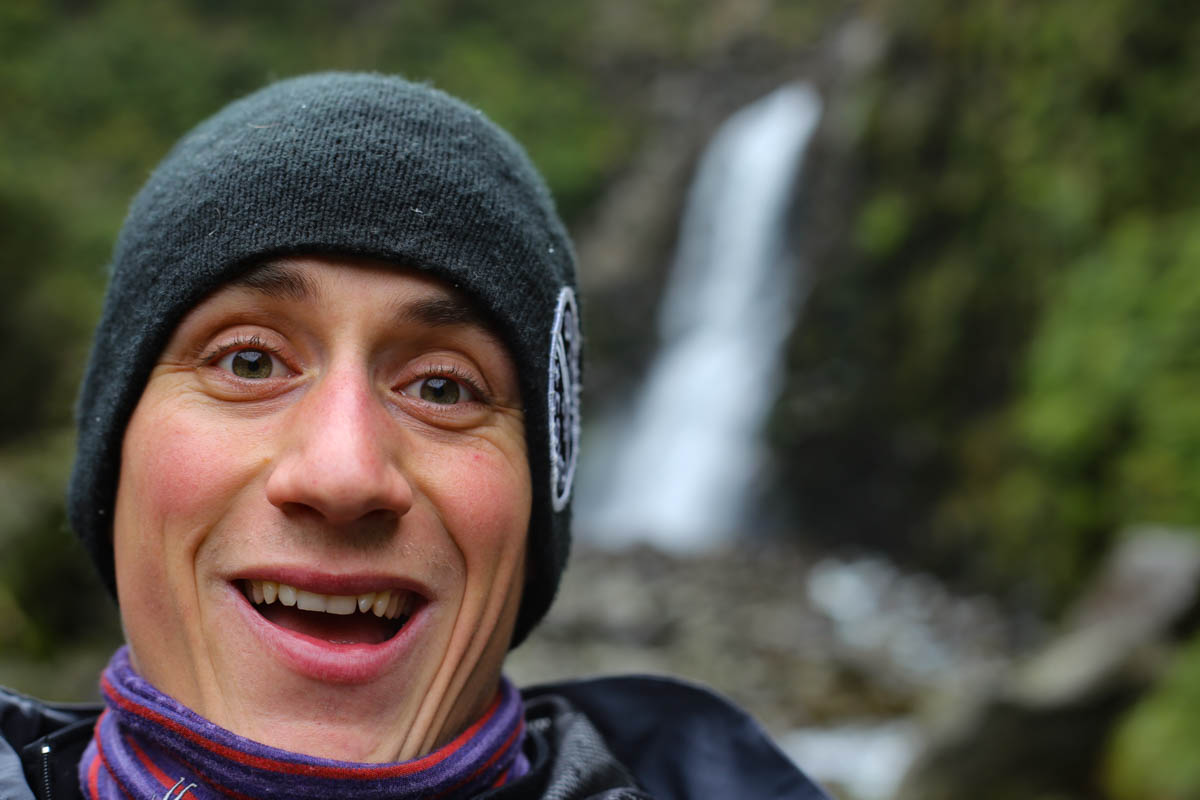
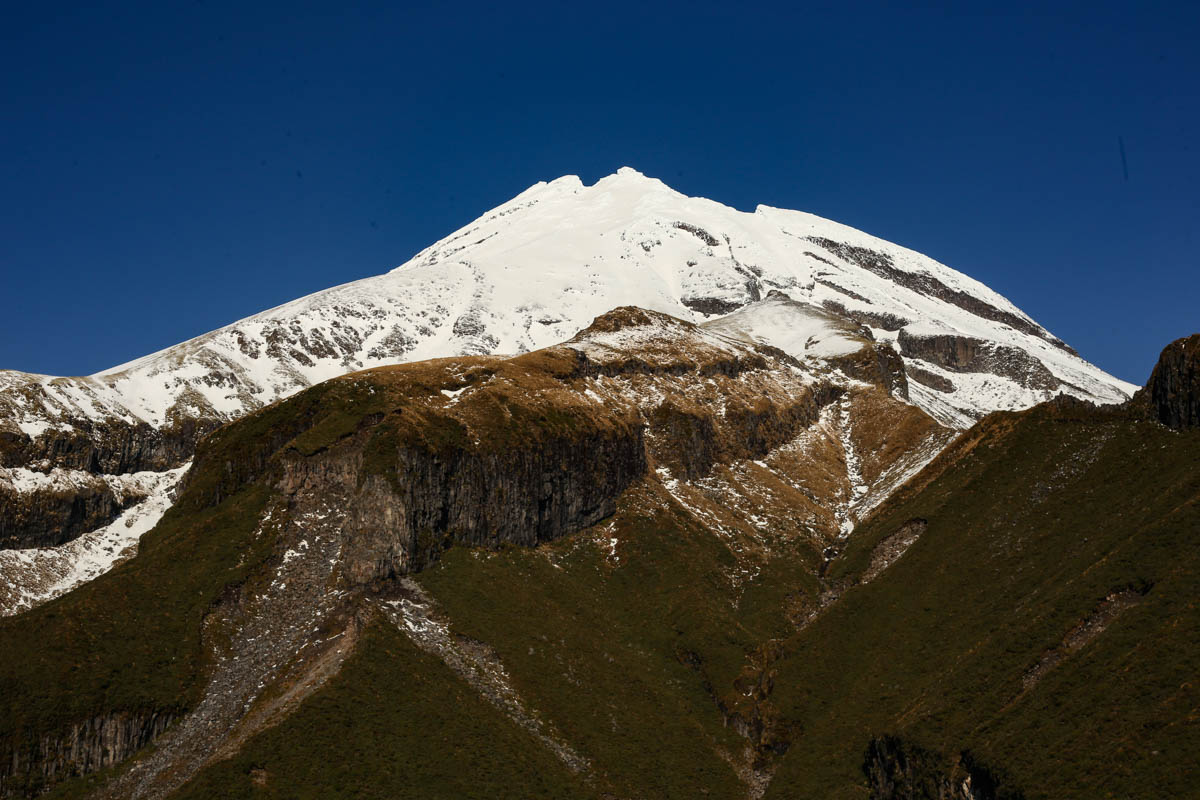
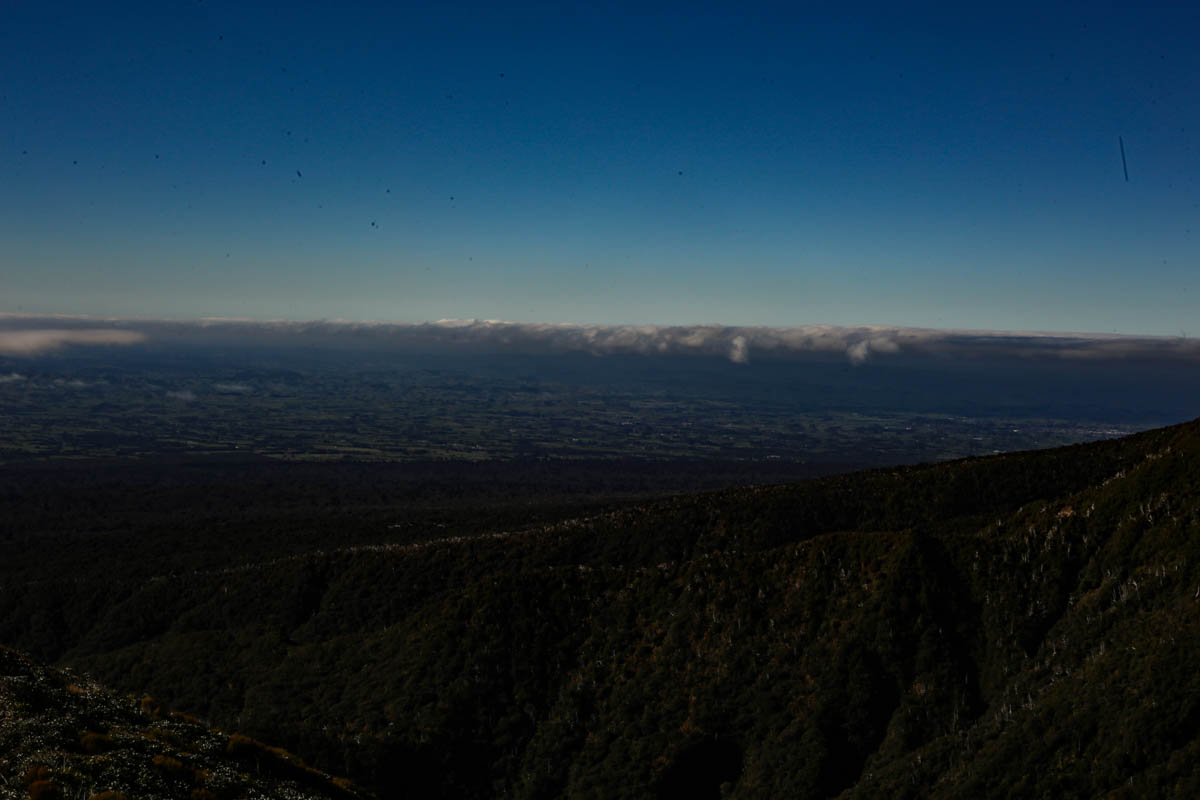
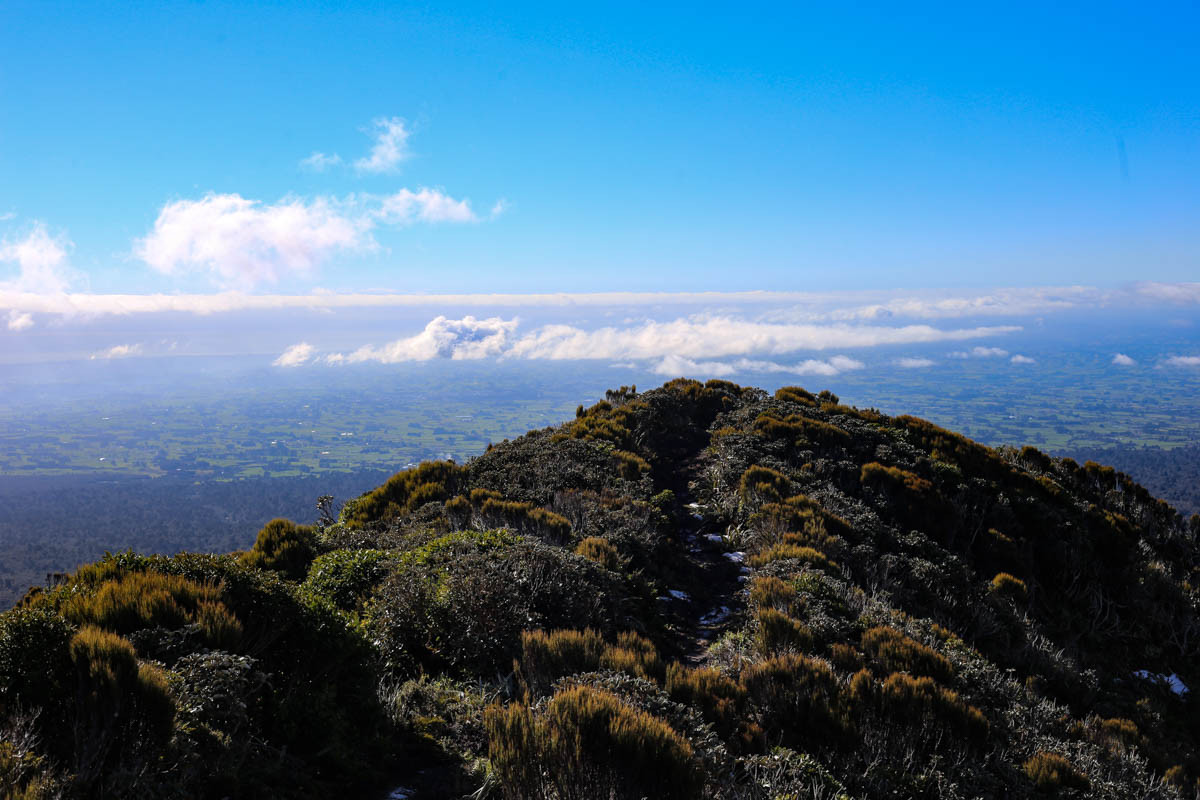
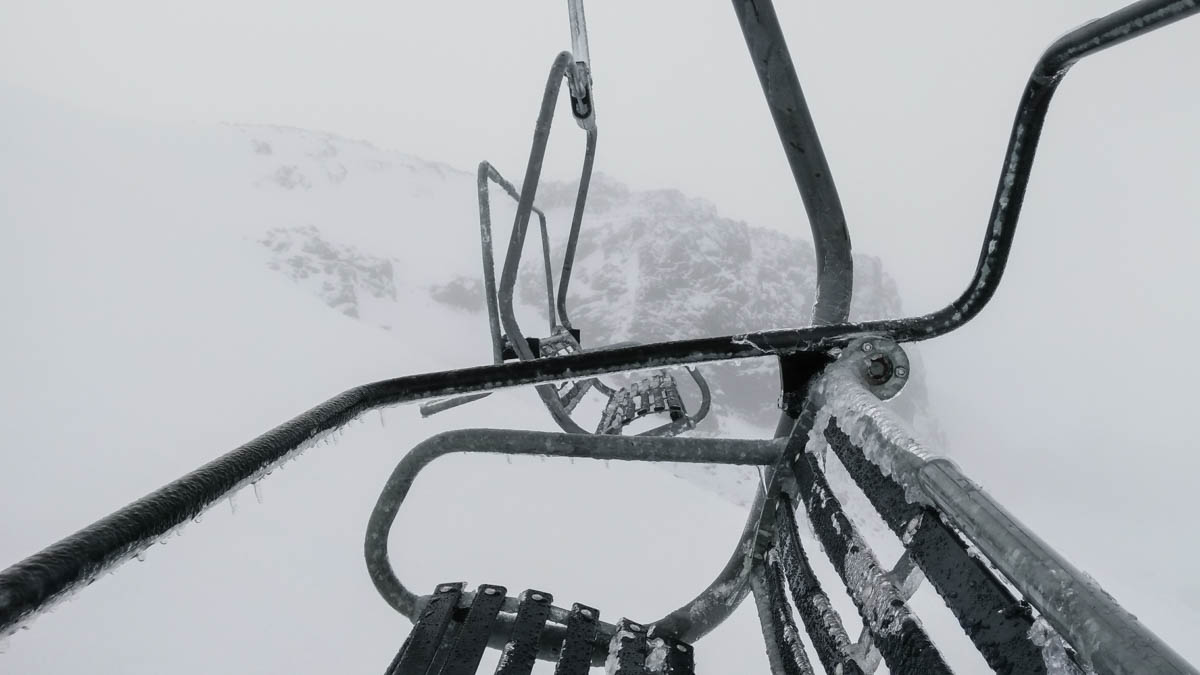
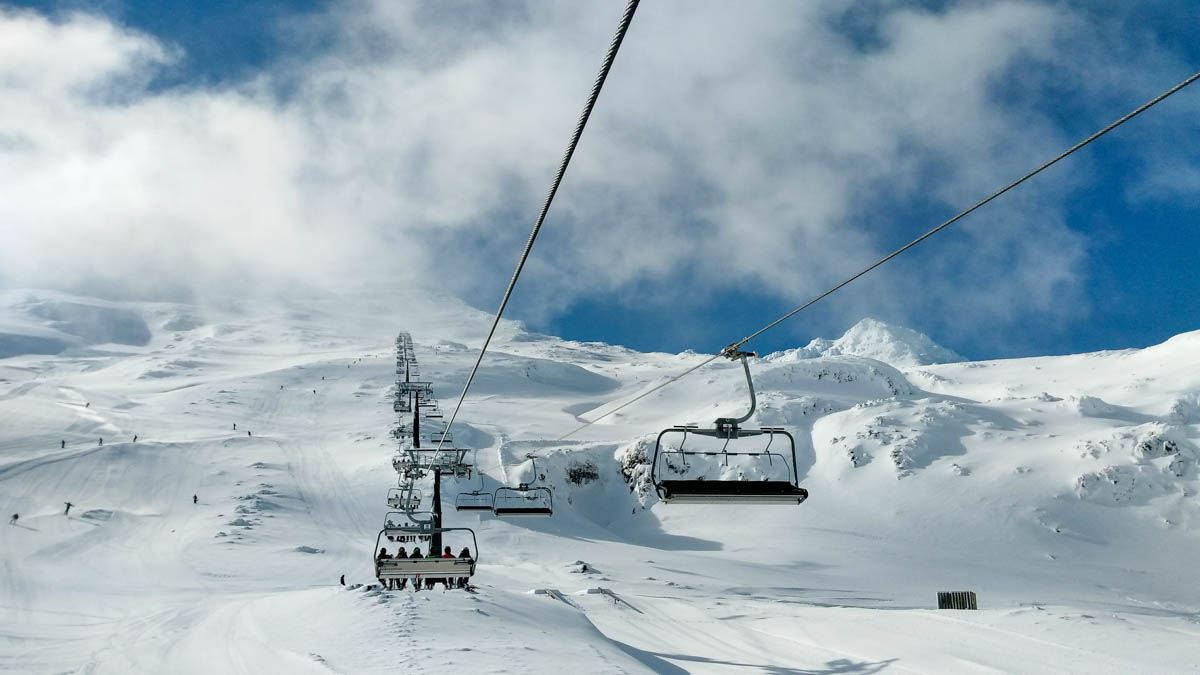

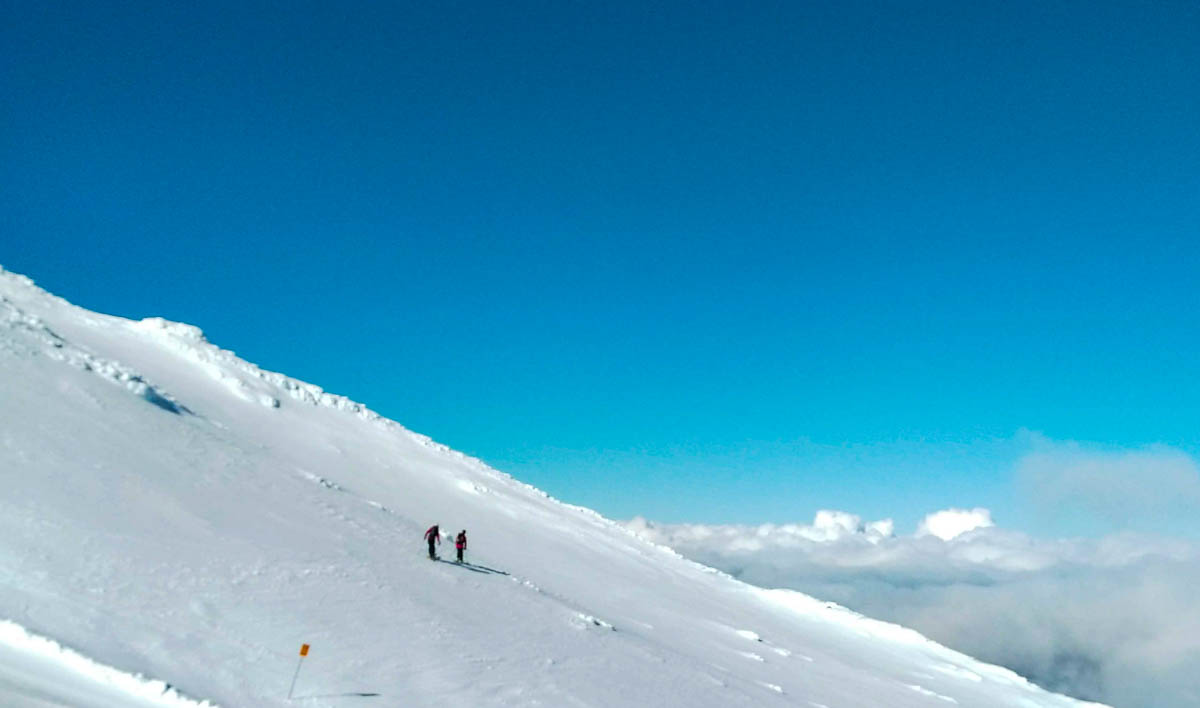

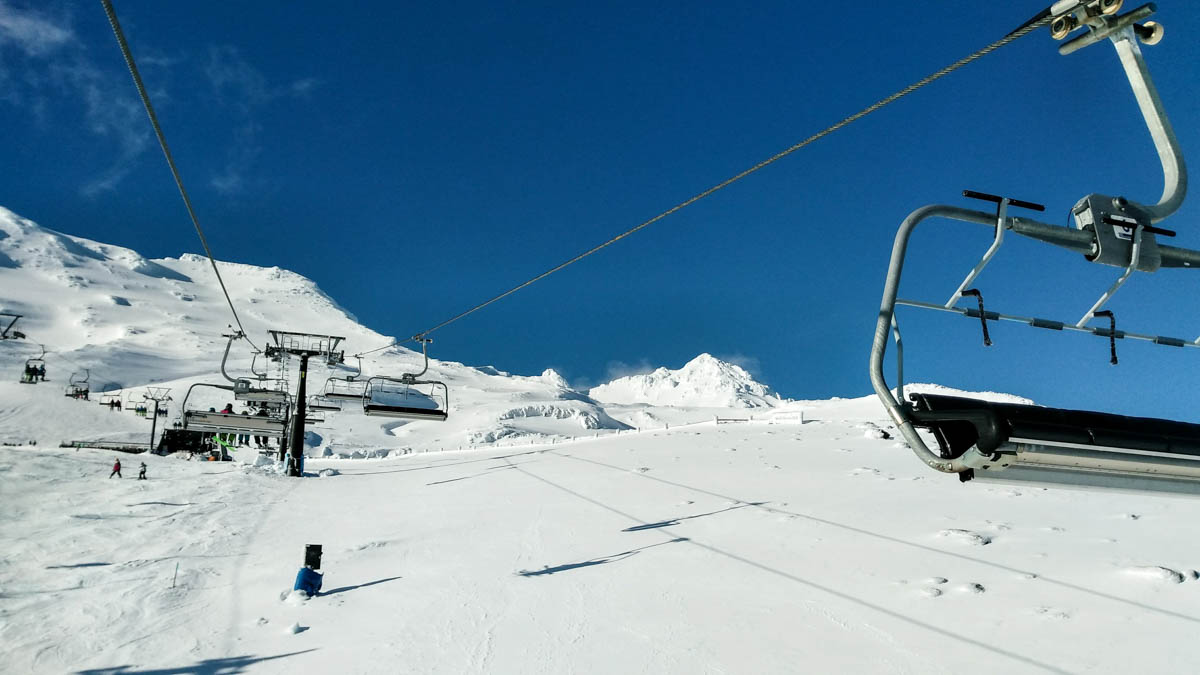
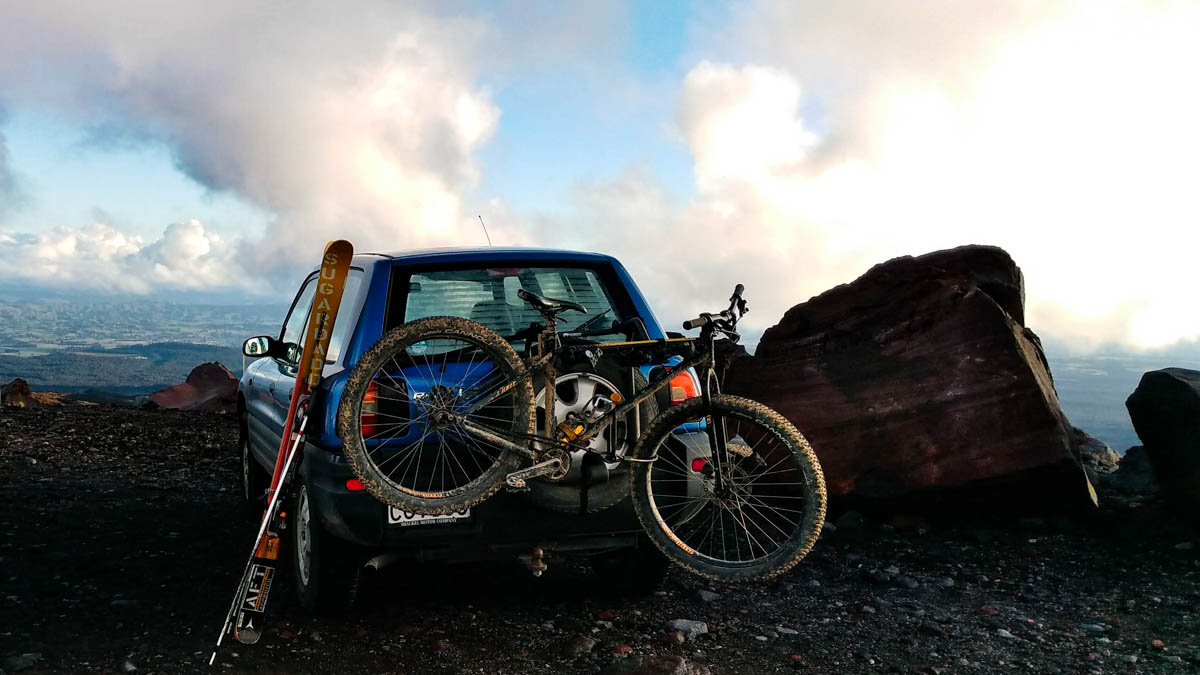
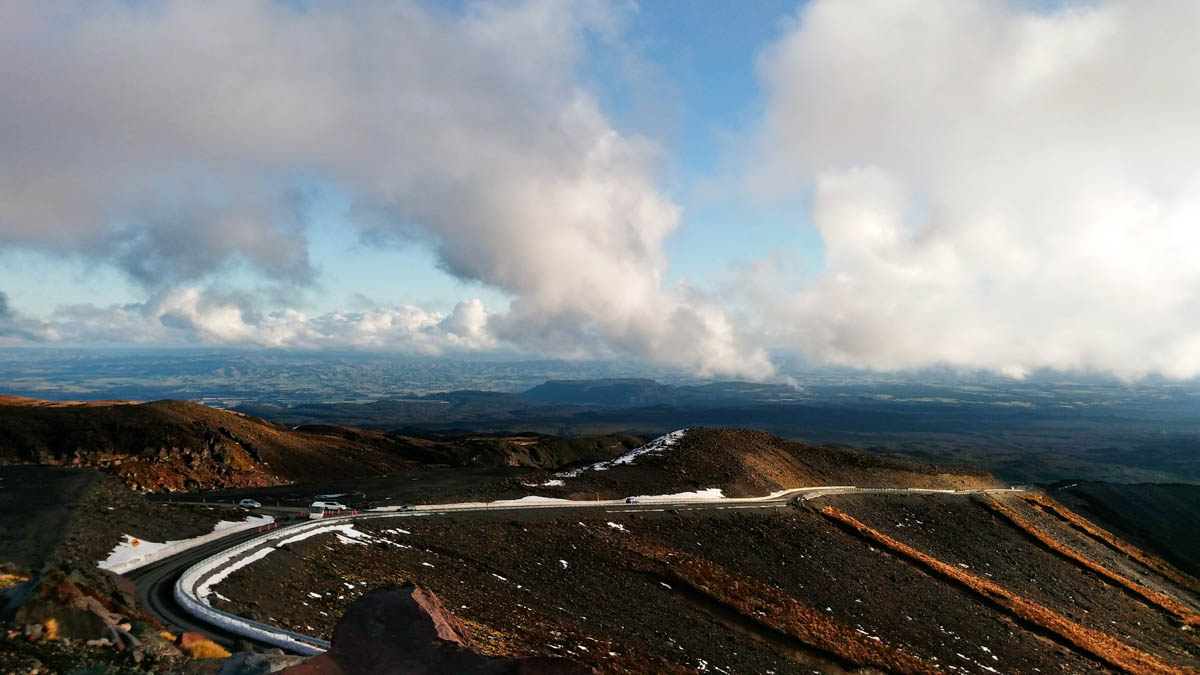
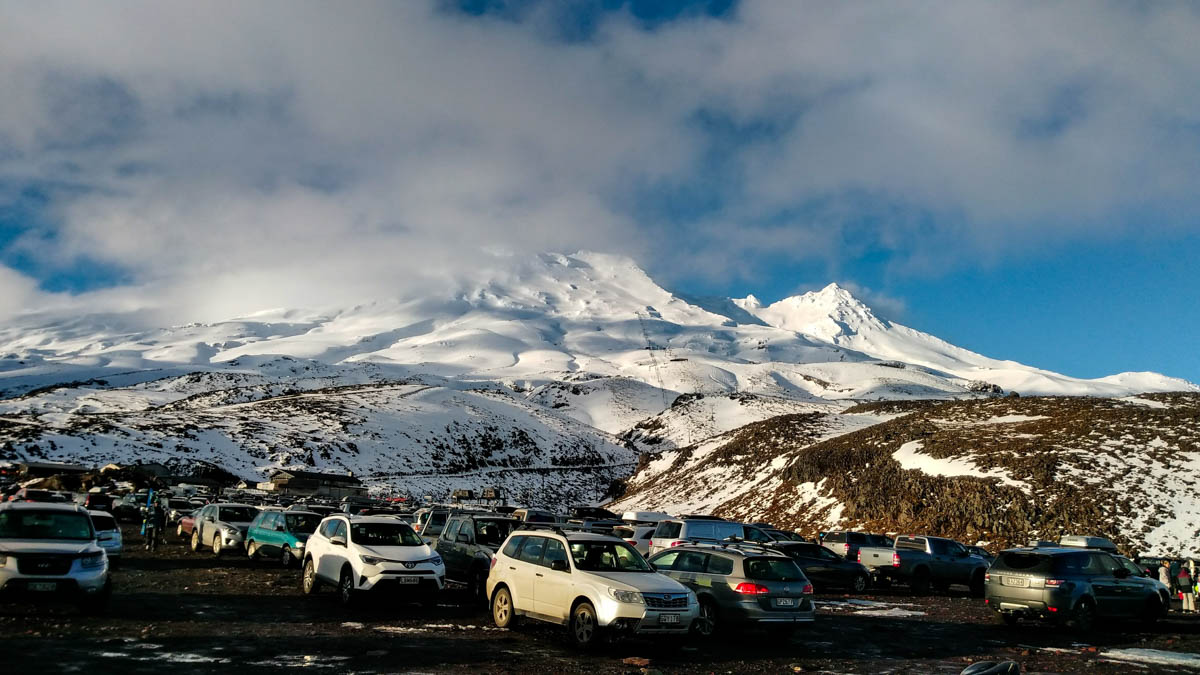
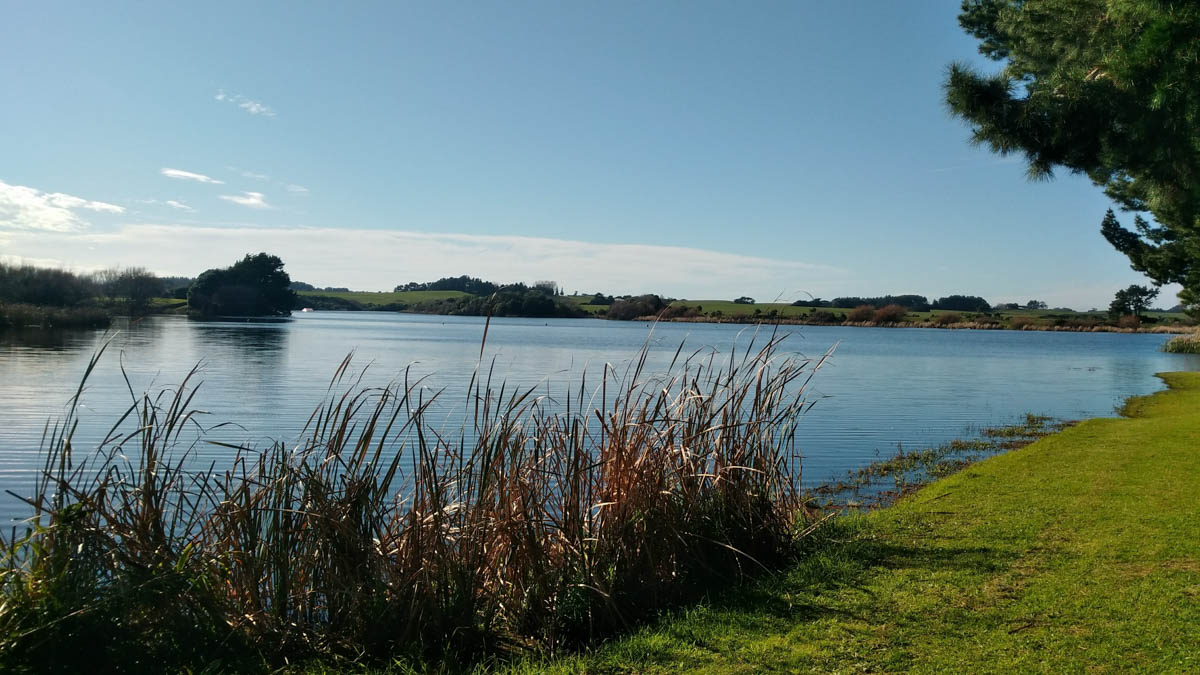
Man o' man, how time flies when you're having fun. I remember first arriving here and meeting some pitiable, bitter souls facing down the impending end of their working holiday visas, how far off those troubles seemed then. Now here we are, squaring up on the last month and a half of our time in New Zealand, taking stock of what has been a transformational year, and trying to lay some plans for our next steps. And yet there's time for all that to come, there were some mountains I needed to get involved with before I could even consider putting a bow on my time on the North Island.
Mount Taranaki is an iconic North Island volcano that had been on my list since before we left the US as one of the best hiking areas in the country. This 8,200 foot tall, nearly perfect, cone defines a huge swath to the island's western coast, sending it's circular ring of lava fields out into the Tasman Sea. The North Island is not known for it's vertical prominence, so Taranaki dominates the geography of it's epynonymous region in a staggering way. Initially, I had hoped to climb the peak (often cited as NZ's most gratifying summit), but a couple bad spats of weather pushed back my trip to the region and left the cone thoroughly encased in snow. So I was left with an alternative two day tramp on the Pouakai Circuit, that would wind up being an incredible, passion-reaffirming trip.
“Only the blaze of the peak popping out of the trees assured me that this hike would not be in vain.”
The Pouakais are a low range of hills, the remnants of an even older volcano in fact, that sit just north west of Taranaki, threading the narrow gap between the peak and the sea. I set out from near the visitor center- Taranaki being the country's second oldest and by far most circular national park- on a stunner of a day wandering through the dense native bush that covers the lower flanks of the mountain. Naturally, any winter hiking in NZ is bound to be a wet and slippery affair. As I squelched my way down the trail only the blaze of the peak popping out of the trees assured me that this hike would not be in vain. Iconic, is the only real way to describe the end of the first day of the tramp; after I hauled my ass up a long ridge to crest the Pouakai range I was rewarded with unfettered views across to the imposing mountain and down to the ocean on the far side. It's hard to think of prettier stretches of trail I've encountered, with Taranaki resplendent in it's snow-capped beauty and sweeping views down to the coast when you could be bothered to look away.
This, however, is where the trip took a turn for the interesting. After not seeing a soul all day on the track I came across one very photogenic tarn atop the Pouakais. It's a pissant little body of water, but it does hold definite aesthetic value of reflecting Taranaki in it's waters on a calm day...hence making it one of the most photographed spots in the park. Turns out there was a shortcut, past the hut I was heading to from an alternate trail head, and so despite my hours of laboring through the mud there sat a dozen photographers all trying to catch a little bit of the glory for themselves. I snapped a few pics and headed on my way trying to get away from the crowd only to be stopped in my tracks as the sun went down. Not for difficult hiking, but for staggering beauty. The low sun over the Tasman sea positively lit the peak of Taranaki up with alpenglow like I've never seen. In all honestly, it may have been the most beautiful sunset in the world but I wasn't looking at the sun. My eyes were too glued to the glowing, mountainous glory.
“It’s a tricky thing shooting the stars.”
Turns out though that a couple of those photographers were after more than just a quick day shot at the tarn. One group, a large family on holiday from Korea (that I have to say fit the photophilic Asian stereotype to a T) had taken over one of the bunk rooms. Meanwhile, another couple traveling photographers arrived (perplexingly) right after sunset. I had the fire cranking and a full belly when suddenly everyone, packed up and marched out into the pitch darkness. I poked my head out to see what they could be doing and caught a breathtaking view of the milky way arching from horizon to horizon. Needless to say, I threw on a jacket and chased everyone up to the ridge where I was to get my first lesson in astrophotography.
It's a tricky thing shooting the stars, and I was by far the biggest amateur in the bunch. With a little guidance though, and a kindly lent tripod, even your boy (the shaky image extraordinaire) was able to get a sensor full of milky way. The proof is in the photos. All the while, the family was absolutely blowing me, and the backpackers, out of the water with their setups and astrophotography knowhow. Elaborate light trail setups, super wide angle lenses, and a fair shake of experience had that family turning out some stellar (get it) shots. In the photos above you can see a shot where we modeled for the mom, and check out what a real star shot looks like.
The next morning, I woke to a frozen landscape. The night's dew left everything covered in a fine coat of ice, especially down where I was headed. Into the shadows of Ahukawakawa swamp. From the hut, the trail descended a steep ridge down below a low-hanging bank of fog that transformed the walk from mountainous glory into the dead marshes. The Pouakais trap water coming off the mountain creating a boggy world that turns white every winter morning as the trapped water freezes. I'm not sure if slipping on ice down the ridge and across the swamp was a better option than slogging through thawed mud. But it did certainly make for some very interesting hiking.
“t was great to have a tramp like this to bring me back under the backcountry ether.”
After a quick side-trip to a nearby waterfall for lunch, I marched my way along the apron of the mountain eventually popping out of the morning clouds to snap some epic views up to the summit as I worked my way slowly back to the car. To be frank, if every tramping experience wound up like my trip to the Tararuas in my last post I probably wouldn't be at it for long, so it was great to have a tramp like this to bring me back under the backcountry ether. Especially seeing as it may be one of my last tramps in New Zealand.
As I was descending the long ridge of Taranaki back to my car, I looked out east across the breadth of the island and there poking it's head above the clouds- miles and miles away- was another mountain, and a familiar sight. Mt. Ruapehu, the destination of my next adventure. The size of this little country really does get put into perspective at times like this. A clear day and a little elevation is all you need to see with unaided eyes halfway across the island.
“It was time to try my hand at a little southerly skiing.”
Ruapehu you've heard about on here already, it's the largest volcano on the island located just south of mighty Lake Taupo. Mitch and I drove up it's slopes a few months back to a (then) snowless ski field. Well the snows have certainly come here down south, so I reckoned it was time to try my hand at a little southerly skiing.
After some recuperation I loaded back up and headed back to NZ's carrot capital Ohakune, the resort town 20 minutes down the road from Turoa. On the North Island you basically have two options for skiing, both are located on Ruapehu just covering different aspects of the mountain. Turoa lies on the southerly side, boasts the country's highest lift, and most skiable acres. It was a natural choice. Plus, all else aside it is on the side of an active volcano, and how many times do you get to ski that in your life? It wasn't looking like I was going to line up a powder day, given that at any time it has just as high a chance of raining as snowing. So, I did my best to hit the slopes with some sun...suffice to say I was not entirely successful.
After camping just down the road from the hill (gotta love NZ for that) I grabbed some old beater skis from a local rental shop and headed up bright and early to make the most of my day on the hill. Quick rant: This was the first time I'd ever rented ski equipment, and man I get the standard tourist gripes. The boots were so packed out that they were simultaneously uselessly loose, and uncomfortably pinch-y. A tough, and terrible balance to strike. Anyhow, the morning was looking questionable with clouds rapidly pouring in from the west, and as I was waiting to grab my ticket things took a turn for the worse. Rain.
“The snow was still absolute boiler-plate every where I went, but man those views pay dividends.”
What followed was one of the grimmest mornings of skiing I've endured. Alternating between freezing rain, pelting ice, howling wind, and completely socked in fog, I stumbled blindly around the slopes of the hill. On top of all that I'd bumbled my way into skiing during school holidays, so it was uncommonly busy. In all, suboptimal conditions. But, I'd be damned if I wasn't going to enjoy the day, and after a little perseverance, I was duly rewarded. After a morning of deicing their highest lift (High Noon Express, those copycats!) they opened up their highest terrain just as the morning clouds blew out and instantly transformed view from arctic wasteland, to above-the-cloud paradise. The mountain etched in white, with a blaze of blue sky above, and all below us a field of clouds stretching out over the low hills. The snow was still absolute boiler-plate everywhere I went, but man those views pay dividends.
All skiing is above tree line in New Zealand, and it was easy to see why this area is the country's largest. Absent any trees or major landmarks to set a firm boundary of the area it's a bit of a free-for-all. Just ride the lifts up and go where ever you please, just don't go too low because you'll run out of snow, and lifts, in a hurry. It turned out to be a great afternoon of ripping far-flung ridges, dodging families, and seeking out anywhere the sun might have softened the snow from it's concrete state. It felt great to get out on skis again, even if the conditions left a bit to be desired.
So, looking ahead I've got to plan out my final New Zealand adventures to make the most of our final month and a half (gasp). One big item is still on the list: skiing the South Island. My Turoa experience was just an appetizer for the main course of South Island skiing that I have lined up. But all that's a story for next time.
My Route:
Tips For NZ Travellers:
- Lake Rotokare outside of Hawera is a great little camp spot if you're looking for something in the Taranaki region. It's set amidst a bird sanctuary and you'll hear the kiwi calling to each other all night. Plus driving through the protective gates totally feels like entering Jurassic Park.
- You can climb Mt. Taranaki any time of year (given the right gear and experience), but if you're not into battling the snows in the winter the Pouakai Circuit shouldn't be short changed. I'd defend it as one of the best circuits on the island.
- When on the Pouakai Circuit, you'll be tempted to do the Bells Falls side trip. It's an impressive fall, if not mind blowing, but it'll take a solid hour and a half with no rest to check it out.
- Apparently mid-July is still "early season" on Ruapehu (despite that being the equivalent of skiing mid-January). With the typically wet snow the best time of year is spring when more terrain opens and the slopes to to corn every afternoon.
- If you're debating between skiing Turoa or Whakapapa, keep in mind that generally Turoa stays out of the wind a bit more and doesn't have quite as many weather closures. Check the forecast!
- Goes without saying...don't be like me and ski in the middle of a school holiday for no reason.
New Home // Old Friends
We were settling in nicely here to our new home in Wellington when a visit from our old friend prompted some epic adventures…
The Wellington Way






























Well, we've been down south for 8 months and I'm finally starting to feel like I'm missing things in the US I won't get back. Namely my little sister's graduation. Elle just wrapped up her Spanish degree at Oklahoma State, and like the boneheaded big brother I am I was nowhere to be seen when she crossed the stage. Nonetheless, I'm proud of you sis!
Beyond that, Meredith and I are really starting to get settled into our Wellington groove. I've been busy polishing my barista and e-bike skills at Bicycle Junction, which Mere will tell you is a perfectly suited shop for yours truly. In my off hours, I've been living it up with all the great trails conveniently located right outside the city center and with the southerly winter swells getting the local surf breaks working. Meredith has been keeping herself busy temping around town as she gets ready to head back to the US for her cousin's wedding. We're both falling in love with this little city and will be doing some more serious job hunting for gigs that could compel us to hang out past September.
“There were no glorious stands of yellow aspens, but it still scratched the autumnal itch”
In the meantime though, I've settled into a little adventurous routine of loading up the RAV with my surfboard, bike, and tent and heading off to check out what all the North Island has to offer. Let me tell you, it has jungle and rugged coastlines in droves. I started off with a very autumnal trip out through the weekenders paradises of Greytown and Martinborough on my way to the scenic surfer's township of Castle Point. In Welly, the weather for most of the year is low 60's drizzly with a stiff breeze and most of the vegetation is native (read: no autumn colors), so it was a fun surprise to head out into these tarted up roadside towns basking in their in full autumn glory. There were no glorious stands of yellow aspens, but it still scratched the autumnal itch.
Most recently, our friend (and former roommate) Mitch came out to visit for a couple weeks and we had a hoot showing him everything Wellington has to offer. Namely solid craft beer, plenty of nightlife, and every type of Asian food under the sun. Mitch, congrats buddy on being the first friend to visit completely of your own volition. Colorado fam take note if you come way down south Mere and I will have you loving New Zealand and rethinking your five year plans.
Into The Jungle












































Naturally though, Mitch came all the way across the globe not just to hang out in one little city. So with Mere, unfortunately, a little tied up at work we loaded the RAV and hit the road for The Great Man-cation 2018. First stop, Mount Doom.
“First stop, Mount Doom.”
Our home base for this grand excursion would be the small ski town of Ohakune located just below the slopes of the iconic Mt. Ruapehu- one of several landscape domineering volcanoes at the heart of North Island. Most notably, the area was used to film scenes set in Mordor in the Lord Of The Rings trilogy, and let me tell you those scree and snow covered slopes feel every inch of Mount Doom. But where there are slopes there will be skiers, we cruised up the winding road from Ohakune climbing high above the trees to the foot of the local ski field. With the volcano towering behind us and miles of jungle covered hills stretching out ahead of us ol' Mitch got a taste of the drama that New Zealand landscapes can provide. I'll be sure to head back there in the winter to check out the slopes, without a doubt it will be unlike any hill I've ever had the pleasure of skiing.
“Five hours of adrenaline pumping cave shenanigans with some glowworms thrown in for good measure.”
The next morning we were up and on the road bright and early for another Kiwi classic adventure, the Waitomo Glowworm Caves. If you've watched the notorious caves episode of Planet Earth you'll know exactly what I'm talking about, we headed out to see these little glowy guys up close. But of course it's New Zealand so you have the option to make your worm viewing EXTREME! We opted for the "Black Abyss" package with a local guide company which promised five hours of adrenaline pumping cave shenanigans with some glowworms thrown in for good measure.
We rolled up, tossed on a wetsuit, got a five minute crash course in repelling, and before we knew it found ourselves dangling over a hundred feet of rope that plunged into blackness. After squeezing through a tight throat we found ourselves swinging into the cavernous spaces of the underworld. That's the Kiwi way, give you just enough info to not kill yourself and let 'er rip. After repelling into the cave we were treated to an onslaught of cave action including a pitch black zip line, tubing the underground river, squeezing through half submerged passages and jumping off waterfalls. A particular highlight was laying back on tubes as we were slowly pulled through the still blackness of the caves and thousands of glowworms created intricate, shifting constellations on the ceiling. A final squirm through some tight squeezes and free climbs up torrenting waterfalls had us singing hallelujah when we finally saw sunlight at the end of the tunnel.
“That’s the Kiwi way, give you just enough info to not kill yourself.”
No time to waste though on a whirlwind trip way down south, the next morning found us careening down dusty mountain roads in a shuttle van on our way to the beginning of our next adventure, The Whanganui Journey. This trip is the only "Great Walk" done entirely by canoe, and as many of you know I'm a big fan of a good float trip. We booked the trip for three days of paddling through endless canyons of green, believe me it delivers as advertised. After a harrowing van-ride out to the only put in point for days of river time in either direction and an even worse safety briefing than the one we received before our kayak trip in Abel Tasman we shoved off and paddled out into the mighty Whanganui River.
The river is the highlight feature of the epynonymous Whanganui National Park, which was created to preserve the rugged native jungle and insanely steep volcanic hills of the region. For much of the park boats are the only way to get access. In the summer it's a popular canoe paddle, in the offseason it became one of the most remote feeling experiences I've ever had. We started in a backwoods town, drove even further into the middle of nowhere, and started paddling down a river on which we were the only souls. It was an insane feeling being that deep in the bush and not seeing one scrap of human activity. Over our three days on the river we would see one jet boat two times, and that was it. Guess that's the benefit of braving things in the offseason, you risk more with weather but reap the rewards in solitude.
“The river opened views to new, deeper, bush-clad canyons.”
Pretty quickly we learned that canoes are an inferior river craft. Our laden boat was stable and sat deep in the water but every pressure wave became a paddling task and we soon found out, much to Mitch's chagrin (as he was sitting up front and all), how little of a splash would make it over the rails and right into our laps. Overall it was a bit of a lazy river, in a proper raft we may not have even paddled for three days, but by canoe it felt a proper adventure. For a couple of rookie canoeists we fared pretty well, which is good because for the most part we were having trouble keeping out jaws from dropping off our faces as every bend in the river opened views to new, deeper, bush-clad canyons.
Day one was a monster, it had us covering over 40 kilometers of open river to the insanely remote John Coull Hut which is only accessible by boat. After a long day on the river winding our way through the twists and turns of a deepening jungle, we were relieved to make this noble outpost our home for the night. With the hut all to ourselves we cranked up a roaring fire in the stove and chef'd up the high class backcountry cuisine a float trip allows, you know delicacies such as Scrumpy's cider and Spaghetti-Os.
Surprisingly, day two had me thinking a lot of my time in the canyons of Utah and Arizona. Only instead of ochre cliffs rising over head we had towering granite climbing higher and higher on either side and every square inch of available land was covered in green. Only the grey of the misty skies and river broke the all-encompassing, verdant, native jungle. Oh, and there's water lots of water, falling from the skies, splashing in the rapids, dripping from the ferns; it's funny to look back at my time in the desert and think how many miles of dry creek beds I've hiked down contrasted to sailing through canyons of a similar size and shape on a coursing river.
“By day three we were pretty much a couple of old canoeing pros.”
By day three we were pretty much a couple of old canoeing pros. Which was good because we left our shelter at the maori marae of Tieke Kainga (I'm not sure what a marae is really apparently maori people go to live there in the summer, but for us there were no people or even helpful placards to learn about the place) and headed straight back into the tightest section of gorge yet which promised the most rapid action. The stretch on day three really showed up, mists swirled among the hill tops as nearly vertical walls of green plunged on either side of us into the racing water. Several times we simply let the boat drift aimlessly through calm stretches to lay back and soak up the sea of green all around us.
After being well forewarned of the final rapids on the river we sailed through 'em without breaking a sweat. The outfitter gave us a 50% chance of not tipping the canoe on the trip and honestly I'm wondering what kind of jabronies they're renting canoes out to. Maybe it was our finely honed canoe skills or maybe the river was running just right (it was probably the latter) but we pulled ashore at the take out with no tip overs and smiles from ear to ear.
I guess the lesson is this ladies and gentleman: if you come visit us in New Zealand we will show you a good time and we will drag you along on an unforgettable boat trip. Our door is always open.
Our Route:
Tips for NZ travellers:
- The Whanganui Journey is totally doable off season you just run a higher risk of cancellation due to bad weather or river levels.
- Yeti Tours in Ohakune rents in the offseason and are a solid outfit, just remember to call and verify your departure the day before.
- Canoeing is never going to be a dry event. Keep a freshie set of warm dry clothes in your dry-bins to look forward to after a long day on the river. Also don't wear cotton...Feel like that should go without saying.
- Waitomo is high on every list you read for a reason, you don't need to spend a million dollars and do the extreme version like we did, seeing the glowworms is totally easy and accessible.
- That said, the adventure trips in the caves are rad and there aren't any mandatory claustrophobia inducing squeezes if that's the sort of thing you're not into.
Familiar Faces In Faraway Places
Things have been an absolute whirlwind as we wrap up our time on the South Island. In this edition: solo tramping, a visit from Mere's family, and one rainy trip with our friend Matt.
The Tussockland Tussle
























With the impending arrival of the Tousignant family, Mere and I were very excited to have our first visitors down south. As a bonus the action got started a little early when Mere's mother, Lisa, came down ahead of time to do a luxury tramp on the Milford Track that had us all very jealous. She was down for a few days to acclimatize, so I decided to leave them alone for a little mother/daughter time and I headed out to tackle the Motatapu Track.
This 3-day tramp traverses the rugged, tussock-covered high country between Wanaka and Queenstown. It's much less popular and much less built up than many of the hikes we have done thus far. It falls into the category of a "marked route" which means they don't so much build a trail as put up orange markers and let you figure out your own way. This route was particularly tough as it was 3 days of constant vertical change. The trail eschewed the valleys below and wound it's way around barren peaks, down to beech laden canyons, and back up over windswept ridges. Up and down, up and down the route went through some of the toughest country New Zealand has to offer.
Suffice to say, I'm glad I didn't drag Meredith along with me on this one. The constant up and down was grueling enough but the lack of a real trail made this hike one of the most challenging I've tackled to date. That said, it's difficulty drives away the masses handily so those who soldier on through it are rewarded with trails and valleys and mountainsides all to themselves.
If I thought this was tough, some Brits I bet along the way really put things in perspective for me. They were hiking the Te Araroa trail that links up trails from the tippity top of the North Island all the way to Bluff down at the bottom of the South Island. Motatapu was just a blip on their radar as they crushed one of the world's great trails. They had been walking since early October...I met them late January, with another quarter of their journey left to go. Neither of them looked to be in stunningly great shape, but none the less they both kicked my ass up and over the next pass on the third morning without breaking a sweat. It just goes to show you, hiking's about the love of the game not about one particular physique.
At the end of the tramp, wound up getting a bit more than I bargained for as well, after battling the passes and stomping my way for kilometers down a river to the ghost town of Macetown (where I planned to meet Meredith) I learned that the road was unpassable for our little RAV. So I had a little lunch, laced back up and sloshed my way through the river the extra 15k to Arrowtown, to find Meredith and Lisa drinking coffee, playing cards, and waiting for my dusty ass. There's my lesson hard learned for poo-pooing 4WD advisories.
The Coolest Thing I've Ever Done














After sending Lisa on her way to her epic trek, we headed out on likely the coolest experience either of us have ever been a part of. A helicopter tour around Mt. Aspiring. Pictures will utterly fail to do the experience justice, and my words probably won't do much better, but here goes.
With some generous Christmas contributions to the NZ fun fund from my parents, a heli-tour started looking like a real possibility, and I knew just where I wanted to go, Mt. Aspiring. Known as the "Matterhorn of the Southern Alps" Aspiring may not be particularly tall, but it is undoubtedly one of the most dramatic peaks on the planet. I mean they literally used it in the goddamned lighting of the beacons scene in LOTR. It was a natural place to want to zoom around in a helicopter.
With a no-fuss pickup at the Wanaka airport, Meredith and I were off on the fastest, most expensive, most jaw-dropping, most worthwhile ride of our lives. We cruised over the low fields to pick up another group at the top of a nearby hill (how did I miss that option?) before soaring over the town and the cobalt blue of Lake Wanaka. Within seconds we were at a better vantage point than I had achieved in hours of hiking on our last trip to the area. Our first stop dropped us atop a craggy outcropping right next to the lake to look back over the waters and dramatic peaks off to the east. It was all just a taster for what came next.
We loaded up and shot back into the air and over the next ridge to enter the domain of Mt. Aspiring proper. While it tops out at only 9,950 ft. the mountain is still the highest by a good margin in the area, and it was immediately awe-inspiring rising knife-life in the distance above the glaciers that carved its upper reaches. We swooped down into the glaciated valley that climbs the peak's western side. As we edged closer to the mountain the sky disappeared behind the blades of the heli leaving us to try and fathom the true scale of the glacier that carved it's way inexorably down the mountainside to the warmer climes below.
The scale is was truly gets you on a trip like this. Each crevasse in the glacier is large enough to swallow you, no swallow the whole helicopter, without thinking twice and as we soared over the glacier we passed them by the dozen like so many cracks in a loaf of bread. The cliffs. The cliffs towered so high that literally, you couldn't see the sky. Only the countless waterfalls provided any true sense of scale on these edifices of rock as they gushed millions of gallons of water down to the valley below. Meanwhile, the pilot grinned and swooped as our whole group was struck absolutely speechless.
We encircled the mountain by heli, shooting up over ridges and back down to the glaciers below, each new valley offering a more staggering view than the one before. Then we cruised across a high hanging valley to a lower glacier that looked back on the mountain. This was our second stop. The group piled out onto the snow of Isabell Glacier in our shorts and t-shirts hooting and hollering like maniacs at the beauty of it all. This is what you come to New Zealand for, unspoiled mountains glacier-carved in their beauty wrapping around you in every direction as far as the eye can see.
After tossing a few snowballs, and taking pictures of every single angle we could think of, it was time to load back up for our bittersweet flight back. The mountain faded away like a memory behind us as paragliders swooped off of the peaks below (there was a competition on, who knew that was a thing?) and we tried to soak up every last vista we could on the way back to Wanaka. In true heli fashion, our pilot nonchalantly set us down back at the airport on a trailer barely big enough for the skids like it was nothing. Talk about a dream job.
The Tousignants On Tour




















After soaring through the peaks it was time to boogie on back to Queenstown to unite with the rest of the Tousignant clan as they came into town. Michael (Mere's dad) and Lisa were in from Colorado, while sister Davis and main squeeze Jason were visiting from Brisbane. Let's just get this out of the way off the bat: spending a week in Queenstown as a proper tourist was a whole other ball game.
Michael generously put us all up in a stellar condo looking over Lake Wakatipu with mountains wrapping 360 degrees around. We were situated just a short walk into town which was a huge upgrade from our first QT experience. So take note, if you're ever in QT know that you need to ditch your car as soon as possible so you can explore the town as a relaxed tourist and not a stressed-out driver. We shopped, we ate, we made merry, and just enjoyed the hell out of every last minute. Each day started with a mountain bike ride on the world-famous trails of the area, moved on to a casual lunch, worked in some touristy activities (but not too much, you don't want to be stressed out on your holiday from holiday for god's sake), included a solid nap, and closed with some great dinners around town.
The highlight had to be the vineyard tour Mere and Davis took us on. A decked out Sprinter bus picked us up at 11 am sharp and took us on a whirlwind tour of the finest vineyards Central Otago has to offer. At each cellar door (the kiwi wine version of a tap room) our helpful guide walked us through a diverse tasting making sure to highlight the wines that set the vineyard apart. We cruised down the Gibbston Valley to our new favorite little farm town of Cromwell and got a solid earful about why Otago is such a great region for Pinot Noir and walked through how each vineyard brought their own twist to the varietal.
Taking a yearlong vacation is just exhausting work, so it's always nice to have a holiday from your holiday. But not quite as nice as finally seeing some familiar faces way down south.
Tackling The Tempest































Speaking of familiar faces in our land, right after the Tousignant's took off we had another visitor. Matt Cohen, congratulations you officially win the prize for being the first friend to find your way to New Zealand and visit us!
Now Matt was going to be visiting a part of the country we'd visited briefly (even considered moving to) but definitely wanted to spend more time in, Nelson. Specifically we wanted to tackle a highly recommended tramp in the national park just north of town, Abel Tasman. Now this whole region is known as the sunshine capital of New Zealand for it's relative lack of precipitation and mild, mediterranean climate. That is not the story I have to tell you today however.
Abel Tasman National Park takes those sunny days and makes the most of them with a string of pearlescent white-sand beaches flanked by aquamarine waters and towering green jungles up it's length. Due it's beachy nature many visitors tackle this tramp not by foot but by kayak, an option it took us all of two seconds to jump on. So we signed up for a two day kayak one day hike through the park camping on the beach along the way.
Now, weather forecasts were swirling in the week leading up to our trip, but as we headed up the island one thing became clear: with out a doubt we were going to get pissed on. Specifically, the tail end of a cyclone was expected to dump rain on the region for the entirely of our second day. When we showed up for our kayak safety briefing the guides could only shake their heads and chuckle at our misfortune. In spite of the forecasted rain, the seas were supposed to be fairly calm and wind was supposed to be a non-factor, the two things that will make them cancel trips. So, we were on as planned.
We loaded up the kayaks (Mere and I in a two man, Matt going solo) with way more provisions than we could have conceivably fit into our packs at the outset, and shoved off. With a wave so long from our safety instructor we were free to go forth and explore the park. Now despite the forthcoming onslaught, weather the first day was actually pretty great. It was solidly cloudy but there was not a breath of wind and the sea looked like a sheet of jade glass. We cruised easily across to have a spot of lunch on a nearby island before heading around to go check out the local seal colony. With the lack of wind and beating sun we redefined "leisurely kayaking"; we'd take a few strokes then relax, splash each other, go check out some blue penguins bobbing along in the water, then maybe paddle a few more strokes.
After a couple hours of lolling along we pulled into our first campsite, Te Pukatea, which even on a cloudy day was as pretty as could be. It was a tiny crescent shaped beach flanked by jungly headlands, crystalline ocean filled the basin to complete the scene. There aren't a ton of palm trees in that part of the world, but that aside it was every inch of tropical paradise. So, we made camp alongside a select few fellow kayakers, had a leisurely dinner, and generally thought about how splendidly our trip was going.
And then the rain began.
Just as we were headed to bed the skies opened up, and continued with no abatement all night long. In the morning we were still all reasonably dry, but knew that from the second we got out of our tents we were going to be drenched for the foreseeable future. Nonetheless, the ocean looked reasonably calm, the wind was down, so we soldiered on out, packed the kayaks, and shoved out to sea.
At first things still looked pretty bright. We were wet, sure, but we were making good time seeing some wildlife and even waved hello to the only other kayakers foolish enough to head out on that day. Then the squalls came in. Bands of thick cloud passed overhead taking us from wet to more drenched than we'd ever been. The seas began to rise, and visibility faded in and out with the rain as we muscled our way northward. Before we knew it we were out beyond a very exposed headland as the seas continued to swell. We would lose sight of young Matthew in the channels between the waves, and to make matters worse our navigational point faded in and out of visibility off in the distance. With our bums tightly clenched and arms beginning to tire we had no choice but to paddle like hell in hopes of finding calmer seas in a bay to the north.
After what seemed like an eternity of taking on the full brunt of the tempest we finally, mercifully, made our way around the final headland and into the calmer waters towards our destination: Onetahuti. Total time paddling, two hours...sure seems like a lot more when you're in the thick of it. Now this beach is truly a marvel of nature. It's white sand crescent extends for miles, with great waters for snorkeling and swimming, and just the perfect number of trees for shade. But on this particular day nothing looked so sweet as what we first saw, a kitchen shelter.
Not all campsites have them (Te Pukatea sure didn't) so we were elated to see that despite the fact that all our things would continue to be drenched and we had virtually no chance of sleeping very dry, we could at least huddle out of the onslaught in the meager shelter during the day. We set up our tents as quickly as we could and headed to the shelter for one of the most serendipitous afternoons of our lives. Naturally, everyone hiking or kayaking wanted a piece of shelter as they came by. So we packed under the modest roof, traded tall tales, taught (and learned) new card games, marveled at the weather (nobody had seen rain even remotely like that), and thanked our lucky stars that we'd hauled some whiskey along to warm us up.
All told it's estimated that 120 millimeters of rain fell on Abel Tasman park that day. For you Colorado folk that would convert to about 5 feet of snow. Every time we thought it was raining as hard as it could mother nature took it as a challenge to hose it down even harder. Mercifully, right around the time we headed to our damp beds the rain abated, and the next morning we were treated to one of the most magnificent (and rewarding) sunrises I've ever seen.
Our final day on the tramp was an absolute stunner. What visiting Abel Tasman is all about. The sun shone down turning the ocean a jaw dropping aquamarine inviting you to step in for a dip at every turn. With about 5 minutes of southern sunshine we were able to dry our stuff more than we had all of the previous day. So we swam, ate a slow breakfast and set off down the beach by foot. This is what every day of hiking would've been like if we'd opted not to kayak. Down along a huge sandy beach, up over a jungly headland, and on to the next beach. It really is a trip like no other that I would highly, highly recommend to prospective NZ travelers, we just didn't get an ideal experience. But we gained an unforgettable experience with one of our best friends. Thanks for making it look easy Matt!
Our Route:
The Cloud Piercer
In January the South Island adventures continue at full speed. In this edition hiking with glaciers, petrified forests, and a trip to Pelennor Fields.
Aoraki (n): A way better name than Mt. Cook






























After our little travel hiatus over the holidays Mere and I were naturally chomping at the bit to get back out on the road and make the most of these sunny southern days. Fortunately, a recently gifted Lord Of The Rings filming location tour provided the perfect opportunity for us to get out and check out a major National Park we haven't checked off yet, Mt. Cook.
The aforementioned LOTR tour I got for Meredith as a little Christmas surprise, it tours the primary filming location for the scenes on Pelennor Fields just outside the little town of Twizel. The town itself isn't much to write home about, just your standard NZ one-horse town that just happens to sit in open fields flanked by the Southern Alps, a juxtaposition that defined the visual vocabulary so forcefully for the films. The tour was a bit of a renegade operation, just one very enthusiastic tour guide, a bus, and us bouncing across the golden fields of Gondor. We opted for the twilight tour so we were able to wave around replica (and one real) props, take goofy pictures, and sip some wine as the sun set over the Alps. While the location may not be the most exciting, I have to tip my hat to our guide, Dawn, some curated factoids and accompanying film screenshots can take a site visit from hum-drum to exciting.
At first light the next morning we packed our things and hit the road, we had some serious sightseeing to do. Just a quick jaunt north from Twizel sits Mt. Cook National Park, which knocks your socks off right from the get-go. You turn off the highway into the heart of the mountains, come over a rise and one of New Zealand's most iconic vistas opens before you. The still waters of glacier-carved Lake Pukaki stretch away before you reflecting the highest peak in the land, Aoraki.
Aoraki is the Maori name for Mt. Cook, and its romanticized meaning for non-Maori speakers is "The Cloud Piercer". Upon learning this tidbit we decided to do away with this "Mt. Cook" nonsense for well and good. With such a grandiose name you know it is quite the peak. All of the surrounding mountains are truly impressive in their own right but all pale in comparison to this craggy peak, flanked by brilliant glaciers, reflected in the morning light rising over still waters. Thus, was our drive to the Mt. Cook Township. Mountains towering, lake shimmering, jaws hitting the steering wheel.
Closing in on the township you begin to realize just how different these mountains are than what we have back in Colorado. Yes, they are quite a bit shorter, Aoraki tops out at 12,218 ft, but god damn are they dramatic. Every mountainside is nearly a sheer cliff rising up to the glaciers that carved this beautiful landscape above. Driving into the township the cliff walls loom so imposingly above the smattering of buildings as to make the sky seemingly disappear. What a place to pitch our tent for the night.
The glaciers truly set this place apart, capping every peak around you, constantly grinding down the rock into fine "glacial flour". The main campsite in the park sits on the valley floor but looks thousands of feet up to the glaciers slowly, inexorably, descending. At all hours of the day, you can hear bits of the ice breaking off and cascading down the valley in an avalanche to create a thunder-like background rumble. So, once the tent was up we set out to get a little closer.
In a world of such vertical disparities "getting a little closer" means a whole lot of steps. We headed out on the Sealy Tarns track that climbs the canyon wall offering better views of the ice that clings to the slopes of Mt. Sefton. At the outset of the track, a hand-carved notice on the bottom step helpfully informs prospective hikers "Only 1,619 steps to go!"...Thanks for the encouragement kind stranger. Nevertheless Mere and I soldiered on up, up, and up urged along at every turn by ever-changing views to the glaciers, over the cloud-grey lakes (due to all the sediment), and down the valley. We hit the mid-way lookout just as storm clouds began rolling over the far ridge and had just enough time for a little PB&J and photo break before we had to boogie back down. One. Step. At. A. Time.
After a harrowing evening enduring chaotic mountain weather, from pounding rain to wind howling down from the peaks, in which our Kelty home-away-from-home really proved its mettle, we set out to get a closer look at the glacial lakes we had seen from above. Hooker & Tasman Lakes likely are two of the best examples of "proglacial" lakes anywhere in the world, and between a morning run and a midday hike I was able to check both of them out on our second day in the park. New Zealand is well known for its "braided" rivers that snake their turquoise lengths to the sea without ever becoming very wide or deep. These lakes are where they begin. Only here the sediment aka. "glacial flour" is so cloudy that the waters take on the slate grey hues of the rocks that surround them. On both lakes, small icebergs had shorn off and floated across chipping away at the galaciers up valley one bit at a time, a process that has sped up considerably since the formation of the lakes in the 1970s.
While the power of the glaciers surrounding Aoraki cannot be denied, they also come with a sense of melancholy loss. These formations that have sculpted the mountains so beautifully are truly in their dying days. Visual guides over Tasman Lake showed us just how much ice my parents would've seen on their trip through New Zealand in the 80s, or how much ice early explorers would have encountered, and it becomes painfully apparent that these glaciers are a dying breed. With the loss of the glaciers, over the millennia the mountains will soften, become less dramatic, and slowly lose their iconic look as water replaces ice as the dominant force of erosion. It makes me incredibly grateful to be out here to witness the carving of the Alps while I still can.
Porpoises, Penguins & Petrified Wood.













Since we had been on a bit longer of a travel hiatus than originally intended Meredith and I decided to head out the next week as well to country we visited in the early spring, The Catlins. To refresh your memory, The Catlins are rainforested hills that cover the southernmost reaches of the island. We appreciated our first trip out there and wanted to check things out in the height of summer, during a Southland "heatwave" nonetheless.
Heatwave in a rainforest along the 46th parallel south means "blistering" highs of 80 degrees and a few consecutive days without rain. Seriously, I think the mild climate has made most Kiwis incapable of temperature extremes, anything over 73 is unthinkably hot and below 38 may as well be Antarctic. For us, it made pleasant weather to cruise through the forest to check out a couple waterfalls for lunch and make our way to the southernmost point on the island, Slope Point. It wasn't much to see, just some seacliffs and wide open ocean, but it was still cool that if we ever wanted to head further south our options would be NZ's Stewart Island (which we likely won't do), Tierra Del Fuego, or Antarctica.
That afternoon we headed to the aptly named Porpoise Bay to camp along one of the prettiest beaches we've seen to date. Porpoise Bay is a very large, very circular beach with pristine white sands wrapping almost 270 degrees around. For rookie surfers like me, it can be an almost ideal break as a large head up near the campground shelters the beach and the waves gradually grow as the beach continues down. So, I grabbed the board and marched on down to some waves that looked manageable while Mere enjoyed some fine Southland sun rays. True to its name Porpoise Bay delivered when a couple of playful Hector's Dolphins came and splashed around in the surf a couple yards away from where I was getting rinsed.
Since there's never a dull moment way down south we took off on a short hike after dinner to the seaward coast side of the campground, an area called Curio Bay. Named for the great collection of petrified wood that sits in its tidal flats Curio Bay offers more than just that, namely penguins. As the sun set, campers headed down to the bay to watch some of the local Hoiho (rare NZ penguins with yellow stripes by their eyes, and a penchant for squawking, hence their Maori name meaning "noise maker") come in to roost for the evening. We saw a couple of them from afar as they began their cute yet perilous journey across the petrified forest to their nests in the dunes. We were happy enough to see the little guys from a ways away but had a special treat on the walk back to the tent when we came across several more nesting penguins in the dunes. Fortunately, the enterprising campground owners set up mesh netting along the walkway so that stumbling campers wouldn't scare away any sleepy penguins, and we were able to get an intimate view of papa penguin coming home after a long day fishing. Not bad for a days work way down south.
Our Route:
Santa's In Jandals: The Holidays Way Down South
We've been a couple of home bodies making the most of our lives down in Dunedin.





















After months of relentless traveling around the South Island Meredith and I were feeling ready to call a bit of a travel hiatus over the holidays so we could really get into the swing of things down here in Dunedin. There's a lot to love about this little city clinging to the edge of the world that we couldn't appreciate being out on the road three or four days a week, plus Meredith needed some actual in town time to get a job sorted out. So, the past three weeks have likely been the most relaxing of our time down here...if also the least entertaining to blog about.
But let's start with the big news: Meredith got a job, at a castle no less! After a couple weeks of solid searching, Meredith got in as a tour guide at Larnach Castle, an 1800s manor out here on the Otago Peninsula.
The first thing to know here is that you should be seriously jealous of her commute. It's 15 minutes up the high road to one of the peaks of the peninsula. Whereas our typical route to town follows the shore the high road takes off from Portobello and turns straight up; what follows is 10k of narrow, twisting, diving pavement that criss-crosses the ridge of the peninsula. On any given drive you'll see waves cresting far out in the Southern Ocean, ships cruising up and down the harbor, low clouds spilling over the mountains to the north, and sheep (oh so many sheep) occupying some of Otago's most scenic hills.
I just got my first tour of the castle with Mere as my trusty guide, and let me tell you...it pushes the boundaries of the term "castle". A large estate built on a (then) excessively remote patch of the peninsula by a wealthy gold rush banker and politician, the building was dubbed "Larnach's Castle" by the press as it grew into an increasingly elaborate display of his wealth. It certainly is an impressive home in an insane location, but I'll go ahead and say it, putting crenelations on your roof does not make your house a castle. Nonetheless, the place has been lovingly restored, after being abandoned for the better part of a century, with great original pieces, interesting historical tidbits, and some truly awesome gardens. In all, mom you'd love this place.
As for Meredith, she's picked up duty as a tour guide walking guests through the house on hour-long jaunts filled with factoids about the estate, it's construction, and it's proprietor. After that, she'll serve them one of the various forms of tea the nuances of which I'm likely never to understand. In the summer this mainly means catering to the cruise ship crowd, and yeah that's a very big factor of Dunedin summers. Given our location on Otago Harbor Dunedin is a regular stop for New Zealand cruises as the port is one of the largest and most sheltered in the country. So, while we both have to do our best to run the tourist gauntlet a couple times a week, we do get to enjoy watching the ships cruise in and out of port across the harbor every day.
The holidays down south are a different breed. There's no need for extravagant light displays, kitschy decor or ritual festivities when you're living out the best and brightest days of the year. The complete change of holiday pace certainly has helped us beat the worst of holiday homesickness, plus we've made a pretty good showing of it in our own way.
It began with a Thanksgiving feast that defied all the ingredient availability odds, we put together a huge (and hugely creative) spread that fed us in true Turkey Day spirit for a full week and a half. Then, after a couple wrapped presents had made their way to the house our roommate, Gavin, decided we needed a tree to really get us in the holiday mood. So, he tromped up the hill behind our little farmhouse and cut down a likely New Zealand pine. All in, we had a pretty good showing on Christmas morning. Unfortunately, Meredith was on top tour duty at the castle Christmas Day as several cruise ships full of tourists came to town. No matter though, I was able to slip out for a hearty Christmas surf and build up a big appetite for the spread Gavin put together for us all. In the end, it was no match for a proper white Christmas at home but we still ate a ton, gave a few presents, and laughed the night away. Isn't that what the holidays are all about? ... Even if these crazy kiwi's think that Santa wears shorts.
After all that city shopping we did over the past couple months reality has set in over how we want to break up our time here in New Zealand, and in the end, a year really isn't all that long. A little time to hang out, make friends, ride, surf, eat, and yeah even do a little work has us feeling more engaged in the Dunedin life. It's a bit of an enlightening commentary on adult life that adding a little work to your working-holiday is actually the key to feeling more satisfied. So we've made the decision to not high-tail it out of here at the end of January and will be here at least a month longer...hopefully that extra time will see me actually learn how to catch a proper wave.
South Island Select
Time goes on down south and so do the adventures. Recently we've taken off to check out Wanaka and Nelson!
I Wanaka, Do You Wanaka?








































It's tough to believe that we're already creeping up on the 1/4 mark of our yearlong visas here in New Zealand, and the traveling (aka. perma-vacation) schedule hasn't abated yet. For just a couple of small islands tossed out in the South Pacific there sure is an overwhelming amount to see. With that in mind, it was never our intention to spend the whole year in Dunedin, so our city shopping continues as we aim to head to our next town at the end of January. The natural next stop? Wanaka.
Wanaka always comes up in discussions of New Zealand's best towns, and for good reason. Like it's bigger, and more hectic, sister Queenstown it sits beside a large mountain lake amongst the Southern Alps. It offers much the same access to mountain biking, hiking, skiing, and other adventurous activities a junkie like me just can't get enough of. But that's where the similarities with Queenstown end. Wanaka is far more chilled out and is truly built to support a thriving local community. Needless to say, we loved it.
The core of town is situated on an esplanade along the lakefront looking west to the mountains; we pulled right in, strolled around, grabbed a stellar breakfast, and headed out on the lake via kayak. Now Lake Wanaka is huge so we only explored a tiny portion but that was enough to head out to the very picnic-friendly Ruby Island (they have grills gassed up and ready to go out there, what's not to love?!) there we slipped under the ether with a vineyard rolling down to the shores on our left as the peaks of Mt. Aspiring Park rose in front of us. It's a tough place not to love. Side note: with the proximity to Mt. Aspiring tons of businesses were named Aspiring ______, which led to some hilarious names like Aspiring Avalanche Dogs (one day they hope to be avalanche dogs, but for now you'd better get the trained professionals).
After a rosy day one, we snuck over to the stellar campground in neighboring Albert Town for the night. We pitched the tent right along the Clutha River (which drains Lake Wanaka) in between a rope swing and a trailhead to some of Wanaka's best mountain biking trails. Clearly, I was in hog heaven.
The riding in Wanaka was one of the key selling points for me. They have several connected trail systems right outside of town that after riding for several days I just began to touch. It's not quite so lift-haul and gravity-centric as much of the riding in Queenstown, and due to the town's position in western Otago is quite dry. Much of it actually felt a lot like the smooth-sailing trails of Eagle!
In the name of doing a little area exploration, we packed up the next morning and drove north. First stop: a hike up Isthmus Peak. Well at least for me, Meredith had the much more enlightened agenda of swimming and relaxing lakeside rather than toiling under the Otago sun. And toil I did. The mountains down here may not be very tall for the most part, but man, are they steep. The view from the top paid big dividends though, with vistas over both Lakes Wanaka and Hawea as the snow-capped Southern Alps formed nearly a full circle around the shorter peak. It's important to note at NZ mountains are frequently so close together you really do have to hike to get the best views!
We finished off our sightseeing with a trip up the famous Haast Pass, the most southerly of the three major Alps-crossing passes. The road winds its way up the river that feeds Lake Wanaka as it rises up to a low, but scenic pass. Along the way are the famous "blue pools" sections of the river with white stony bottoms and utterly still waters attract every campervan within 50 miles. I'll go ahead and say it, the pools are overhyped; with so many of NZ's rivers having that iconic grey stony bottom and clear water you can get plenty of beautiful river to yourself in other places.
After a day of stressful sightseeing, we figured we deserved a treat, in the form of a trip to the vineyard we had seen from our kayak the day before. Turns out the vineyard is called Rippon, and while the tastings may be free (side note: how do I get a job hosting wine tastings?) any visit won't be complete without buying a couple bottles for later. We fell in love with their ostiner picnic wine.
Maybe it was the wine, maybe it was dinner served up from a food cart lot (or the breakfast crepe cart the next morning), maybe it was the locals coming out to play beer-league cricket in the evening, but Wanaka really felt like the kind of place we could lead a happy life. That said it is still very much a resort town with expensive rents and competitive job markets to match. All in though if the stars align we won't hesitate to move to Wanaka.
The Full Nelson











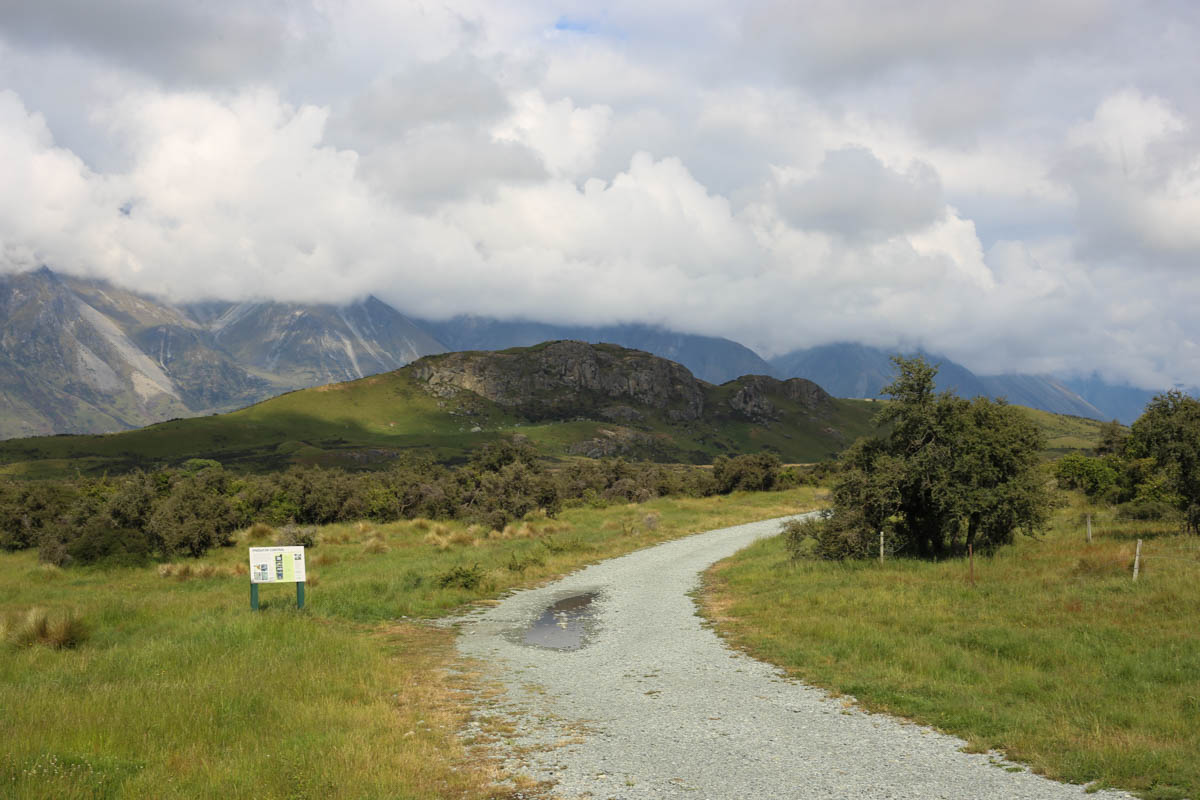















In our city-shopping mode, naturally, we asked just about every kiwi we could find which towns we should be checking out. One that consistently pops up, despite never previously being on our radar, is the small coastal city of Nelson. The phrase "If I could live anywhere else in New Zealand, it'd be Nelson" is not uncommon amongst the natives and it's hard to fault them. Nelson is situated on almost the exact opposite side of the South Island it enjoys a balmy climate (perplexingly as it's just south across the Cook Straight from the notoriously rough weather of Wellington) and is encircled by endless towering mountains and national parks (including the famed Abel Tasman park). Oh, and did I mention it's an absolute mountain biking mecca? Naturally, we had to investigate.
Now Nelson is a loooong way from Dunedin (10+ hours going the fast way) but it presented a good opportunity to check out some crucial parts of the country we haven't seen yet, namely the West Coast. We loaded up and took off right after work on a Saturday (had to make the most of my rugged 2 days on 5 days off schedule) and beelined basically right back the way we came in our last trip through Wanaka and over Haast Pass...We may be getting a little too familiar with all the routes through central Otago.
We made camp just over the top of the pass and at the beginning of the country's most scenic drives: the West Coast. It's 5 hours of New Zealand's most rugged and remote landscapes along this stretch from Haast Pass to Greymouth (the only thing resembling a city in the entire region), and it surpassed the hype. All along the West Coast, the Southern Alps descend from their highest points directly down to the Tasman Sea providing ceaseless, staggering panoramas around every bend. A highlight, as many people will tell you are the two main glaciers in the area that descend from the Mt. Cook highland areas. We took a little detour to check out the view up to Fox Glacier, it was particularly striking because the flora is quite tropical on the West Coast with palms and ferns in abundance, but you look across a valley and there is a gargantuan pile of shifting ice carving it's way thousands of meters down the mountain. That's New Zealand for you tropical and alpine all in one view.
After hours cutesy townships, remote parks, and secluded tropical beaches (enough to have us ready to come back and spend some more substantial time on the West Coast) we wound our way through the mountains to one of New Zealand's best-kept secrets: Nelson. If Dunedin's like Boulder then Nelson is like Golden. It may not rightly be called a "city" but it's a big enough town to have everything you need and then some. Indeed, while we immediately enjoyed the warm tropical breezes, light humidity, warm ocean waters (holy cow, how can the ocean be so much warmer up there?!), and mountain views the town had us seriously impressed. Walking around downtown had us debating if Nelson (at less than half the population) has a better food scene than the mighty Dunedin. It felt as though every little alley we walked down had a restaurant we wanted to try out, a key city selling point for a couple of gluttonous yanks like ourselves.
Being known as one of the country's top mountain biking destinations you can bet that I was going to line up some good rides while I was there. As my coworker from Nelson says of his hometown trails "It's all good, and there's a lot of it." Simple words that describe a simply great trail system. That said, I also encountered something I'd never seen before on these trails, "Forest Access Permits" for trail users. In practice, it means that the local mountain bike club has money to have a full-time digger for trail building and maintenance. But that also mean's that they're much more likely to carve up a whole mountainside to build a bermed out track. It runs pretty counter to my preferred system of grassroots trail development and view of cyclists as conservationists. That said there were still miles upon miles of handbuilt trails to satiate myself with, and I had only scratched the surface.
After a good couple days of camping around town, laying on the beach, hiking, riding, and debating where we were going to eat next, Nelson was looking pretty rosy as a place to hang our hats. Another key feature of this seaside town, it's cheap. All in, rents are low and jobs appear plentiful which means, unlike Wanaka, we won't need to have quite so many stars align to make the move to Nelson. The debate continues but I expect we'll head out to one of these two towns at the end of January.
In true road trip spirit you know we wouldn't just take the most direct route back home, right? Having previously knocked out Lewis Pass on our way down we figured we'd complete our tour of Trans-Alp passes and take the route over Arthur's Pass. Let me tell you, if you can only take one drive through the Southern Alps it should probably be the one over Arthur's. Much like Lewis and Haast passes the road winds up a river valley that tightens as you climb. But with Arthur's the valley closes in much tighter and you rise above treeline at the top; at one point a waterfall cascades down the roadside cliff hits a duct that then has it dump over the highway, pretty epic! It all culminates when you hit the viaduct at the top that is a serious feat of engineering swooping above scree fields as you clear the top of the pass. Oh, and once you're over it you'll enjoy a casual drive through the Craigieburn Forest whose lofty peaks are home to many of New Zealand's ski areas.
After a day of epic driving, we made camp at Rakia gorge which pretty much proves my point about the Blue Pools being overrated. The campsite sits in the gorge of a large, braided river with brilliant blue waters running over grey stones. No tourist trap needed! This spot also had the key selling point of being near a critical landmark: Edoras.
Now if you're like me, you believe that the most iconic scenes from Lord Of The Rings were the ones of Gandalf & Co galloping through Rohan over tussock covered landscapes with towering mountains shining in the background. So of course, I was excited to see the center of it all, the filming location for the capital, Edoras.
Be warned, if you go seeking this filming location it is in the middle of goddamned nowhere, but man is it worth the trip. We'd been driving up backcountry dirt roads for nearly an hour when we came over a rise and into the valley that overlooked the set. The set for the city itself was built on a small hill, called Mt. Sunday, in the middle of a wide plain surrounded on three sides by towering peaks. It immediately took the top spot for "most recognizable shooting location". We were glad to learn that LOTR fans are more than welcome to drive right on out there and climb to the top of Mt. Sunday to soak in the views from Theoden's (former) palace. On the whole, we were really impressed that they were able to build something resembling a city on that little hill, not only is it far from anywhere that could supply materials, but it was also incredibly steep. Just goes to show you the chutzpah of that went into making those films.
So here we are. Having city shopped probably as much as we will before our next move, changing to a week on week off traveling schedule, and enjoying the ever improving weather (and life) down in Dunedin. It's amazing that we're already three months in, time really does fly. That said, I'm pretty convinced it's just the summery weather down here that is saving us from real holiday homesickness. Somehow, seeing Santa decorations along the palm-lined beach doesn't beckon "home for the holidays" in quite the same way. Thanks for reading, hopefully that good god Ullr decides to hook you Coloradoans up with some good snow here soon!
Our Route:
Tips For Prospective NZ Travelers:
- The West Coast is known as a stellar drive, but it's an even better place to explore. Leave plenty of time to camp, hike, maybe even helicopter while you're there.
- Arthur's Pass is without a doubt the most scenic pass over the Southern Alps. If you can only do one, do that. Plus the drive down through Craigieburn is insane.
- Rakia Gorge campground is a fine example of what all private campgrounds should aim for. If you're in the area, stay there.
- If you're riding in Nelson you will want to get a forest access permit, and you may not see signs till you're well out on your ride. Love the system or hate it, it'll be best to snag a permit from a local shop right when you get to town.
- Ride the Dun Mountain Trail counter-clockwise (starting at The Brook and ending at the Maitai Reservoir)...I learned this one the hard way.
- The Brook campground is the better site in Nelson for mountain biking, the Maitai site is good but not quite as well located.
- Don't trust New Zealand Mexican food ever...We're pretty much ready to swear it off at this point.
- The Running Duck in Geraldine. It's in the middle of nowhere, and it has New Zealand's best burger. The gauntlet. has. been. thrown. down!
Into Misted Mountains
After settling into our new home we struck out westward into Fiordland National Park to some of New Zealand's most staggering scenery.
Horses, seals, penguins, and fiords oh my!

















































After a week of settling into our new hometown, we were ready to hit the road once more, and it was Meredith's birthday to boot. As such I wanted to line up an unforgettable trip on the far side of the South Island to get involved with some of the most iconic landscapes in all of New Zealand, in the aptly named Fiordland National Park. The park itself is an absolute wonder, one of the largest national parks in the world (and by far the largest in New Zealand) it covers the entire Southwest corner of the country, all of which was sculpted by glaciers in the last ice age. Think Norwegian coastline, only less cold.
So we packed up our trusty RAV and struck west across the island. The heart of Fiordland is a small town called Te Anau, which is about 4 hours drive from Dunedin. Given the surprise nature of our agenda, we didn't head straight there and instead opted for a night of camping beside the Mavora Lakes about half an hour out of town. Boy, did that pay off. Mavora Lakes will likely be one of the best car camping spots we encounter, you can tell it's good when the camp is occupied by Kiwis rather than rented campervans. These two lakes are surrounded on almost every side by peaks rising above bush line. The lakes are also home to the most instantly recognizable LOTR filming location we've seen thus far, Nen Hithoel, the place where Frodo and Sam split off and row away at the end of the first movie. See pictures above for movie/real-life accuracy. So we found ourselves a camping spot on the shores of the crystalline lake and had a proper birthday dinner under the stars.
The next day we were packed up and out early for the first real surprise of the birthday trip, a morning horse trek outside of Te Anau overlooking the stunning mountains of Fiordland. We saddled up on a (lucky for us) private trek with the Kiwi equivalent of John Wayne, who just happened to realize that making money off of horse-crazy tourists is more profitable than raising sheep in his neck of the woods. The sheep he kept were mostly for decoration. The horses, thankfully for me, didn't need much input from their riders and took us on a lovely cruise over hills and around small ponds treating us to truly epic views at every turn. One particularly breathtaking view looked directly up Mount Luxmore, the centerpiece of the world-famous Kepler Track, our guide kindly pointed out that it's actually a good time of year to do the hike since the snow is melted but the masses haven't quite shown up for summer yet. So our morning horse trek planted the seed for our next adventure.
With a bit of soreness in the thighs, we dismounted and headed into Te Anau for lunch. The town sits beside Lake Te Anau (one of the country's largest) and is just about as picturesque as one could imagine. After a viewing of the jaw-dropping Fiordland On Film (basically 30 minutes of helicopter-shot footage of the inaccessible parts of the park) we hopped in the car and headed north along the lake on the hunt for a campsite.
Unbeknownst to Meredith our destination the next day was the iconic Milford Sound so we made camp at a large site up the highway to Milford. Past the northern tip of Lake Te Anau you enter the Eglinton Valley, a glacier-carved (of course) affair with soaring walls that mixed in beautifully with low hanging rain clouds. It was a great place to stay and an even better place to wake up in as we watched rainbows form all around as rays of sun slipped through the morning mists. But it was all just a taste of what was to come.
Milford Sound, if you don't already know, is one of New Zealand's largest tourist attractions. It is the only fiord accessible by road and for all the hustle-and-bustle going in and of there these days it will always be a truly iconic landmark. For us, the drive in was half the experience. Entering Milford will never be done justice in words, all I can do is liken it to driving into Zion National Park. It goes like this: the scenery is incredible, you drive through a scary old tunnel, and then you pop out into a canyon of such incredible scale it's all you can do to keep the car on the road and your jaw off the steering wheel.
A less enlightened version of me would have been very content with the stunning drive to and from Milford. But that version of me wouldn't have taken a sightseeing cruise on the sound itself. Having had the experience I can tell you a cruise is absolutely requisite if you're in this part of the world. This was the second part of Meredith's surprise birthday trip, and we were actually able to score a sweet last minute deal on a cruise that needed to fill seats. Suffice to say it may have been the best 80 dollars I have ever spent.
We wound up cruising with Mitre Peak who operate the smallest regular tour boats on the sound, there was plenty of space and a crew who was seemingly just there to gape up at the scenery alongside you. Out on the sound, all signs of humanity melt away. Mountains pitch down from snowcapped peaks high above bush line right down to the sea. Milford winds its way back and forth from the township out to sea, and each turn is stacked with views more impressive than the last. Wildlife? They have that too, in droves. Seal colonies to dolphins surfing off the bow of the boat to our first successful penguin spotting of our trip!
At the end of our cruise, we were awe-struck, giddy, and a little concerned we had gone too epic too early. Worried, that other scenery simply wouldn't hold up to the staggering scale of Milford. Well, the natural cure for that worry is to hatch an even better plan for the next week...
In before the rush.




































Following our recent bout of inspiringly good weather in Fiordland we returned home to reprovision and gear up for an early-season attempt of the Kepler Track. This track is one of New Zealand's "Great Walks" (basically a series of epic multi-day, hut-based trips around the islands) and according to many Kiwis is actually the best. It certainly was the most intentionally built to be a flagship. To mark the centennial of the country's parks program they built this track as a 4-day adventure that does a handy loop right from the Te Anau Visitor's Center. It climbs up and around the mighty Mount Luxmore spending almost half of its length circling above treeline. So we thought it sounded like a perfect first backpacking experience for Meredith.
The trick was timing. Kepler is an extremely popular hike and the huts along the route book early and can be very expensive. However, because we were still in the off-season normal rules went out the window. In the winter the huts are cheap and first-come-first-served, but you take your own risks with weather and avalanche danger in the high country. Factors that at least for us, this late in the off-season proved to be a little overblown. Nonetheless, we called Anja the friendly German DOC worker at the Visitor's Center pretty much every day to get the latest weather reports. The weather held for us and operation Off-Season Kepler was a go.
We loaded our packs a bit more decadently than I'm accustomed to while backpacking for a couple reasons. 1, using the hut system is awesome so things like tents, sleeping pads, and water filters (a concept my desert-hiking self is still struggling to come to terms with) got to stay behind. And 2, Mere wanted to prove what a boss she is by taking a full-size, fully-loaded pack on her first expedition. So we had a little extra space for things like wine and fancy cheese, the camping high-life did not end when the hiking began.
Day one on the Kepler is actually when most of the climbing is done on the track. You take off from the dam on the southern tip of Lake Te Anau and begin your morning with a lazy walk on a glorified sidewalk of a path through the beech forests by the lake until you reach the Brod Bay campground for a bite of lunch. The truly lazy can actually skip this part by taking a water taxi across the lake, but where's the fun in that?
From Brod Bay, you head straight up the mountain. Winding your way through the dense beech forest can actually be a little disheartening because while you're constantly climbing it's tough to actually get a sense of how much elevation you've gained. Meredith quickly learned that the best way to power through was to hike to the beat of (variably) 'Staying Alive' and 'Another One Bites The Dust'. With good climbing techniques in hand and good weather on your side, we powered our way up the hill in surprisingly good time to the most stark and stunning treeline I've ever seen. In Fiordland at about 950 meters the trees, bushes, and ferns stop all at once giving ways to sweeping vistas across the lakes and peaks of the park. It really was a sight to behold. I am now thoroughly convinced that this crazy low treeline (950 meters is about 3,100 feet) is actually New Zealand tourism's greatest asset. These mountains wouldn't be quite so stunning if they were all covered in trees to their peaks.
From treeline, it was just a quick jaunt over open ridges to the Luxmore Hut. Arguably the New Zealand hut systems premier edifice. Holding about 50 bunks and a huge kitchen/common room it really felt more like the world's most scenic hostel with its views over the lake. A feeling aided by the fact that we were far from the only people getting in before the track went on-season. We shared the hut with a host hikers from all over, including our first hiking companions Tim and Daniel, a Kiwi and Brazilian duo from Auckland out doing a bit of exploring in their own backyard.
If day one gave Meredith a misconceived notion about pack weight, day two gave her bad intel on how early backpacking expeditions typically strike out in the morning. Due to some early swirling storms we slept in and had a lazy breakfast and hit the trail around 10:30, not my normal course of action as people who hike with me well know. Be that as it may, it was perfectly timed because we got nothing but blue skies and light breezes on New Zealand's bellwether day of hiking.
You see, day two on the Kepler is the crossing that wraps around the summit of Mount Luxmore and down into an adjacent hanging valley. It is the section where winter traveling and weather can be the most precarious, so we were mighty thankful that the skies were clear of clouds and the track was clear of snow. With the bulk of the climbing behind us, we were treated to a stunning day with views that our pictures will certainly fail to do justice to at every turn. We made such good time at the outset we even took a side trip to summit Mount Luxmore (at 1,472 meters high we were out there baggin' 14ers baby! Pay no attention the fact that, that translates to 4,830 feet). This side trip also brought on our closest encounter with the local Kea- smart as hell, mischevious high mountain parrots- who broke into my pack for some snacks but had the courtesy to stay around for a photo shoot afterward. The worst you'll ever hear locals say about the Kea is that they're 'cheeky-as', sure cheeky enough to steal your shoes and hold them ransom for nibbles of your scroggin.
After a stunner of a day wrapping around the mountain, we took our final break in the ridiculously positioned Hanging Valley Shelter. It clung to a knife ridge and looked squarely at the long track down to the next hut on the valley floor thousands of feet below. The descent was honestly more brutal than the climb the day before but fortunately, most of the crowd had turned back at Luxmore Hut so there was no rush to scurry down the mountain.
While Kepler may be designed as a four-day trek it is doable in three if you're willing to get creative. That was our plan, however, it did mean that we had about 22 kilometers to cover on day three, fortunately, the trail mellowed considerably that day as it simply wound down a valley to the nearby Lake Manapouri. We got up and at it early and made great time hitting the next hut on the track just a little after noon. When we got there we saw the value of staying a third night as the hut sits right by the lake with a beautiful beach available for all weary hikers. If we had been doing the trek in summer this would've been a great place to stop and have a beachy afternoon.
Nevertheless, we soldiered on the extra hour or so to the first exit point on the track alongside our hiking companions Tim and Daniel. We ended our first epic trek crossing the beautiful Rainbow Reach suspension bridge with weary feet, new friends, and big ol' grins on our faces. A quick hitchhike back to Te Anau put us back just in time for some celebratory pizza and beers to mark a hike well done.
Our Route:
Tips For Potential New Zealand Travelers:
- Straight up, you can't go to Milford Sound and not do a cruise. We got an easy deal and I think it was the best $80 (for two) that I've ever spent.
- If you're looking for a campsite on the way up to Milford Sound save yourself some driving around and go straight to the Cascade Creek site. It's the best, has great facilities and even better views.
- Thinking about doing a lot of backpacking using the wondrous New Zealand hut system? Buy a DOC Backcountry Hut Pass right away. It's 90 NZD for 6 months of unlimited use of most DOC huts (doesn't apply to most 'Great Walk' huts in season, but there's still a ton to be enjoyed), so you'll offset that quickly with huts averaging $15 a night.
- Take the advice you get from DOC workers with a grain of salt, they have an incentive to get you to do the Great Walks in season. They won't recommend many other awesome routes, and may overhype dangers of doing the walks off-season.
*Disclaimer: This is just in our experience. We did the Kepler Track about a week before the season and were heavily warned of "moderate" avalanche danger...there was literally no snow on or around the entire track. - Looking for post-hike pizza in Te Anau? Ristorante Pizzeria Paradiso is what you're looking for, don't bother with anything else.
Welcome, This Is Our Farmhouse
After our epic-country spanning road trip we did a little local journeying and settled into a farmhouse by the sea.
Can't find a place to live? Screw it, go camping.


































In all honesty, house hunting did not (at first) go terribly smoothly in our new hometown of Dunedin. Perhaps it was excessively optimistic to think that people would be trying to fill rooms mid-term in a college town. So, after several uninspiring days of hunting and burning money at Airbnbs, we decided to do what we do best and take to the country.
Thankfully, Meredith was chomping at the bit to one-up my kick-off road trip planning and laid out a stellar four-day trip around our new backyard. Whatsmore, thanks to lessons hard-learned on the road down here, and a little help from the awesome blog Fresh Off The Grid (seriously if you're going car camping check these guys out), she was also able to seriously step up our campsite culinary game.
So off we headed deep into the heart of Southland to likely the most remote campsite we will be able to access by car, Piano Flats. It was a stunning site, isolated, surrounded by lofty peaks, banked by a crystalline stream, and absolutely fucking overrun with sandflies. Surprisingly, this was our first encounter with the little bitches (we've since learned that the carnivorous ones are the females so yeah, bitches.) and we were caught completely unprepared. Hence we learned an invaluable NZ lesson: bring good bug spray with you everywhere you go.
On the optimistic side, sandflies: don't make noise when they fly around, don't have any interest in your food, don't hurt when they bite, and go to bed at night. On the negative side: they're everywhere, they want to eat you alive, and according to Maori legend they were created by the goddess of the underworld to remind people of their own mortality (a theory we now wholeheartedly endorse).
On the whole sandflies and rain had us beating a speedy retreat from an otherwise epic camping site to head back to Gore (the apparent 'Brown Trout Capital Of The World') to arm ourselves for these new conditions and regroup before we headed to our next spot on the Dunsdale Reserve.
Dunsdale in many ways embodies the beauty of camping in New Zealand to this day. A beautiful, isolated spot, hiking options right by, no fees, and not another soul to be found. It's this ease of access to peaceful isolation that I think will have us constantly heading back into the wilderness all throughout our time down here.
From Dunsdale we headed the scenic way south through an area that's mostly off the beaten track despite being basically on Dunedin's back doorstep, called The Catlins. This wildlife reserve encompasses some of the country's densest temperate rainforest and actually surrounds the southernmost tip of the island. We were a little early on the season for The Catlins so we got an especially solid dose of the RAINforest aspect, but the beauty was inescapable.
We saw the scenic vistas on Porpoise Bay, hiked the many-tiered McLean Falls, got very familiar with the small town of Owaka (and it's chief tourist attraction Teapot Land), checked out the seals at Nugget point, and proved the value of a New Zealand Automotive Association membership. It was an awesome couple of days, as I'm sure you'll see in the pictures, but most of all we're excited to head back in the heart of summer to see a whole new side of this remote area.
Our house, in the middle of a farm.









In all, it seems as though taking a quick camping trip was just the right balm for our lack of housing burn. Upon returning to Dunedin we trekked out to a suburb called Portobello on the Otago Peninsula to a farmhouse with which we promptly fell in love with and immediately moved into.
Otago Peninsula itself is a sight to behold. Dramatic green hills wind into Otago Harbor with remote beaches and endless rare wildlife from Dunedin to the albatross colony at Tairoa Head. Portobello township lies about 3/4 of the way out, and as my boss warned me ahead of time it takes about twice as long as you would think to drive into town on this side of the harbor. That's because the drive out is an absolute hoot. Two lanes barely 5 feet above the surf, winding back and forth along the shoreline. I'm sure we'll eventually get sick of it, but not quite yet.
We moved into an old farmhouse right on the water just outside of the Portobello township with a northlander named Gavin. He's a 28-year-old physics doctoral candidate at the University of Otago, and as we like to say he's 28 going on 68. The man could not be a more classic farm man if he tried, but goddamn if he doesn't know how to keep a nice home.
The home itself is simple. Heated by a log-burning stove, with windows facing the harbor, and positively surrounded by flocks of sheep (the lambs of which you may have seen in recent videos) it is a New Zealand farmhouse to the umpteenth degree. Classical music plays over the radio as the sun streams in through the large windows. A place more given to reading, drawing, and making large meals than it is to watching TV or browsing the internet, it is undoubtedly a peaceful place to live.
Tourists In Our Own Hometown.














With our first proper time off since landing in New Zealand Meredith and I decided it was time to give traveling a bit of a break. So, we played tourist in our new hometown. That meant doing the classics like visiting the public art gallery, having wine and cheese night in the botanic gardens, taking a million pictures at the famous Tunnel Beach, driving the world's steepest paved street (holy shit they weren't kidding, we were legitimately concerned the RAV might not make it up), and spending a good deal of time exploring the coves and vistas of the Otago Peninsula.
But we also did some local exploring while we had the time. We visited the nearby Waipori Falls and the neighboring town of Mosgiel. Suffice to say, while coastal Otago may feature prominently in many guidebooks it is a striking, and stunning place to call home.
Our Route
Tips For Prospective New Zealand Travelers
- You've heard it before. Sandflies are here, they are a problem, don't get caught out without insect repellant.
- If you're buying repellant in NZ pharmacies are the places to look, rather than grocery stores or gas stations (bonus: they'll also have anti-itch cream if you ignored tip #1).
- The bucolic green grass of many campsites is tempting for Colorado campers like us, but these fields aren't always the best spots. Look for elevated patches under trees to stay dry.
- Joining the AA (New Zealand Automotive Association) will save you if you're driving around an old beater like us. Buck up and spend the money, their response time is insanely fast even in remote areas.
- If you'd like to get a New Zealand drivers license while you're down here so you don't have to carry around your passport to get drinks make sure it was issued more than 2 years ago, otherwise you'll need to get a copy of your driving history from the DMV (aka. a living nightmare).
As Far South As South Goes
We kicked off our New Zealand adventure with a trip to the south, the deep south. All the way from Auckland to Dunedin.
A Few Days In Auckland To Get Us Started





Our adventure began with likely the easiest international flight we will ever experience, no joke. Meredith will be sure to expound on the virtues of the Air New Zealand Sky Couch to all within earshot, for good reason. We slept a solid 9 hours of the flight, leaving just enough time to drink a few free Steinlagers, watch a movie and fill out our customs forms. The funny thing about flying around the world, at least this way, is that between sleeping on the plane and a 6 AM arrival time, you weirdly wind up back on the right schedule.
The first 5 days off the plane were to be spent in Auckland with two major points on the agenda: sightseeing, and (somewhat more critically) car shopping. On day one we really proved that while Auckland may have unparalleled levels of suburban sprawl you really can walk around most of downtown in one day. We shacked up with the Airbnb hostus-with-the-mostus, Phil. A designer whose company and trendy place in Grey Lynn made us question why we were in such a rush to get out of the city. On our sightseeing adventures, we got some good time down by the harbor, checked out some sweet art galleries (including the stunning Toi o Tamaki gallery with Phil), and (unsurprisingly) fell in love with the Ponsonby neighborhood- Auckland's RiNo Arts District (TM).
Unfortunately, a good portion of our time in Auckland was spent in used-car-buying hell. We spent a truly unseemly amount of time learning the city's transit system as we visited far-flung suburbs around the area on the hunt for my ever-sought-after Toyota RAV4. I'll spare you the nitty-gritty details, but after rounds of test driving and mechanic inspections we bought a beautiful, cerulean 1995 RAV; we named her Baarbra Ann, and she has yet to miss a beat.
With our new whip loaded up with our heaps of bags (how exactly does one pack for a year of traveling?), it was time to bid the big-city adieu and begin our trek south.
A Verdant Route Down The North Island

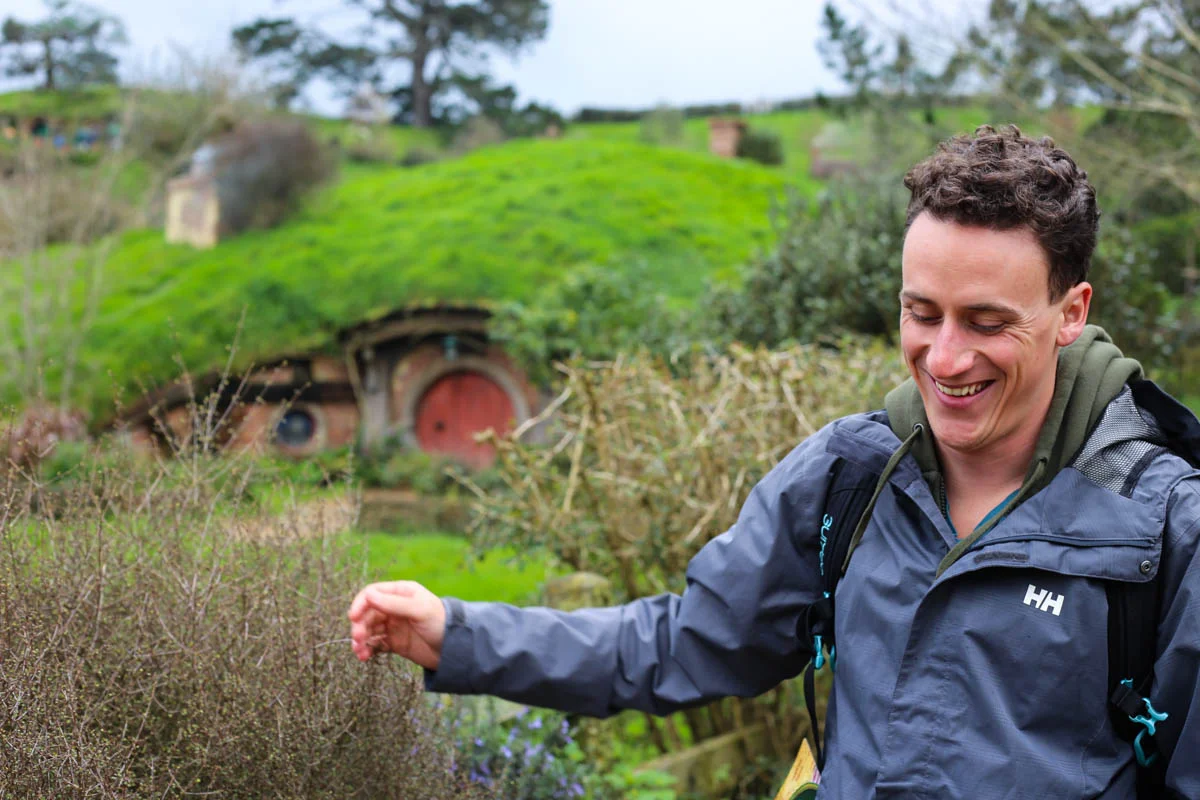
































































First stop, naturally, for any new kiwi explorers. Hobbiton. Yes because we had to, and yes because it was awesome, but also because we weren't sure we'd make it back that far north in our travels. The movie set is just an hour south of the city so it made a pretty good first stop. They have that place running like a clock. Coach buses cart tours on the half hour to the guided jaunt around all the hobbit holes, where you sadly learn that, yes, it is just a movie set. Not much more than a bunch of round doors stuck in the hills. For all that, though there were great touches around every corner, and we got to learn how much of dick Sir Peter Jackson really is on set (Meredith says "he's just PARTICULAR!"). At the end of the tour, they bring you into the immaculately done Green Dragon Inn for a pint of their exclusively brewed beer. We stepped into the inn right as it started pissing down rain, which really added a nice touch to the experience.
Our first night out of the city we decided to ease into the whole camping thing and stayed at the Waikite Hot Springs outside of Rotorua. A mistake, it was not. Turns out September really is winter still in New Zealand and things got a bit chilly. Luckily our tent was pitched next to steaming pools for us to chase away the chill in.
The next day we took a true turn off the beaten track as we headed through Te Urewera (Maori for 'burnt penis', no joke) National Park. This little escapade took us into some of the North Islands highest mountains and past a truly spectacular lake. It also took us far away from sealed roads, into the depths of an unreal hailstorm, and into a full appreciation for our trusty new 4wd whip. I foolishly had thought we might actually be able to camp up there, but the reality of weather sent us quickly scurrying for lower elevations. In all, we wound up at the gorgeous Lake Tutira Campground (arguably the best campsite we've visited) where we got to look back at the snowy mountains rather than sleep in them. Let's chalk that up as a win.
From Tutira we blazed trail south through Hawke's Bay and down to the southern tip of the North Island. After a quick visit to the Martinborough wine region, we headed to the Putanguira Pinnacles. Ya know, the place where Aragorn walked into the mountain to meet the army of the dead? Yeah, we were picking camping spots based on LOTR filming locations - what of it?! It was a cool spot where we earned a healthy amount of respect for the amount movie magic can accomplish (read: it looked nothing like the movie). It all kind of paled in comparison to the next day though where we went to the true southern tip at Cape Palliser and Meredith had a chance to enter seal nirvana with the local colony. It's not every day you get to see seal pups splashing around in a tide pool, the lighthouse in the background was just for bonus scenery points. After that, it was off to lunch in Rivendell (shooting location) where we gained even more respect for movie magic and a fair bit of wonder at the NZ governments willingness to say "Sure Peter, you can cut all those trees down for that shot". Basically, it was sightseeing until we headed to our Airbnb in Wellington.
Wellington, well what can I say? Meredith will tell you it's like if Seattle and San Francisco had a kid, but that kid was a little person. We loved the harbor town in the short time we were there, and we'll likely head back at some point. Very scenic, very hilly, with a ton to see and do in a very small space. We headed out to the (kind of bogus) Weta Workshop tour to get even more of our LOTR nerd on. But even the guide there pointed us in the right direction to Te Papa, The Museum Of New Zealand, where the latest exhibit Gallipoli was causing quite a stir.
Us uneducated yanks quickly learned that Gallipoli was kind of the breaking point for New Zealand and Australia from the British Empire during World War I. Where poor decision-making by British generals cost thousands of Kiwi and Aussie lives in an ultimately pointless, and failed, campaign. To bring this story to life the team at Weta took stories from the battle and recreated the soldiers in stunning detail. And at three times human size. In each room , you'd marvel at these physically larger than life sculptures as their story was told. Even for two people who'd never even heard of the battle it was a powerful experience, and the best museum exhibit either of us had ever seen.
We filled the rest of our time in Wellington sampling local craft brews, putting the finishing touches on our camping supplies and getting ready to take the ferry south.
Sunny Days On The South Island





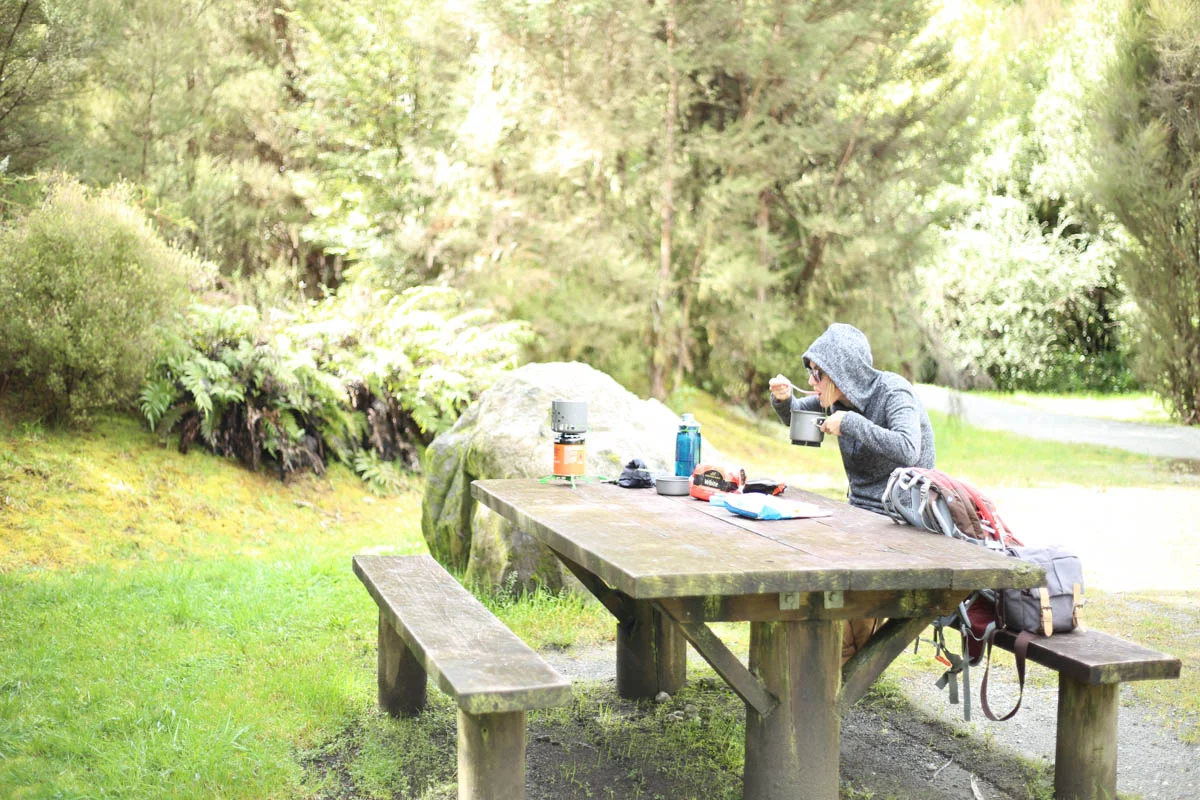







The Cook Strait ferry crossing is quite the experience in itself. We booked on the early morning sail and arrived with Baabs loaded before the sun was up. The ferries are huge so they'd spent hours before loading passenger cars putting a line of semis onto the parking decks. We just zipped right on and headed up to the passenger deck for the crossing. We luckily got a very calm day with only enough clouds to add a little visual interest to the view. The crossing takes 3.5 hours and only a little more than an hour of which is actually out in the straight, turns out it's not that far between the islands and ambitious folk swim it like the English Channel. The rest was spent navigating the lovely Wellington Harbor, and more notably cruising the awesome Marlborough Sounds to Picton.
After stocking up in Picton we headed into Marlborogh Sounds National Park proper for a doosy of a drive and some spectacular views. Getting anywhere in the sounds takes way longer than one might think when looking at a map, as the roads wind endlessly down the walls of the glacier-carved sounds. Not that we minded, the views around every bend were unreal. Unfortunately, after a clear morning, a heavy storm moved in which sent us running to a backpackers hostel. On the plus side, we wound up in the lovely Mistletoe Bay with a whole house to ourselves and a fire to cozy up by as we thanked our lucky stars that we decided not to brave the rain.
The next day would likely be the most stunning drive of our road trip south. From all the way up in the sounds (basically the northernmost tip of the island) across the Southern Alps and down to the little mountain town of Hanmer Springs. The morning was spent traversing the famous vineyards of the Marlborough region as they reached higher and higher into the hills. A quick lunch at some roadside falls, and we drove up and over the range nearly all the way to snow line before heading to Hanmer for a little warmer camping.
In the morning we got back on the road and strategically took the scenic inland route avoiding Christchurch for more epic vistas of the snowy mountains and VERY Rohan-ish plains. We were really putting the pedal to the metal in trying to keep to our timeline, so mostly we were driving, soaking in the sights, and making pages of notes on trips we would make once we had our home-base setup.
Finally, after two weeks on the road, we arrived at our new hometown of Dunedin, Otago. A college town at the end of the incredibly scenic Otago Harbor near the southern tip of the island. It's a fun town surrounded by stunning (albeit cold) beaches and rolling hills, plus it puts us in a great place to venture around the South Island on long-weekend trips.
So, that's the plan. Work a couple days in a row and then get out of dodge, taking 3-4 day trips to every corner of the island. We'll be taking plenty of pictures along the way and my goal is to keep you updated about every two weeks with where we've gone and what we've seen. More to come very soon!
Our Route
Tips For Prospective NZ Travelers
In case (by some miracle) you stumbled upon my blog and are traveling to New Zealand, here are some insights we've learned along the way:
- If you're on a Working-Holiday Visa, really all you need in hand is your visa to get through customs. Even then it's all computerized so you might not even need that much.
- In customs, you'll hear that they want to take a look at your camping equipment. Declare it all, even if they bring it in for further inspection it only takes like 20 minutes. Also, pack it so it's easy to take out.
- Ubers are WAY cheaper than taxis here, at least in Auckland and Wellington where they currently operate.
- Kiwi Bank will let you open an account from them while overseas, and while it is a pain in the ass it's actually easier than doing it once you're here and have no permanent address. Sidenote: Kiwi Bank is a branch of the NZ postal service so all their branches are in Post Shops, it's weird but actually really convenient.
- When you do need to have items sent to you while you're moving around you can do counter delivery at NZ Post Shops. It works quite well actually. I did it to get my ownership paperwork for the car, worked like a charm. You can even pick a post shop for a place you will be and just roll in when you arrive.
- It takes way longer than you'd think to drive anywhere. Add 1.5-2 hours to any day-long drive from the Google Maps estimate.
- Related, download all of NZ map data to your offline Google Maps while you have wifi. You won't have service in many places.
- September is still winter down here, it will be rainy and pretty cold. Duh.


